admin
Staff member
Ruroc ATLAS 4.0 Carbon Helmet Review Summary
Review Summary
Ruroc’s latest makeover of their ATLAS line of helmets sports a tier list with unique features at each level. The ATLAS 4.0 Carbon line of helmets exceeds ECE 22.06 certification standards with the help of RHEON impact technology stitched into their headliner. The edge-to-edge 215-degree horizontal FOV visor offers an unrestricted view of the road ahead when it isn’t fogged up. Hot air is stripped from the helmet from 4 vents up front and a dual exhaust at the rear. Unfortunately, the notoriously loud side intake vents are back and as noisy as ever. The Shockwave compatibility is seamless and is a good value when included in your purchase.
Build Quality / Protection
Size, Fit & Comfort
Design
Visibility
Ventilation / Noise Management
Features / Value for Money
Pros
DOT FMVSS 218 & ECE 22.06
Industry-first RHEON technology integrated into the headliner
Badass design with loads of color/helmet wrap options
215 Degree horizontal FOV
Great airflow with vents on the face and sides of the chin bar, brow, and dual rear exhaust
Seamless integration of Shockwave Bluetooth Audio System
Cons
Shell feels oversized with poorly designed aerodynamics
The face shield fogs up easily without a Pinlock insert (not included)
Side intake vents make for a noisy ride
Value for Money is low when not on sale/part of a promotion
The helmet wrap scratches easily
3.9
Ruroc ATLAS 4.0 Carbon Helmet Image Gallery
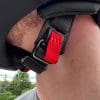

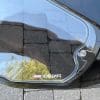

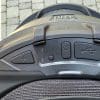

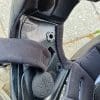

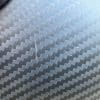

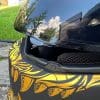



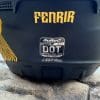



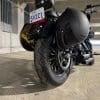

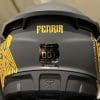

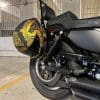

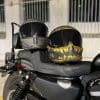

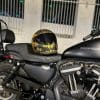

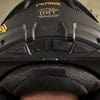

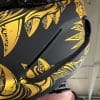

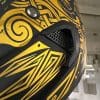

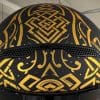

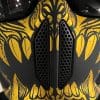

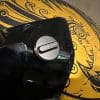

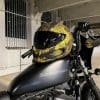

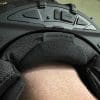

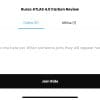

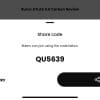

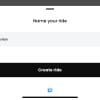

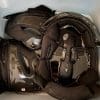

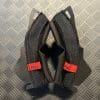

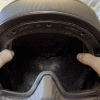

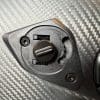

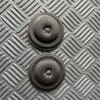

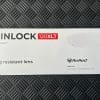

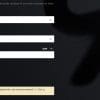

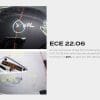





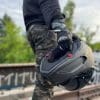

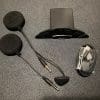

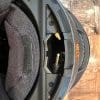

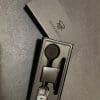

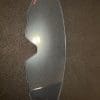

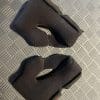

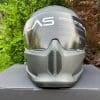

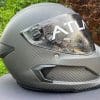

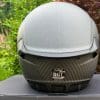

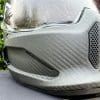



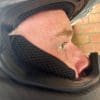

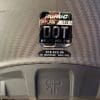

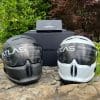

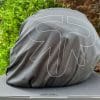

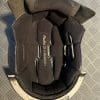

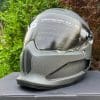



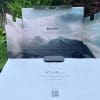

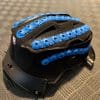

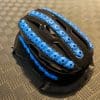

Buy Now
Ruroc
If you’re looking for the main takeaways from this review, here is my summary on the ATLAS 4.0 Carbon helmet:


I was scrolling through Instagram on one particularly uneventful Sunday evening when I came across an advertisement for Ruroc. For the first time that I can recall, I fell prey to the ad and clicked the link. The next thing I knew I was browsing Ruroc’s website looking at everything from helmets to hoodies and all the accessories in between.
Damn you targeted advertising!
On second thought, maybe it was a good thing that the ad had reached me. If you’ve been with us for some time now, you’ll know that we are no strangers to Ruroc. Jim Pruner, an author/reviewer for webBikeWorld, completed a review on the Ruroc ATLAS 3.0 back in 2021.
Since then, Ruroc has released the ATLAS 4.0 back in February 2022. It was promised to come with a heap of exciting new changes over the previous generation.
With a positive score from Jim, I was eager to try it out for myself. Read on as I take you through the last 6 weeks of testing this lid to find out if the ATLAS 4.0 is all that it’s made out to be, or if it’s the product of well-thought-out marketing hype.
The ATLAS 3.0 received a good score from Jim with his biggest complaint being how noisy the helmet was in turbulent air. Even though the troublesome side vents are still incorporated into the helmet’s design, Ruroc claims that the ATLAS 4.0 helmet is 57% quieter than the 3.0.
Another concern with the 3.0 was the helmet’s ability to vent hot air. Claims have been made that the 4.0 has better ventilation than its predecessor. This may be one of the changes I was most excited to test as it can easily be the deciding factor for many on whether or not they like the helmet.
Last, but certainly not least, Ruroc has stepped up their game big time in terms of safety. The ATLAS 4.0 is now ECE 22.06 certified and sports a first-of-its-kind RHEON interior lining. More on that later!
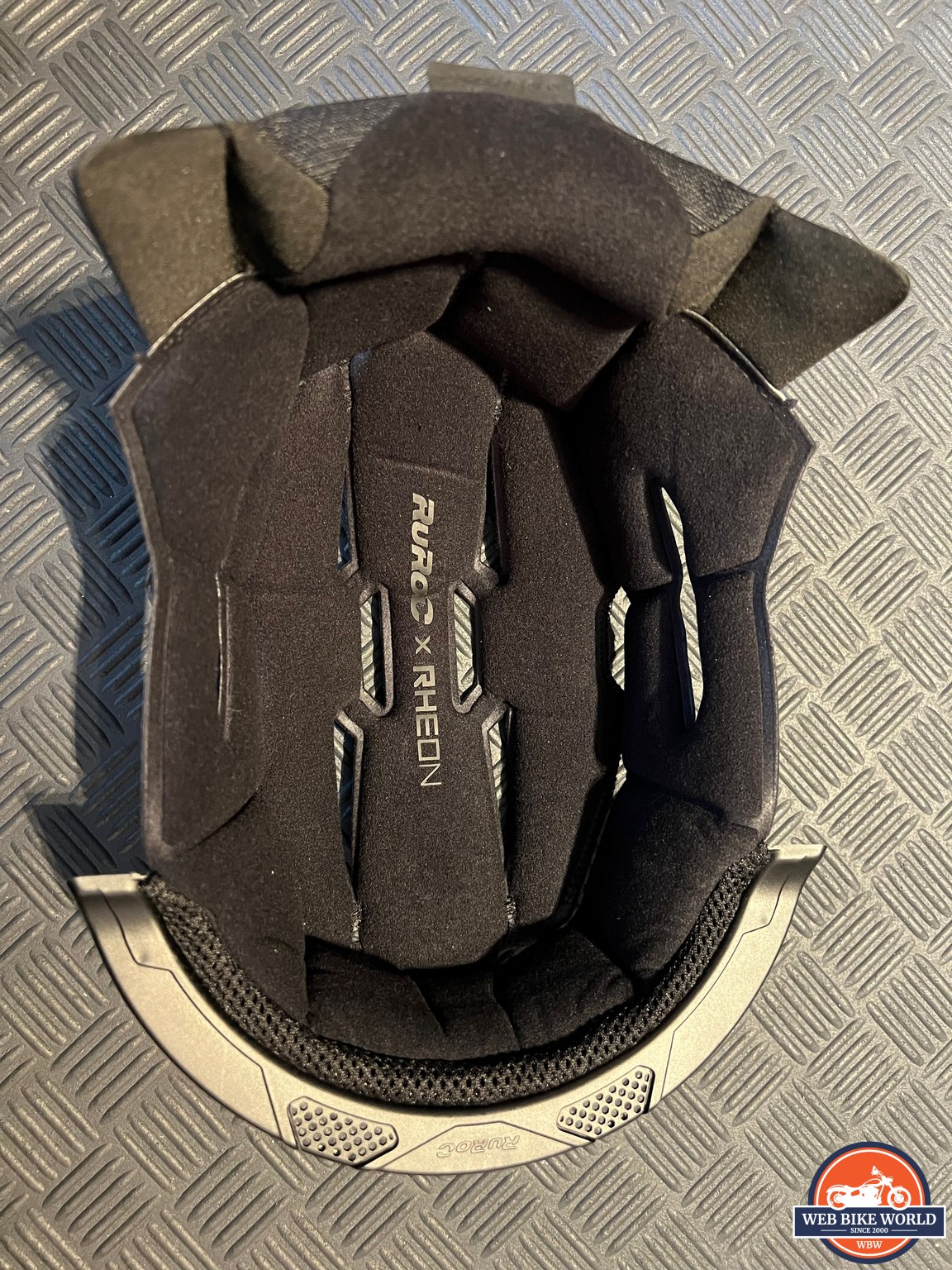

My first impressions of the ATLAS 4.0 Carbon are a mixed bag. On the one hand, the helmet is absolutely stunning. Everything from the helmet design, the helmet bag, and even the box it ships in, screams premium. Visually, Ruroc has knocked the ball out of the park.
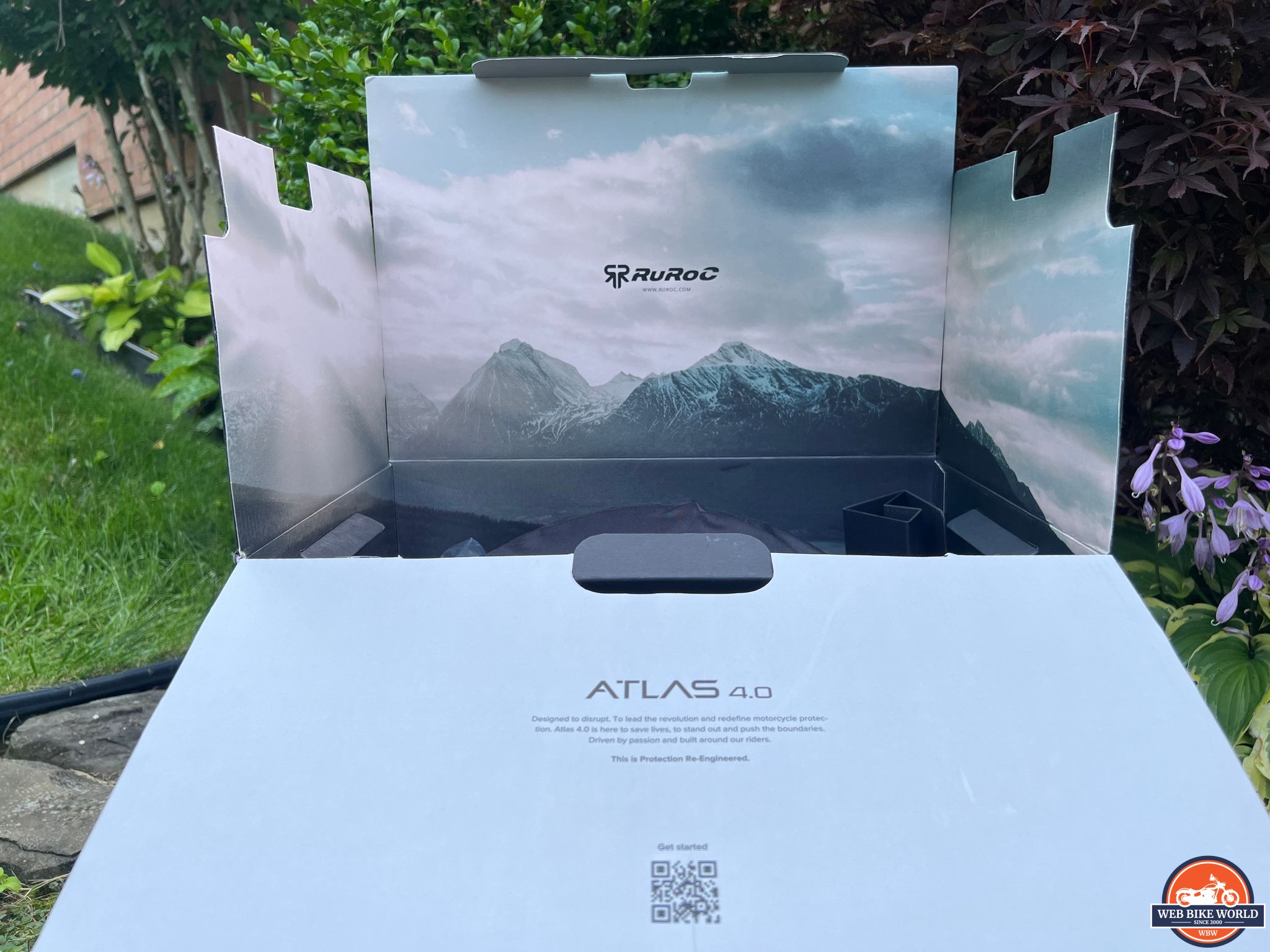

On the other hand, the helmet did not meet my expectations on my first ride. I immediately noticed a lack of aerodynamics as my head bobbed in a light headwind. What was apparent to me a little while after was how noisy the helmet was.
Was I just used to riding in my Scorpion Covert FX? Possibly, but I wasn’t going to write off the ATLAS 4.0 just yet. I’ve been far too eager to test this helmet to let one ride sway my opinion and as such I remained optimistic.
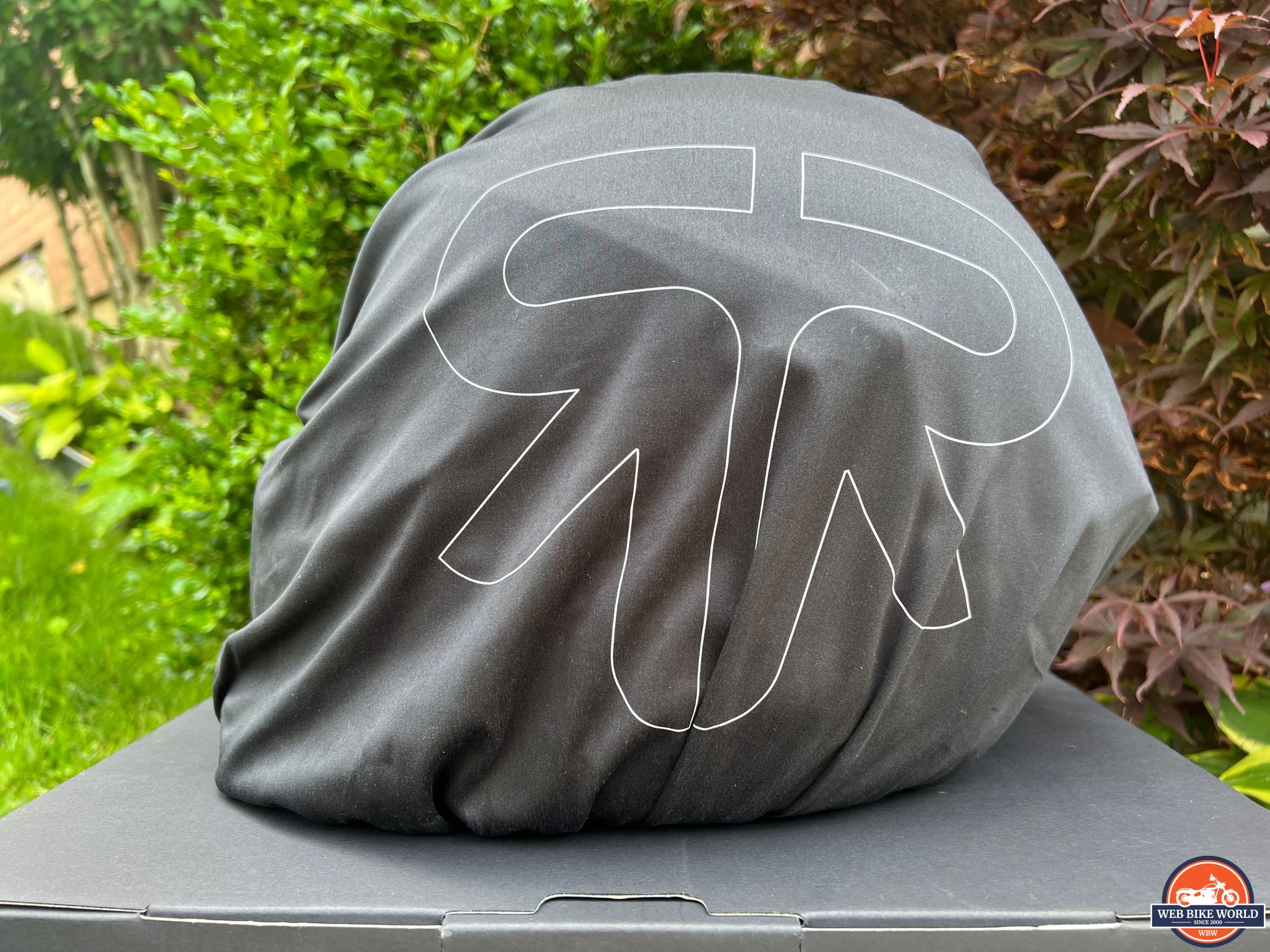

Ruroc has restructured their helmet offering into a tier-based system. They currently have 3 tiers of helmets:
The Street being their “entry level” line, and Track being their “premium” level of helmets, and the Carbon nestled right in the middle.
Each helmet tier comes with its own unique set of features and specifications, as well as a jump in price.
Throughout this review, I have been wearing the ATLAS 4.0 Carbon. You’ll notice I periodically mention Raw Carbon. Please note that this is a design/color scheme that Ruroc offers for its Carbon tier of helmets. The design name Raw Carbon is not to be confused with the helmet tier.
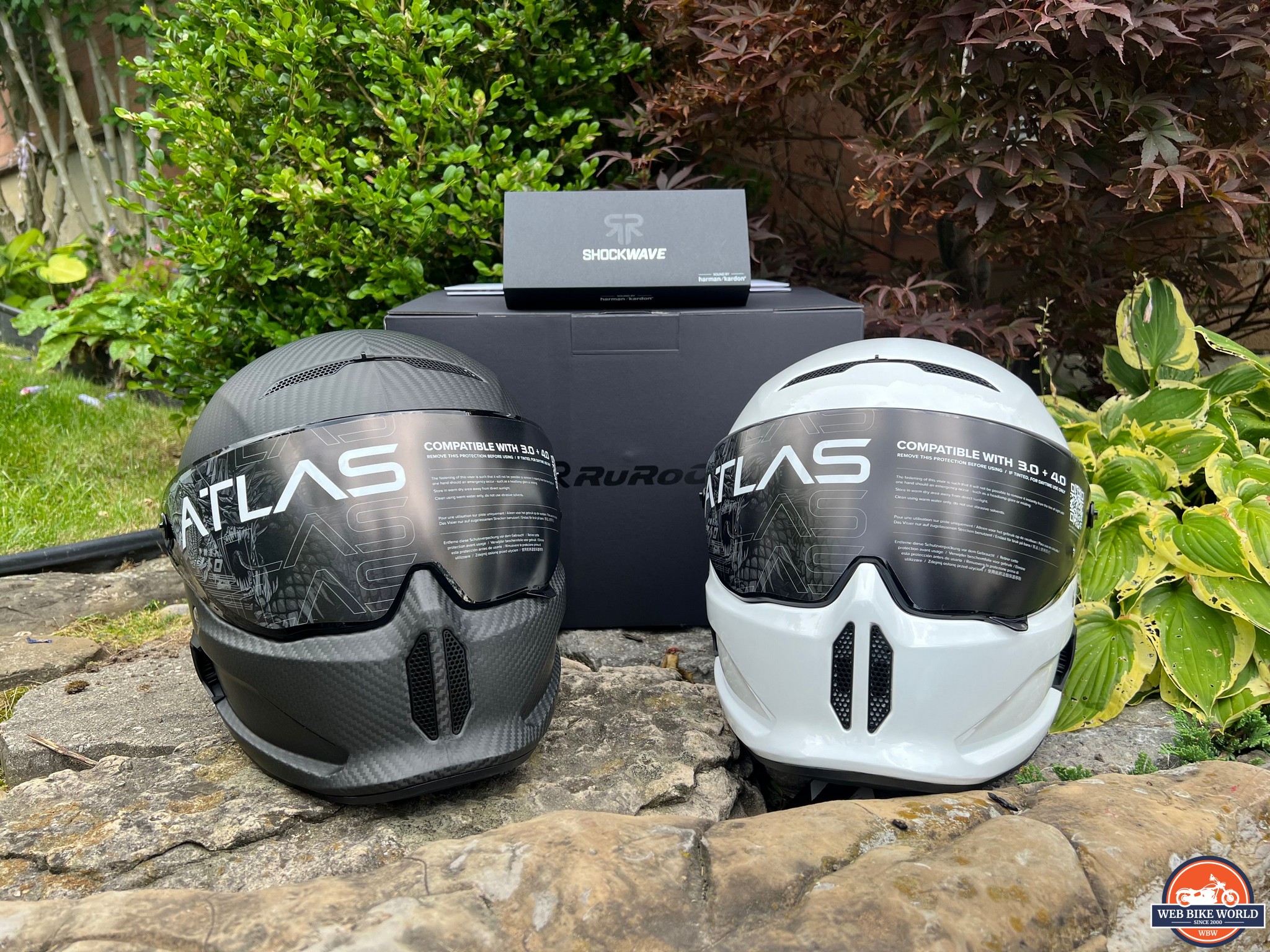

Behind the badass looks and eye-catching marketing techniques is a piece of equipment that you’re trusting your life with. In the event of a crash, it won’t be the flashy box and integrated sound system that keeps your head in one piece.
The build of the helmet, and the quality of said build, should be above all else on your list. Bear in mind that I can only comment on the information provided by Ruroc, as well as what I can feel with my own two hands. As such, I cannot disprove any testing or claims made by the manufacturer or other third parties online.
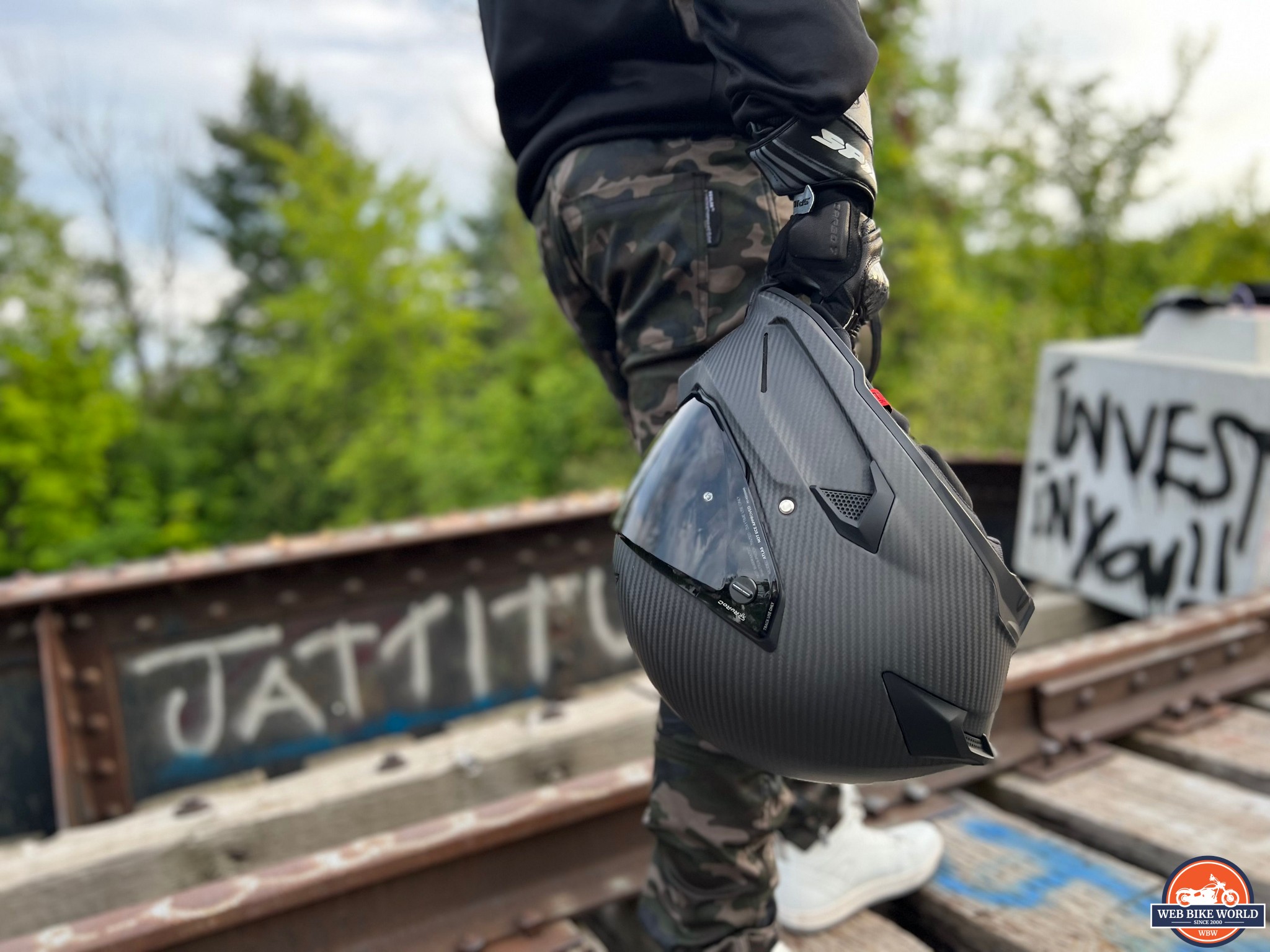

The ATLAS 4.0 Carbon shell is made out of… Well, you guessed it.. carbon fiber. Carbon fiber is strong and light which makes it a great material for helmets. It is capable of absorbing a lot of shock and equally distributing force across the surface instead of localizing it to the impact area.
In terms of safety, the carbon fiber shell is seen as an improvement over the Street line of helmets that are made out of fiberglass. However, the ATLAS 4.0 Carbon helmets are +/- 50 grams heavier than the ATLAS 4.0 Street helmets. This was very unexpected to me as carbon fiber is known for being light in comparison to other composite materials.
Aside from protective properties, Carbon fiber helmets are generally more expensive than those that are made out of other materials, such as fiberglass, and can be combined with other fibers such as Kevlar for additional strength.
For other great carbon fiber helmets, be sure to read our best of list here.
If you’re wondering what the blue rubbery material shown underneath the ATLAS 4.0 Carbon’s liner is, you’ve come to the right place.
That blue, sponge-like material is called RHEON Impact Technology. It is unique to Ruroc in the world of motorcycle helmets. The brand-new liner is said to keep you safer than ever before by absorbing linear and rotational energy from impact.
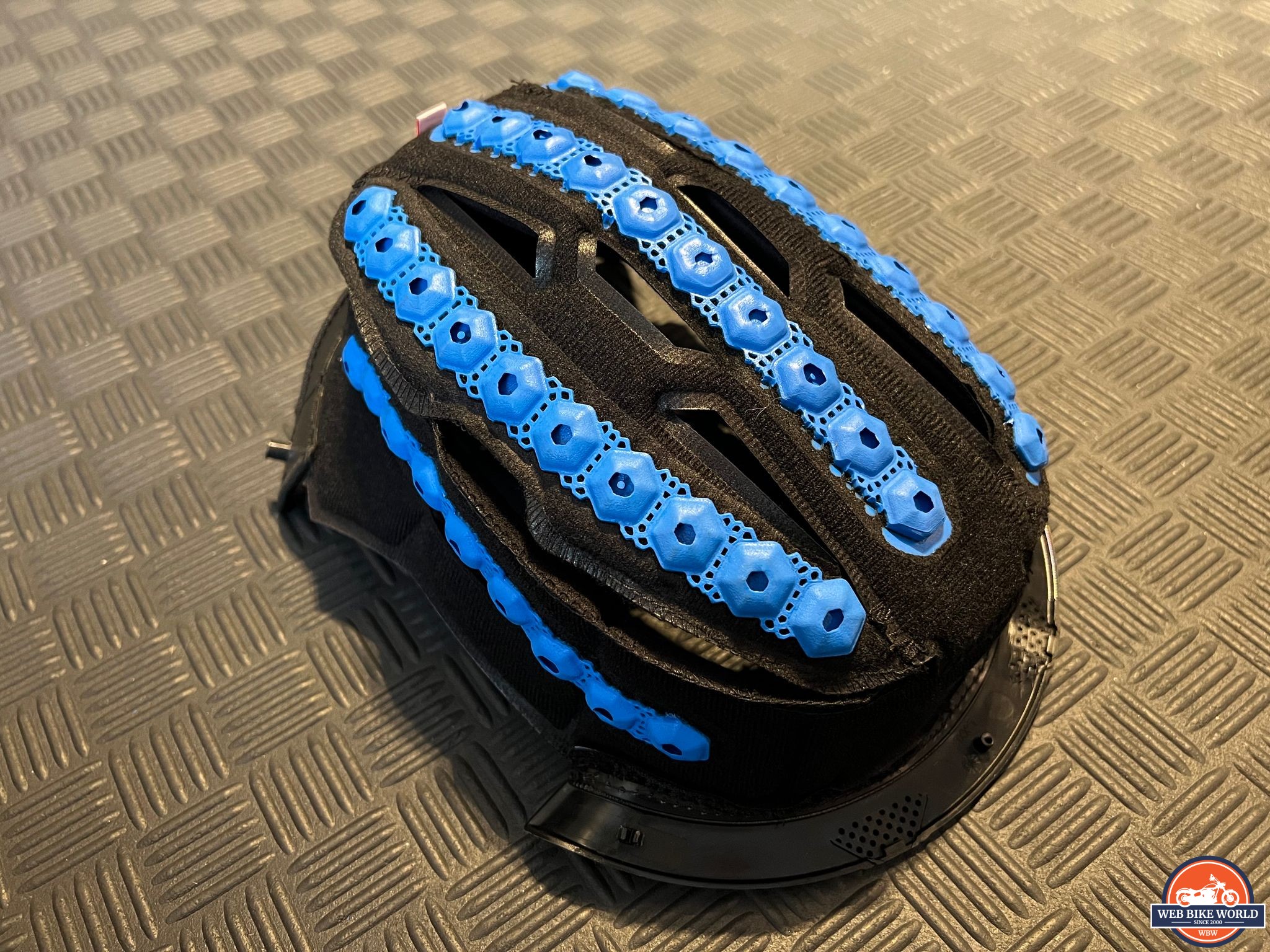

It is made up of individual structures strung together that act like a layer of memory foam between your head and the multi-layered EPS foam. It remains soft and flexible until it’s subjected to force. Upon impact, the material stiffens and absorbs more impact than conventional static materials.
This technology brings significant change and improvement to protective gear as we know it. To date, it is being used in a variety of applications such as Harley Davidson’s armored gear, football helmets, and more!
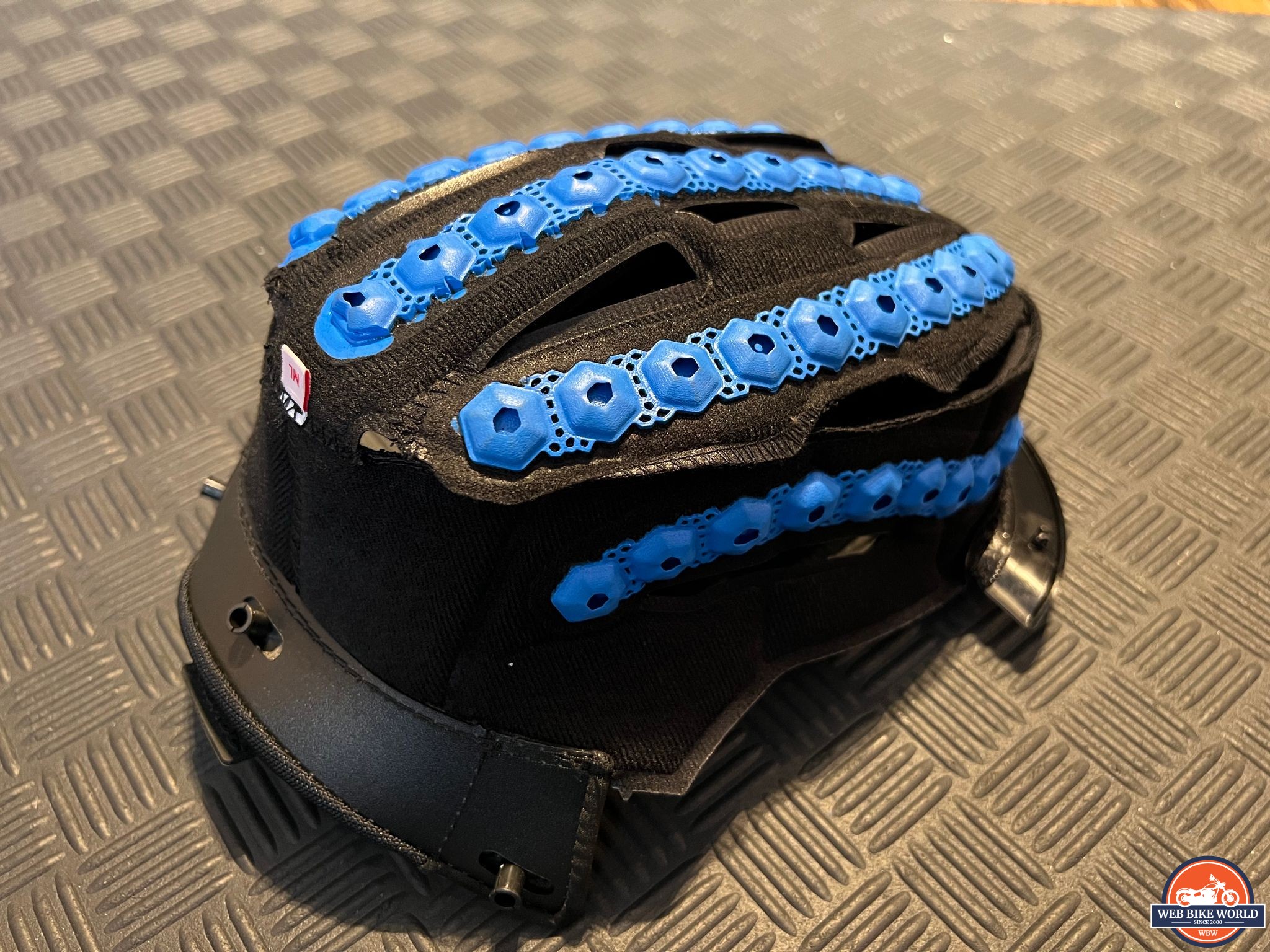

For safety purposes, I don’t doubt the effectiveness of the RHEON-incorporated headliner. It is important to note, though, that the ATLAS 4.0 with RHEON will perform slightly differently than your typical helmet.
For example, while fairly low profile, the gap between your head and the EPS foam is slightly larger than your average helmet. The gap needs to incorporate the RHEON strips, and as such contribute to a bobblehead-like feel.
It’s not necessarily a bad feeling, just one that may take some time to get used to. When turning your head rapidly, you may feel the helmet continue turning for a brief moment. Moving your head up and down quickly can create a similar effect.
While operating the Shockwave system, I could hear what I thought was the EPS foam shifting each time I pressed the buttons. It was a very distinctive crinkle that instantly reminded me of riffling through a package filled with packing peanuts.
After a bit of poking about, I found that the EPS foam was in fact moving! As you can imagine I was pretty freaked out that I had been wearing a helmet that was possibly compromised. I immediately reached out to Ruroc and they confirmed my suspicion to be true.
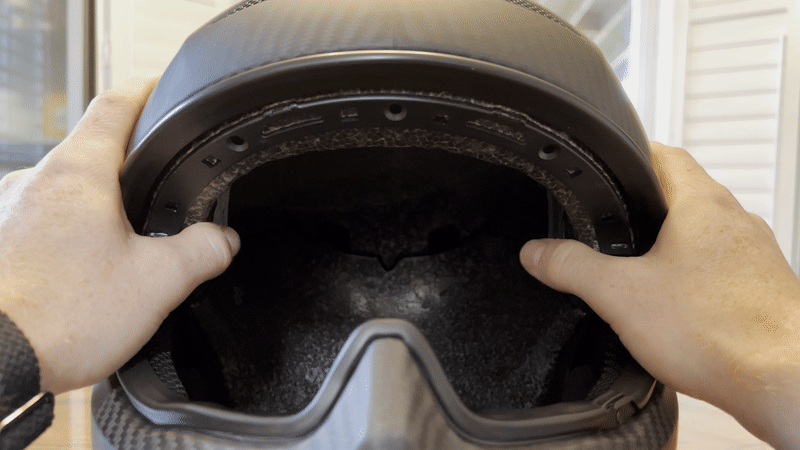

While movement in the EPS foam within the helmet shell is normal, what I was experiencing was outside of their level of tolerance. Immediately Ruroc had a replacement helmet lined up for me and shipped out. The foam in the new helmet still has some movement to it, but certainly less than the previous helmet did.
The team at Ruroc attributed the movement of the foam to shipping-related damages. I wasn’t able to find any sign of damage on the box, or the helmet itself, but that doesn’t mean it’s not possible.
If you are experiencing a level of movement similar to mine, or beyond that, I would recommend contacting Ruroc right away. In this situation, it is better to be safe than sorry.
Ruroc claims that the ATLAS 4.0 is their safest helmet yet. New to the 4.0 model is a new standard for safety; ECE 22.06. The previous model, ATLAS 3.0, was certified to ECE 22.05. While ECE 22.05 is still the most commonly used standard to date, many manufacturers are working hard to meet ECE 22.06 standards.
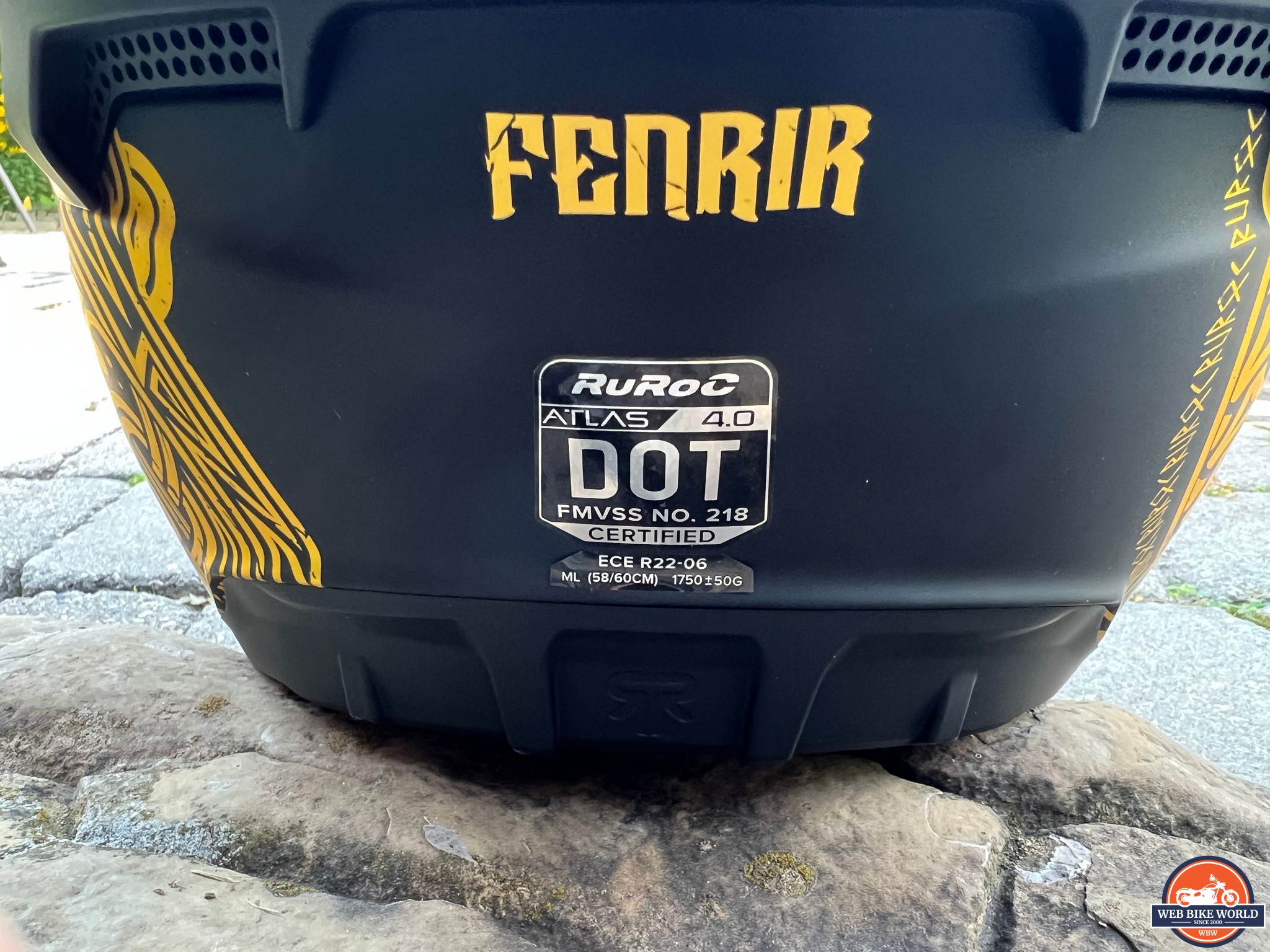

ECE 22.06 regulations were introduced in June 2020. The new approval standard brings about three additional test procedures that mainly concern themselves with tests for impact, rotational crash, and accessories.
As per Ruroc, the ATLAS 4.0 helmet exceeds all testing standards by a minimum of 20%. This is partly thanks to the RHEON liner detailed above. I love to see manufacturers exceeding these standards as it shows that they’re focusing on what’s important; rider safety.
In addition to meeting the ECE 22.06 standard, the ATLAS 4.0 Carbon is DOT FMVSS 218 certified. We’ve got a list of full face helmets with similar safety certifications, so be sure to check that out.
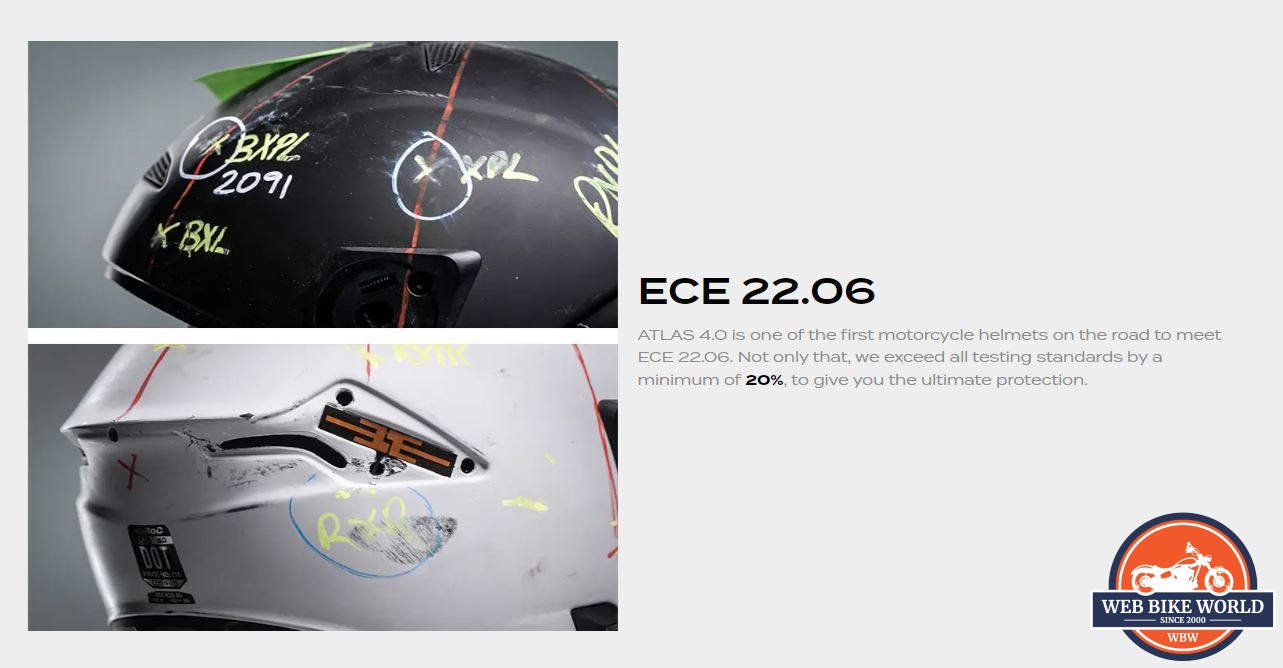

The ATLAS 4.0 Carbon helmet by Ruroc exceeds ECE 22.06 standards by at least 20%. Image provided courtesy of Ruroc.
Helmets off to Ruroc.
It’s apparent that they’ve put a primary focus on safety with the new ATLAS 4.0 helmets. The science behind the RHEON technology looks promising. Ruroc has done a great job of effectively incorporating it into the helmet liner to meet the new requirements for ECE 22.06 certification, thus placing the ATLAS 4.0 amongst some of the safest helmets in the market.
When I contacted them with my concern regarding the EPS foam, the issue was resolved and a replacement was dispatched within the same business day. Regardless of whether or not the helmet was damaged in transit, or a defect from the manufacturing process, Ruroc did the right thing and replaced it no questions asked.


If you frequent webBikeWorld, you’ll know that we hold SNELL certification above all. In the future, I would love to see Ruroc strive for this standard. Comparable helmets with the SNELL M2020 certification are available at a cheaper price point, such as the Arai Regent-X Full Face Helmet.
The ATLAS 4.0 Carbon is available in sizes XXS-XXL across 3 shell sizes. The helmet shape is an intermediate oval. If you don’t already know, the best practice would be to consult our helmet buyers guide to determine your head shape.
I was torn between asking Ruroc directly for a size recommendation, or following their size guide and ordering based on its output. I’m glad I decided to go with the latter as I found out that the guide is not accurate.
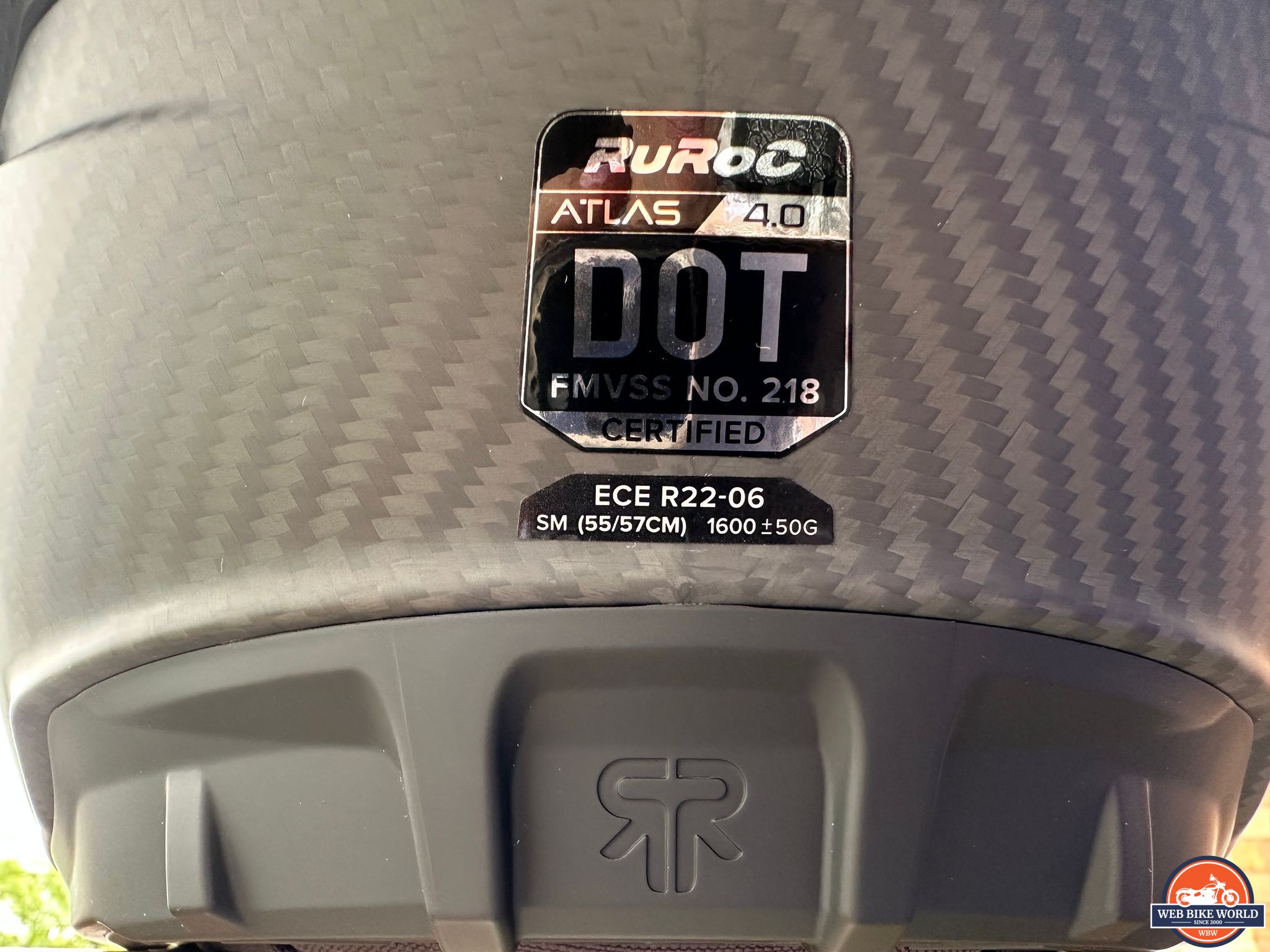

After repeated measurements from numerous people, one of them being Cameron Martel, I was getting a consistent head measurement of 56.5cm. We followed the exact instructions as outlined by Ruroc in their sizing guide.
This measurement put me dead center of the acceptable range for a small helmet. I found this a bit odd as I’ve always worn a medium, but based on the guides for each respective helmet, other manufacturers’ medium was smaller than Ruroc’s.
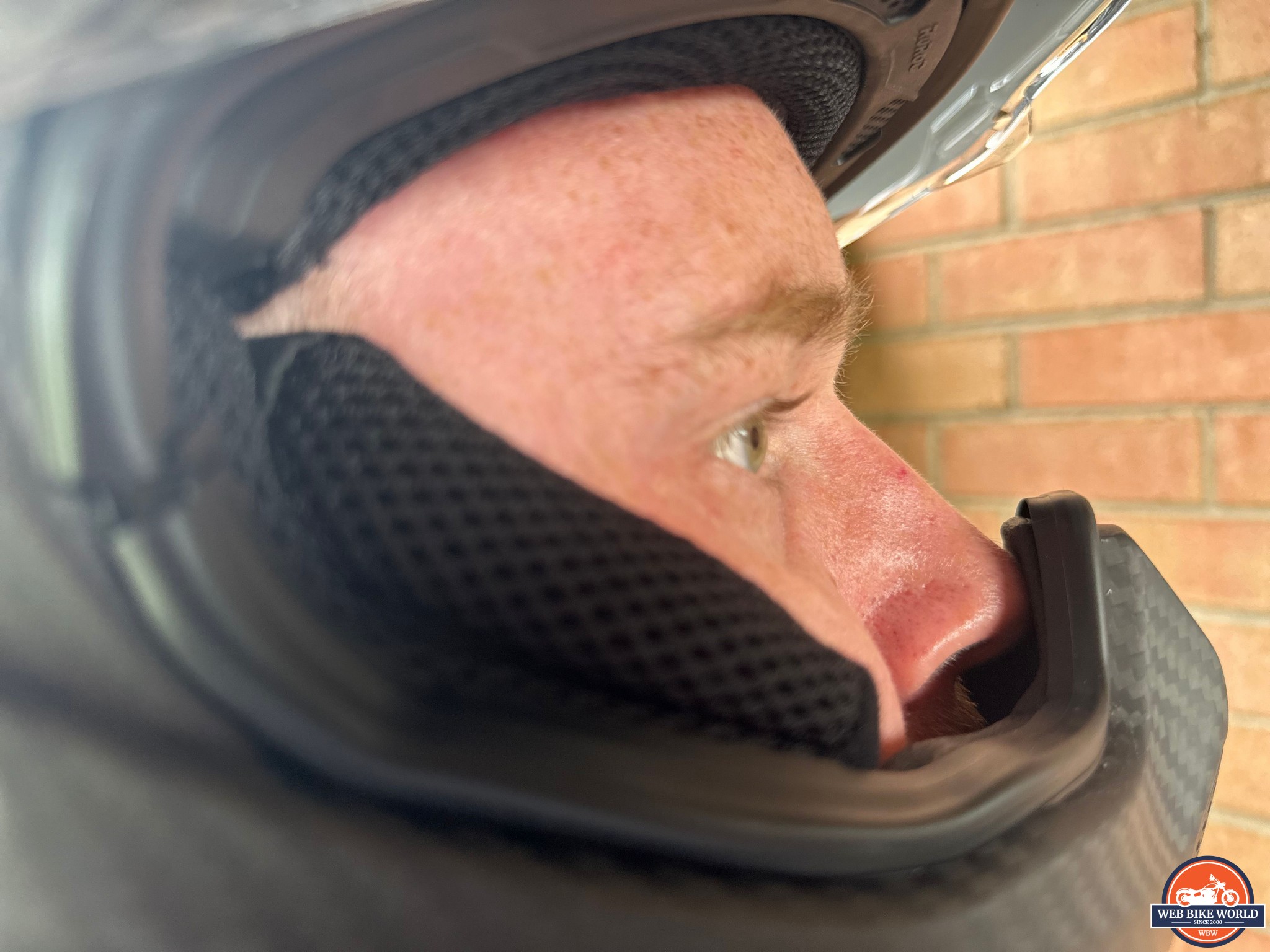

Needless to say, I went with the small and had issues with it. I found the helmet to be far too small for my head. I felt pressure all across my forehead, and even made contact with the face mask with my nose!
I had a serious case of chipmunk cheeks to the point that I would accidentally bite them when I spoke. The helmet was so tight it added 15 years of age to my face and gave me bags as if I hadn’t slept in weeks. Not my most flattering angle, but I’ve included it anyway for your benefit.
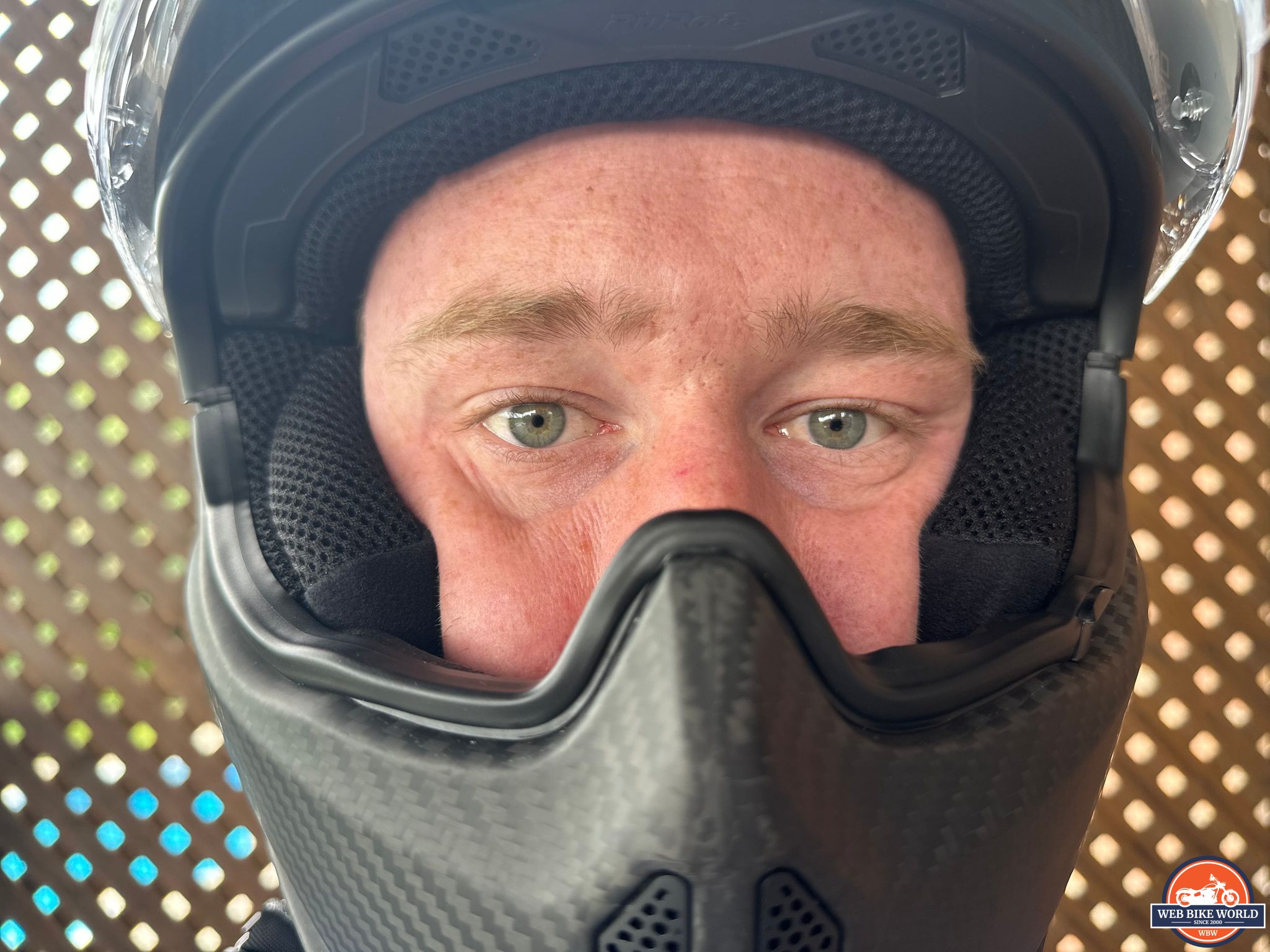

Thankfully, the team at Ruroc was quick to respond and immediately dispatched the correct size. I was provided with return shipping labels at no expense. I was pleased with how easy it was to exchange sizes.
The mediums arrived and fit perfectly.
The moral of my story – the size guide may be inaccurate. If possible, consult the Ruroc team or try on a friend’s helmet before ordering.
It’s unfortunate really that the size guide is inaccurate because once I had the correct size, the helmet fit very nicely. It is comfortable to wear without any pain points across my head. I’ll address neck roll and cheek pads separately, but they provided me with a very secure feeling.
I was fortunate to be in direct contact with representatives from Ruroc. This made the exchange process quick and painless. As for others, you may not be so lucky. After a quick glance at their Exchange/Return policy, customers are responsible for the cost of returning. That is certainly something to keep in mind before purchasing.
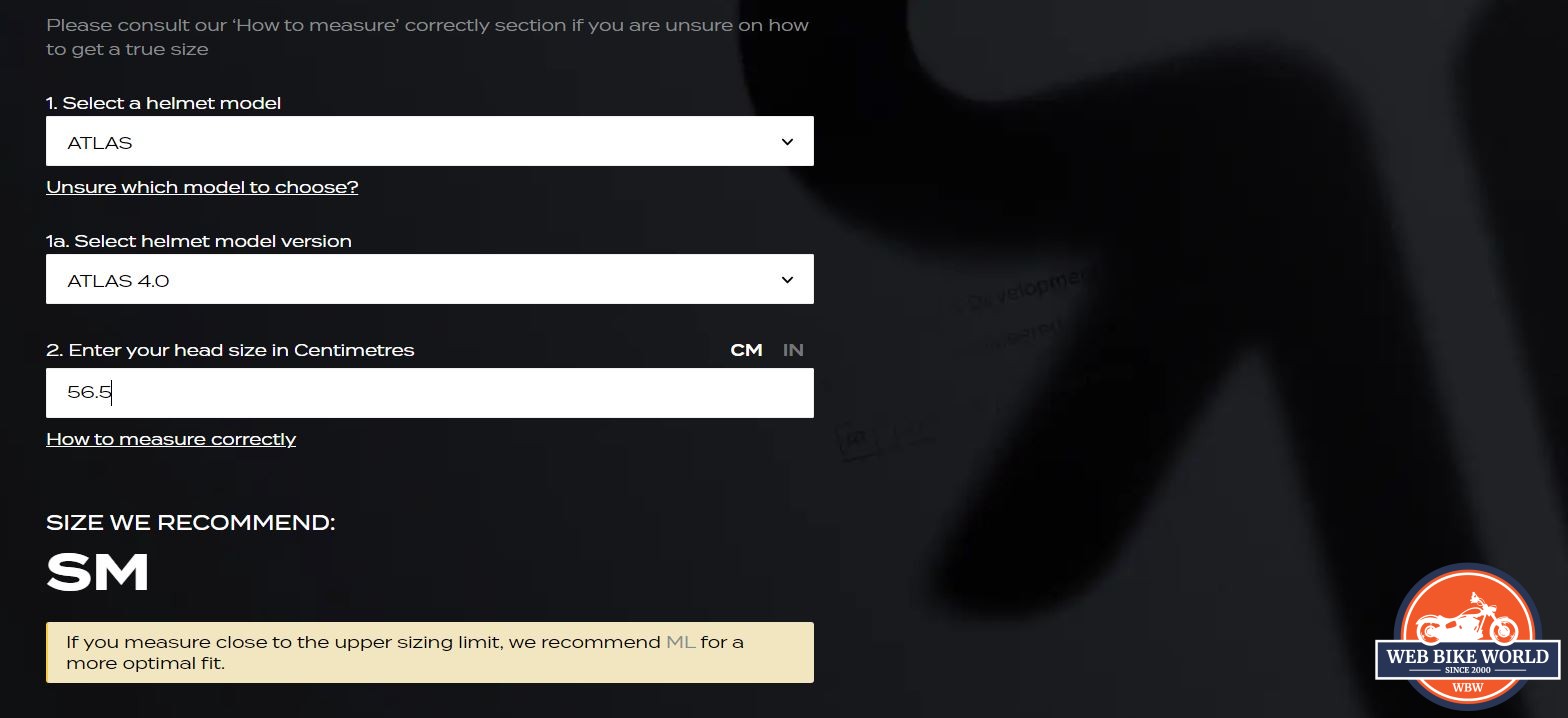

Now that we’ve covered the sizing fiasco, let’s go into depth on how the helmet fits.
As I was sliding the helmet onto my head I immediately noticed a dominant neck roll. The neck roll was very thick and led me to believe that the helmet wouldn’t fit on my head. Once on, it provided a comforting and reassuring feeling on the back of the neck. Almost like a gentle reminder that you’re in good hands.
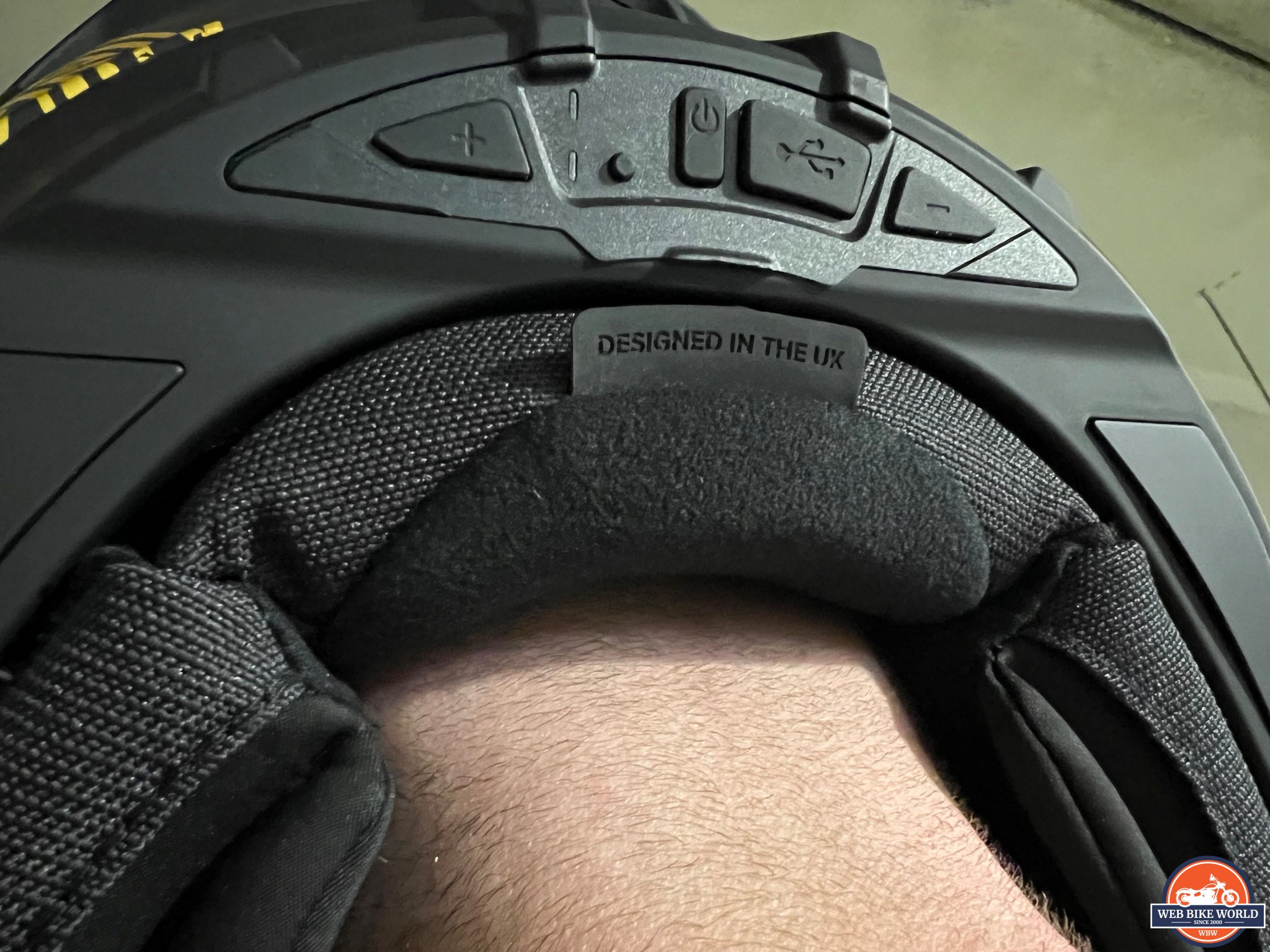

The cheek pads are made out of multi-density foam that reminded me of a memory foam mattress in the way they felt. At first, they were tight and uncomfortable, but as I put in more ride time they began to conform to my facial profile and felt better.
Through use, I began to notice that my jaw would hurt after long rides. I narrowed the pain down to the cheek pads putting pressure on my TMJ. As a chronic clencher and teeth grinder, it doesn’t take much for my jaw to start hurting. I would suspect that most riders would not have any issue with the included cheek pads, but there is always an option to purchase thicker pads if needed.
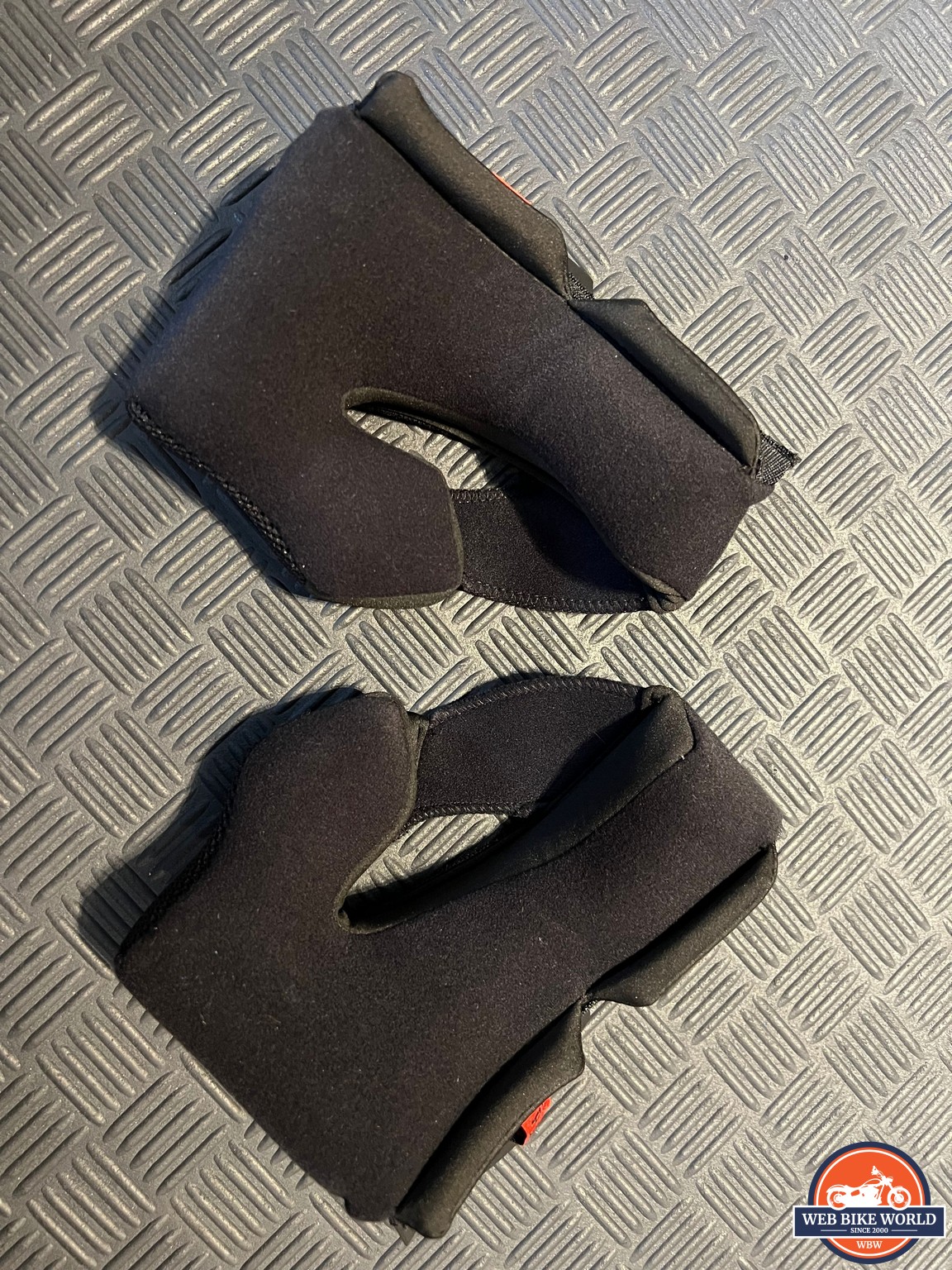

The shell felt a bit oversized for the helmet. With the ATLAS 4.0’s very rounded design, my initial thought was that I felt like a bobblehead. The Carbon’s are Ruroc’s heaviest motorcycle helmets and that became very apparent at speed. Between the weight and off-feeling aerodynamics, I would often find myself in a battle with wind battering.
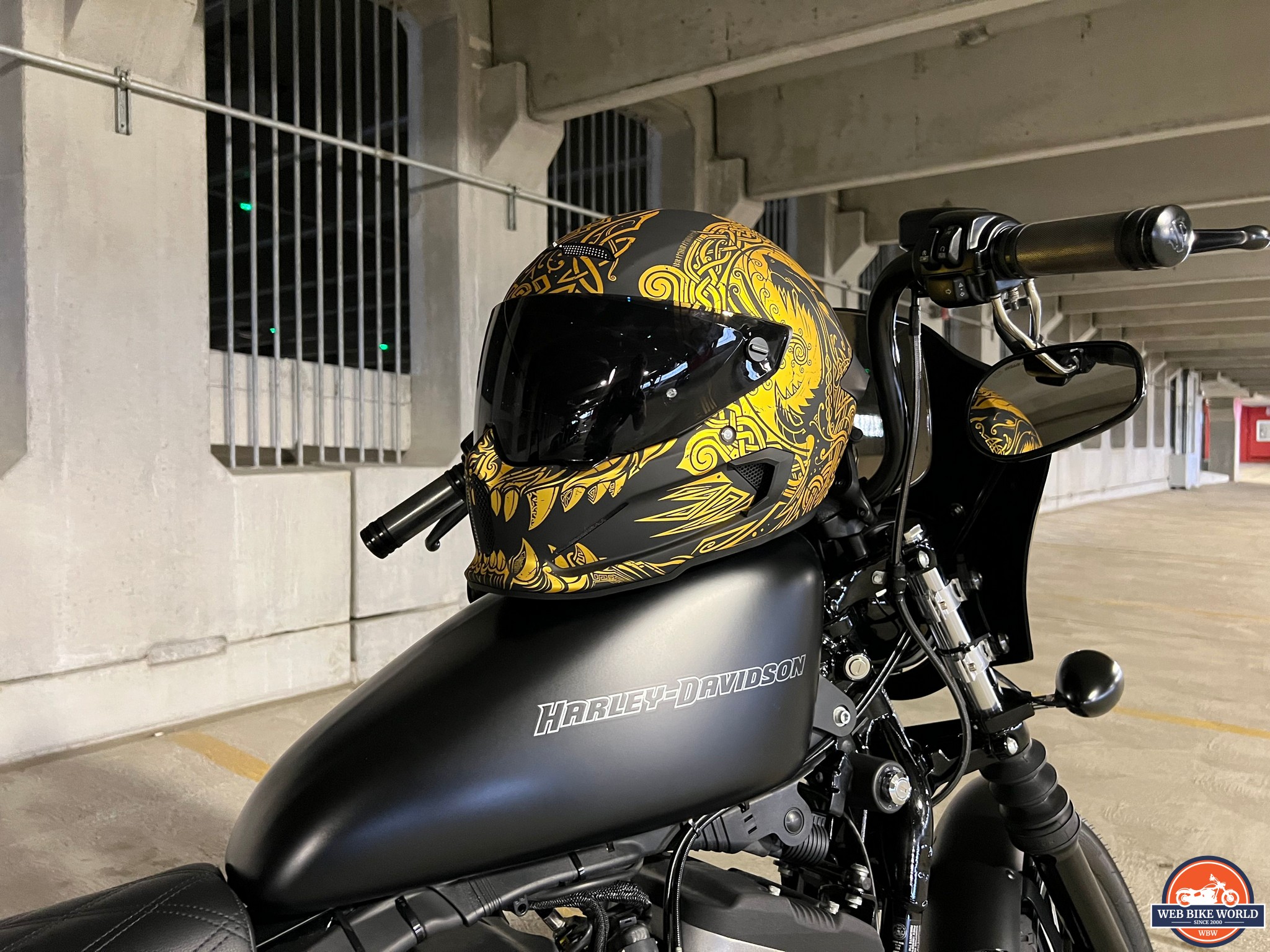

The headliner and cheek pads incorporate a moisture-wicking fabric which is always a welcomed feature. The ventilation of the helmet felt plentiful and didn’t run overly hot, but I will cover that in depth below.
The ATLAS 4.0 Carbon helmet felt comfortable to wear. The cheek pads and headliner were comfortable and the ventilation did a great job of keeping my head cool while riding. The vent on the face mask was definitely the star of the show and provided me with much-needed relief.
The aerodynamics of this helmet need to be reworked. As I mentioned, the design is very round with a shell that feels a bit too oversized. Combine that with a slight headwind and your neck is in for a rough ride. When you’re tucked on a sportbike this may not be as apparent but as a cruiser rider, I’d love to see Ruroc take another crack at it.
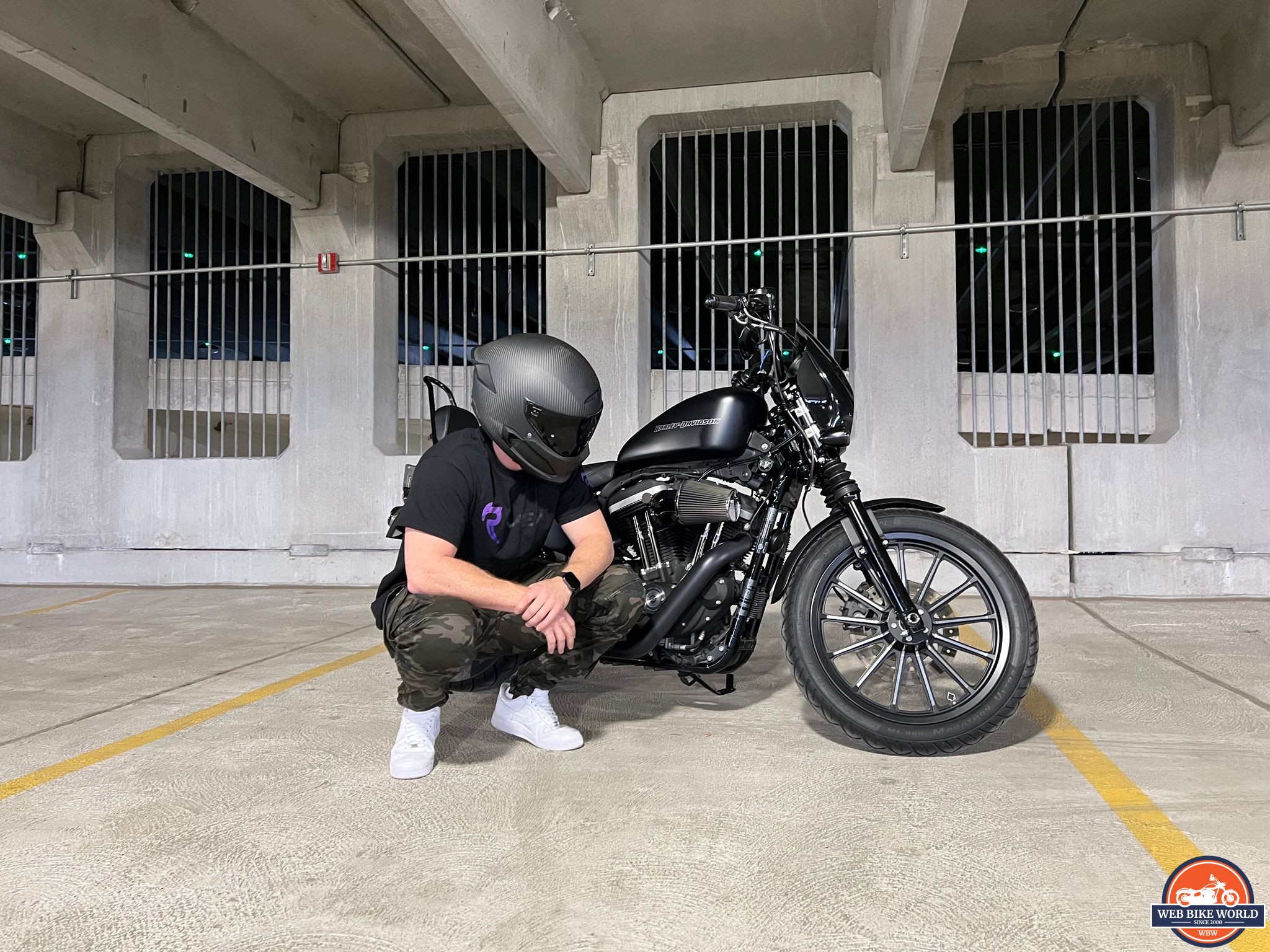

Another feature I’d love to see is the use of cooling fabric in the headliner and cheek pads. It’s becoming increasingly popular to incorporate cooling fabrics into full-face helmets; even in models half the price. As a high-end helmet, it’s something that I would’ve thought is guaranteed.
There is one thing we can all agree on; Ruroc makes a damn good-looking helmet.
The 4.0 Carbon line is available in solid colors, such as white, matte black, and grey. It’s also available in a wide variety of stunning wraps. The offering ranges from Marvel Super Hero’s, such as Iron Man, to a jaw-dropping tribute to Fenrir – a wolf in Norse mythology that represents the forces of evil and chaos. I was lucky enough to receive a Fenrir lid as part of my review and somehow it’s better looking in person than online!
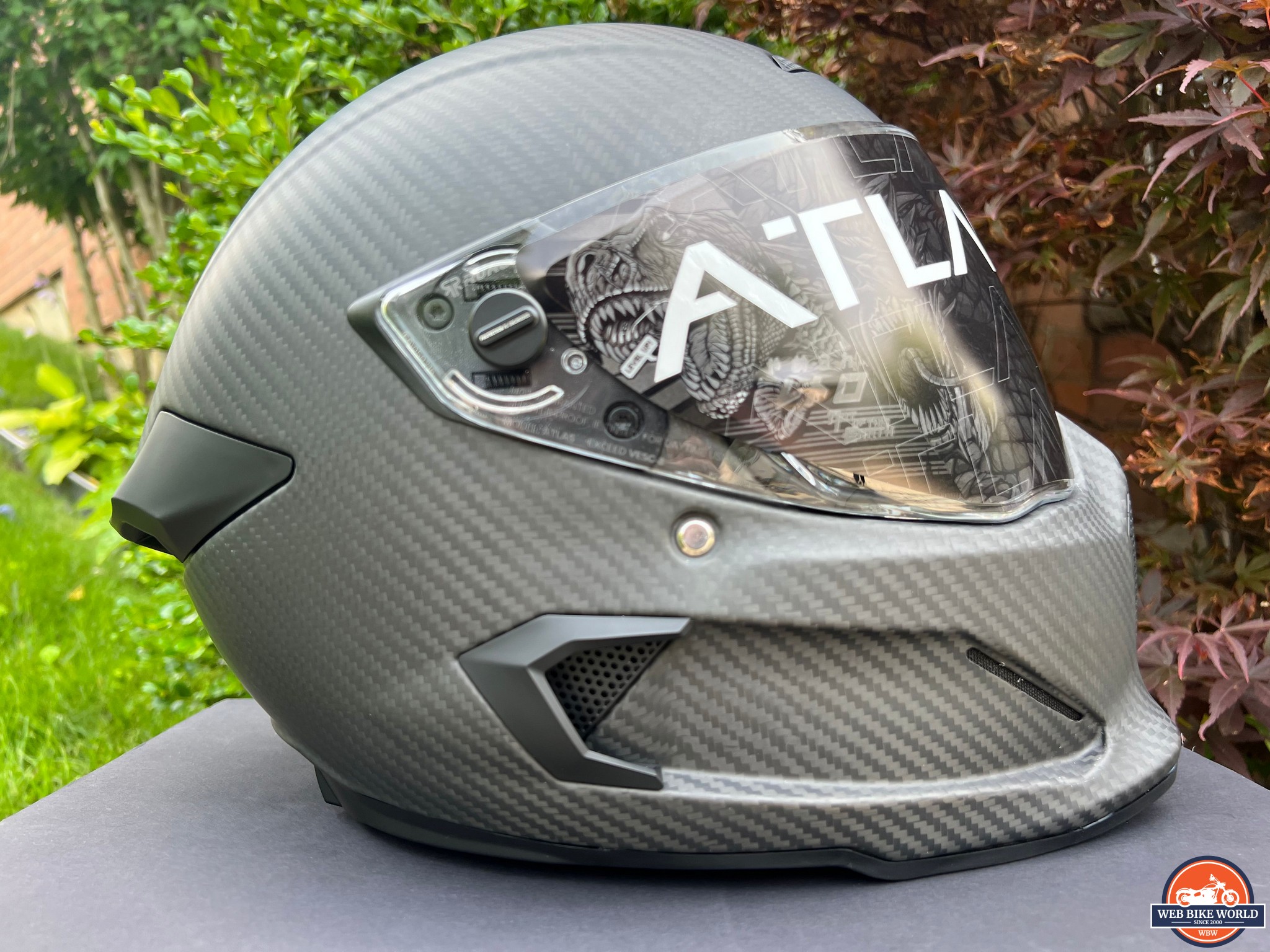

Throughout this review, I have photographed both the Raw Carbon and Fenrir models. Raw Carbon is a beautiful wrap by Ruroc that is meant to replicate the process in which they weave carbon fiber in order to construct the shell. The Raw Carbon matches my style as the darker tones compliment my Iron 883 perfectly. It also adds a nice textured look that you wouldn’t get from a matte black finish.
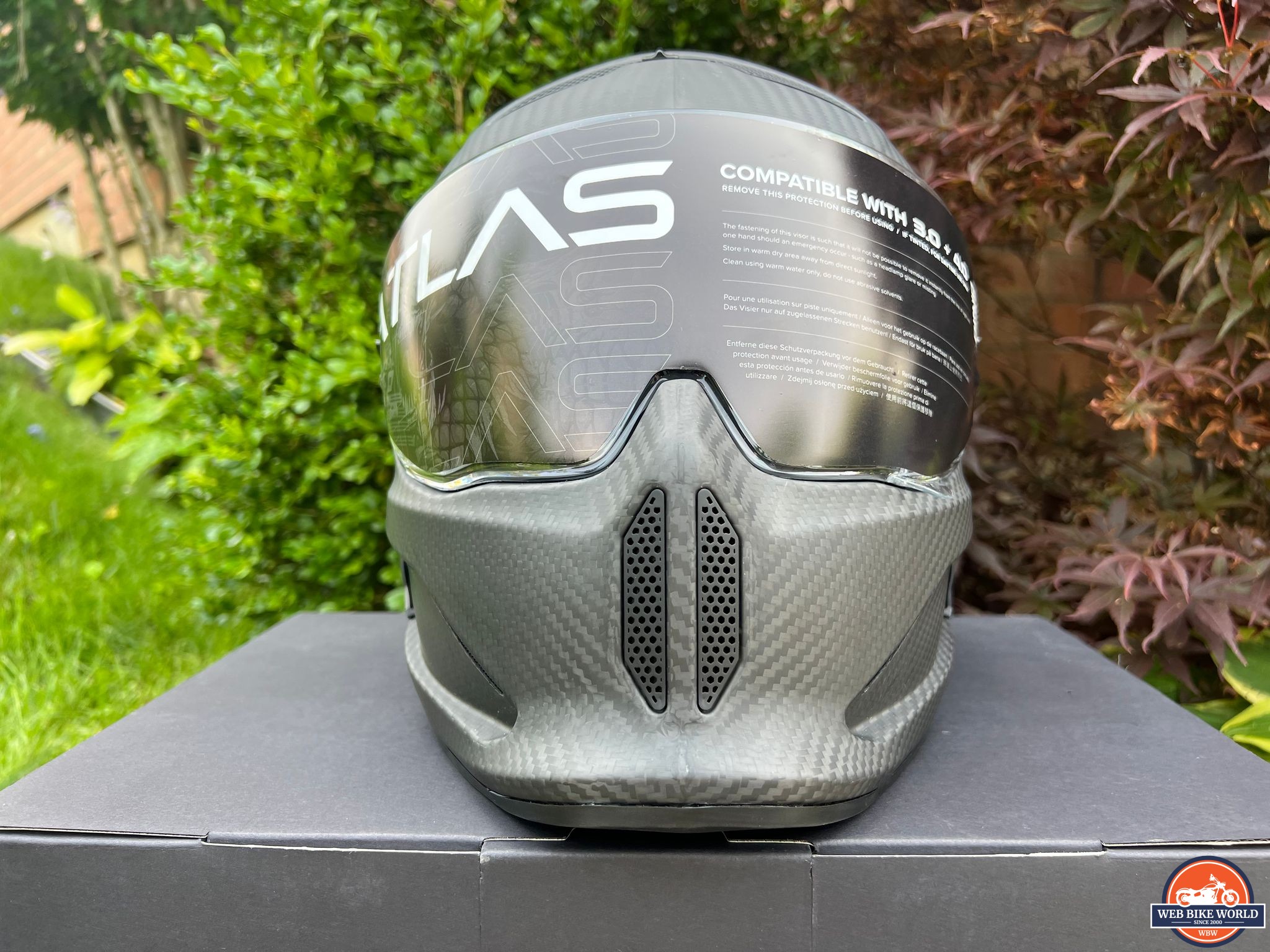

Aside from the wrap options, the helmet itself is quite round. The front of the helmet has two large vents on the face mask that look similar to Voldemort’s nose. On the sides, the helmet tapers into intake vents that are located just below the rider’s ear. On top, we have a brow vent that contours to the two exhausts on the rear.
In my eyes, the ATLAS 4.0 line of helmets is one of the best-looking helmets on the market. Branding is very subtle, with nothing more than a Ruroc logo on the face shield, and on the certification sticker on the rear.
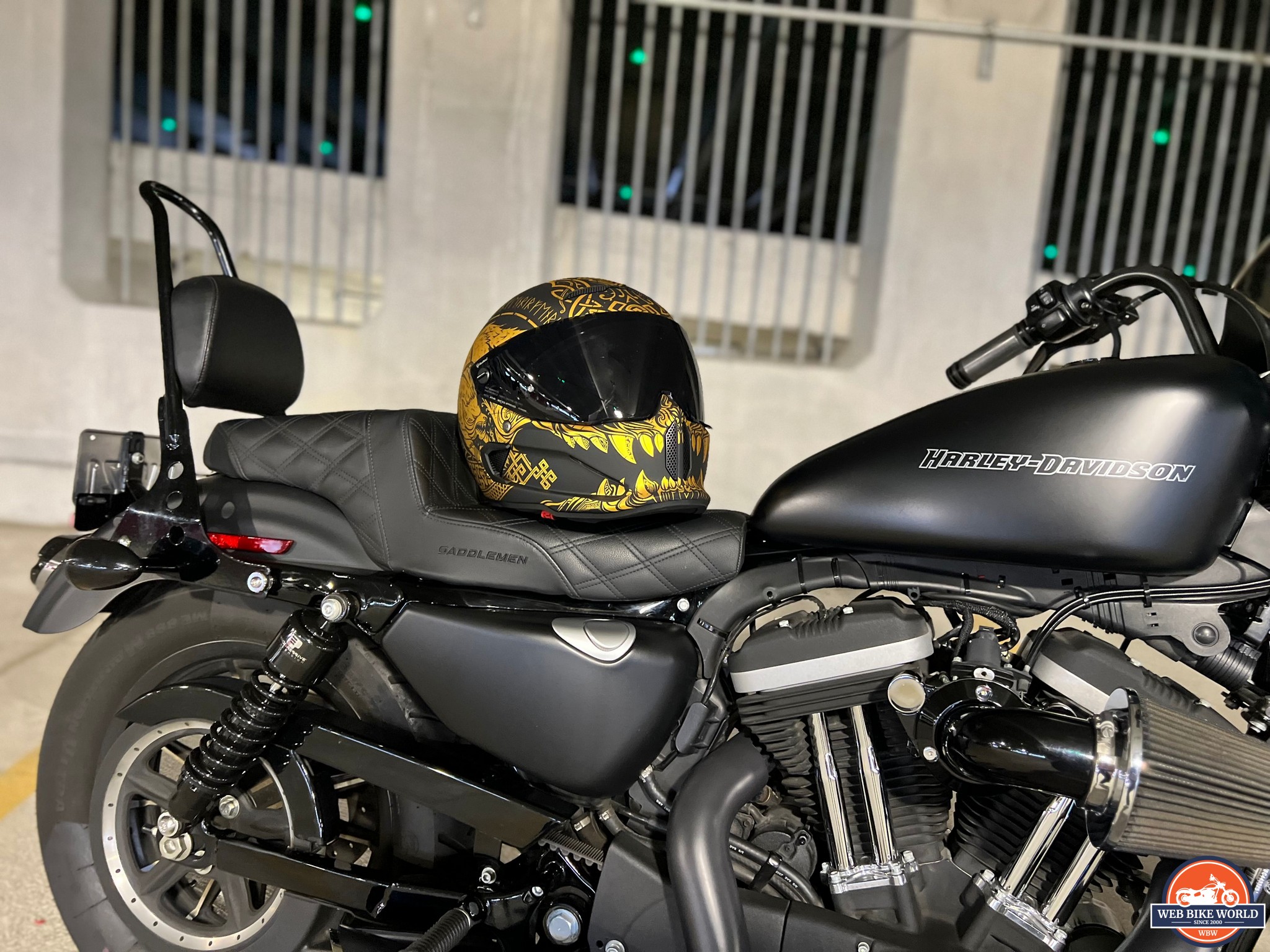

Almost full marks were given for the diversity and quality of the helmet wraps. The wrap for the Raw Carbon I received was laid perfectly and free of defects. The Fenrir wrap had minor creasing in it that was only noticeable to me after thoroughly inspecting it.
If I could have one wish in terms of the ATLAS 4.0’s design it would be relating to the durability of the helmet wraps and clear coat. I was unfortunate enough to scratch the Raw Carbon wrap after having the helmet gently rub against a bit of rough concrete. By no means is the damage extensive, but I’d love to see the use of a clear coat that’s more forgiving to its users.
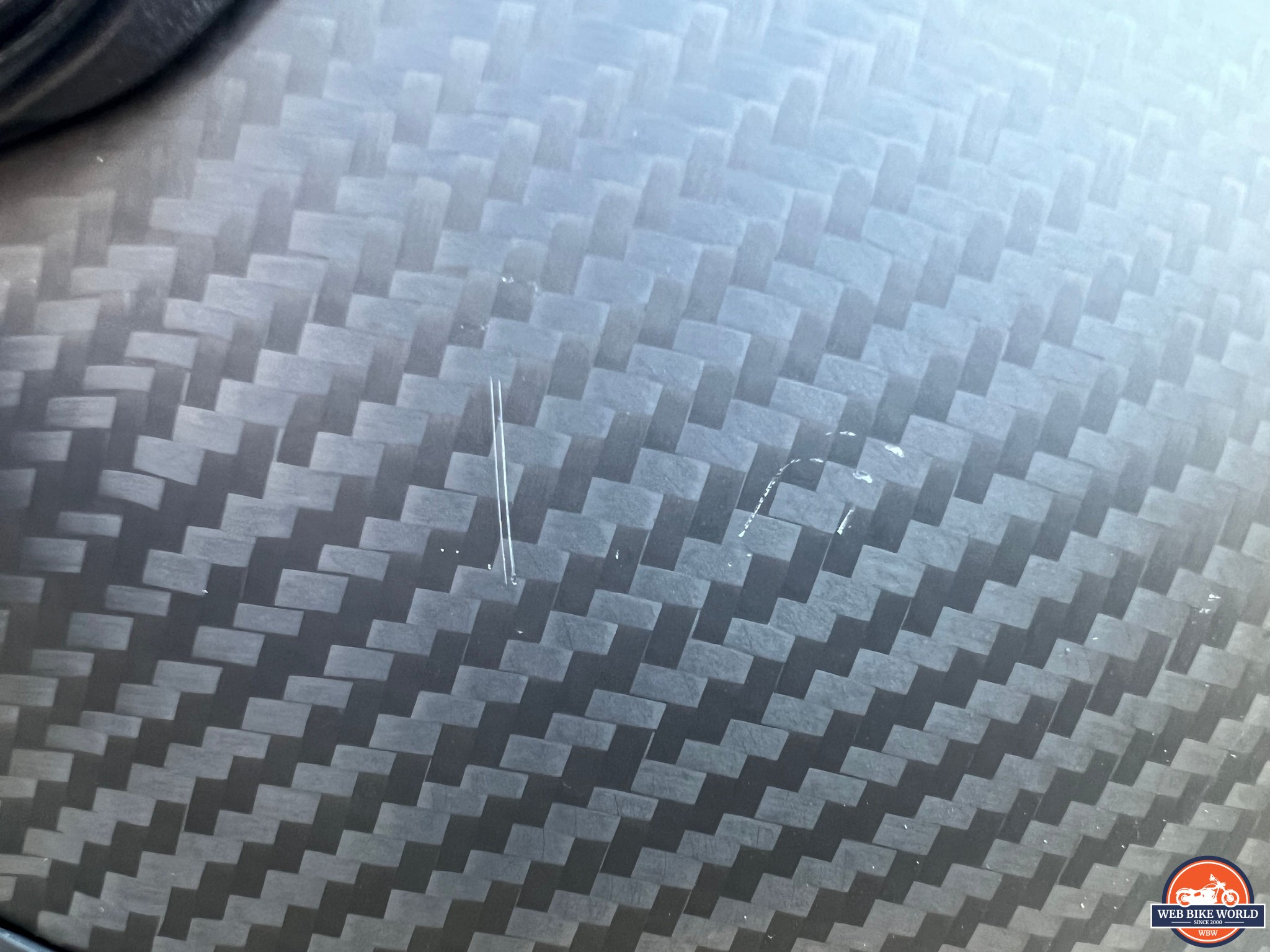

Full-face helmets sometimes get a bad rep for impairing your vision. When compared to a ½ or ¾ helmet, I can understand why some would think that. In today’s market, that argument can still hold true if you’re not careful with what you’re buying.
The ATLAS 4.0 Raw Carbon has a 215 degree horizontal field of view. For reference, if you were to fixate on a singular point with both eyes, your eye’s horizontal field of view would be approximately 200-220 degrees.
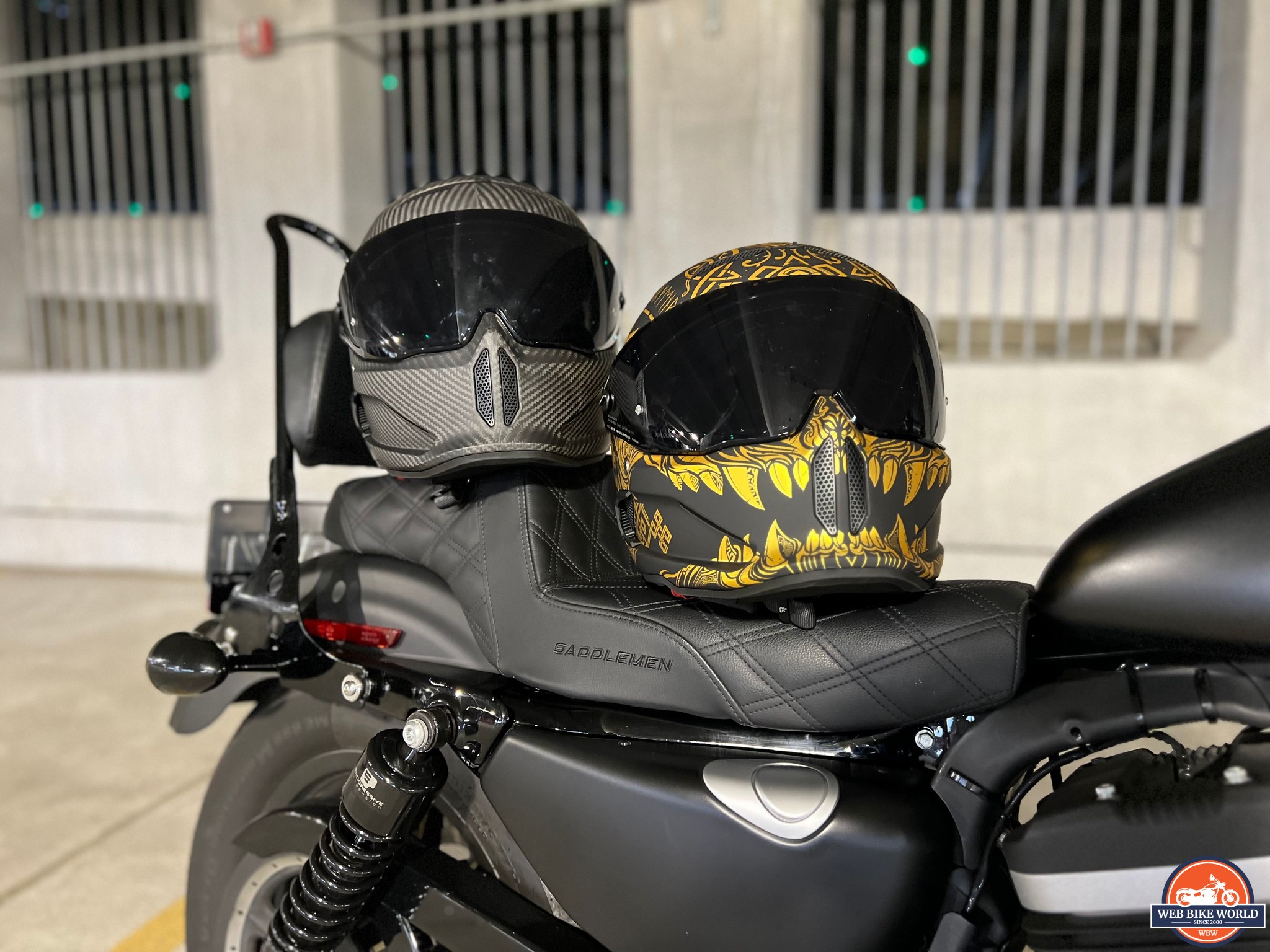

To put this into context, I cannot see the sides of the helmet’s eye port while looking straight ahead. If I were to turn my eye, I would be able to see the sides in my peripherals, but not enough to restrict my visibility.
The eye port is just over 4” high at its largest point. The nose guard is quite large, extending approximately 1” high into the eye port. While troublesome at first, my brain quickly learned to ignore it.
Included in the box were two face shields; one clear and one tinted. Ruroc has the option to purchase 7 additional colored visors on their website. The visors are easily changeable thanks to Ruroc’s quick-release system.
On each side is a black thumbscrew. To swap the visors, I simply had to twist and remove the thumbscrews, pop the installed visor out, swap it for the new visor, and then re-tighten.
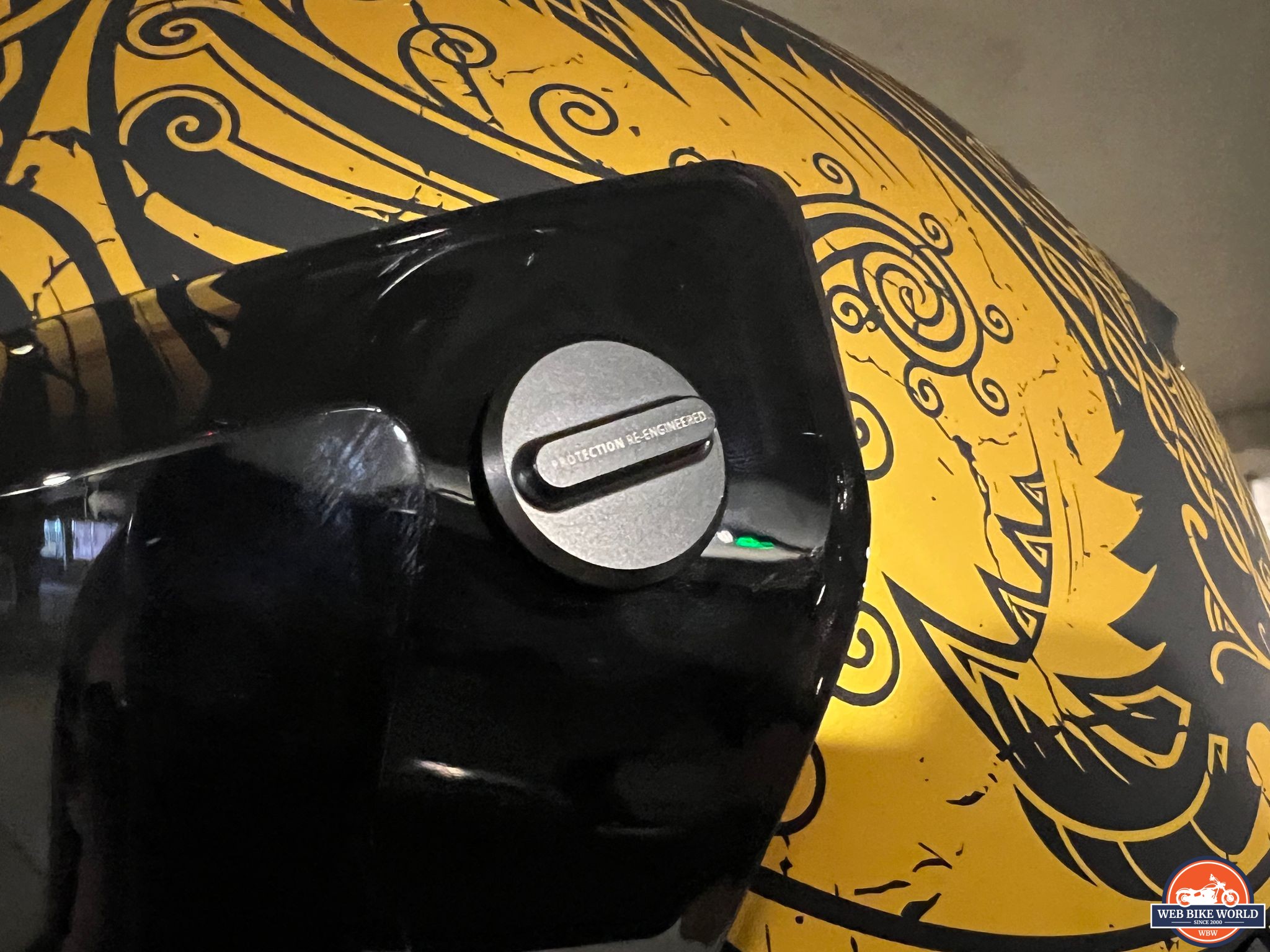

The entire process took me a matter of minutes to complete. Be sure to line up the small pin on the inside of the shield with the visor track otherwise, it will not fall into place. In my experience, I’ve only had 1 helmet with a better quick-release system and that was my Bell Qualifier DLX Blackout.
The visor track has several dented positions that are strong enough to hold the face shield in place at speed. For example, I was able to crack the face shield by just a hair to produce further ventilation without exposing any of my skin. I commonly found myself riding like this at slower speeds for a bit of added airflow.
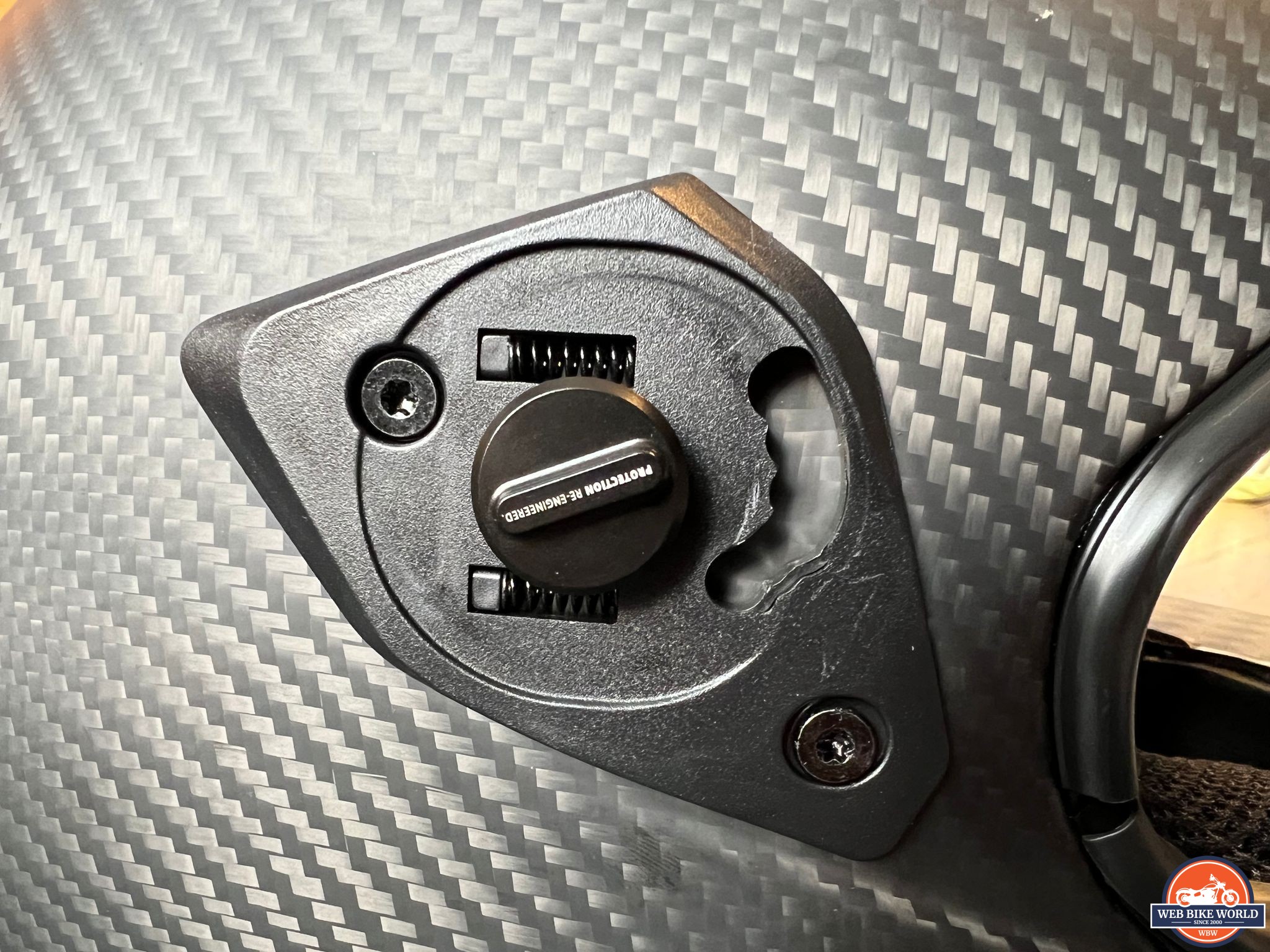

A small indent on the bottom lip of the eye port locks the shield in place and creates a tight seal. On the left-hand side, you’ll find a small tab that makes opening and closing the visor effortless.
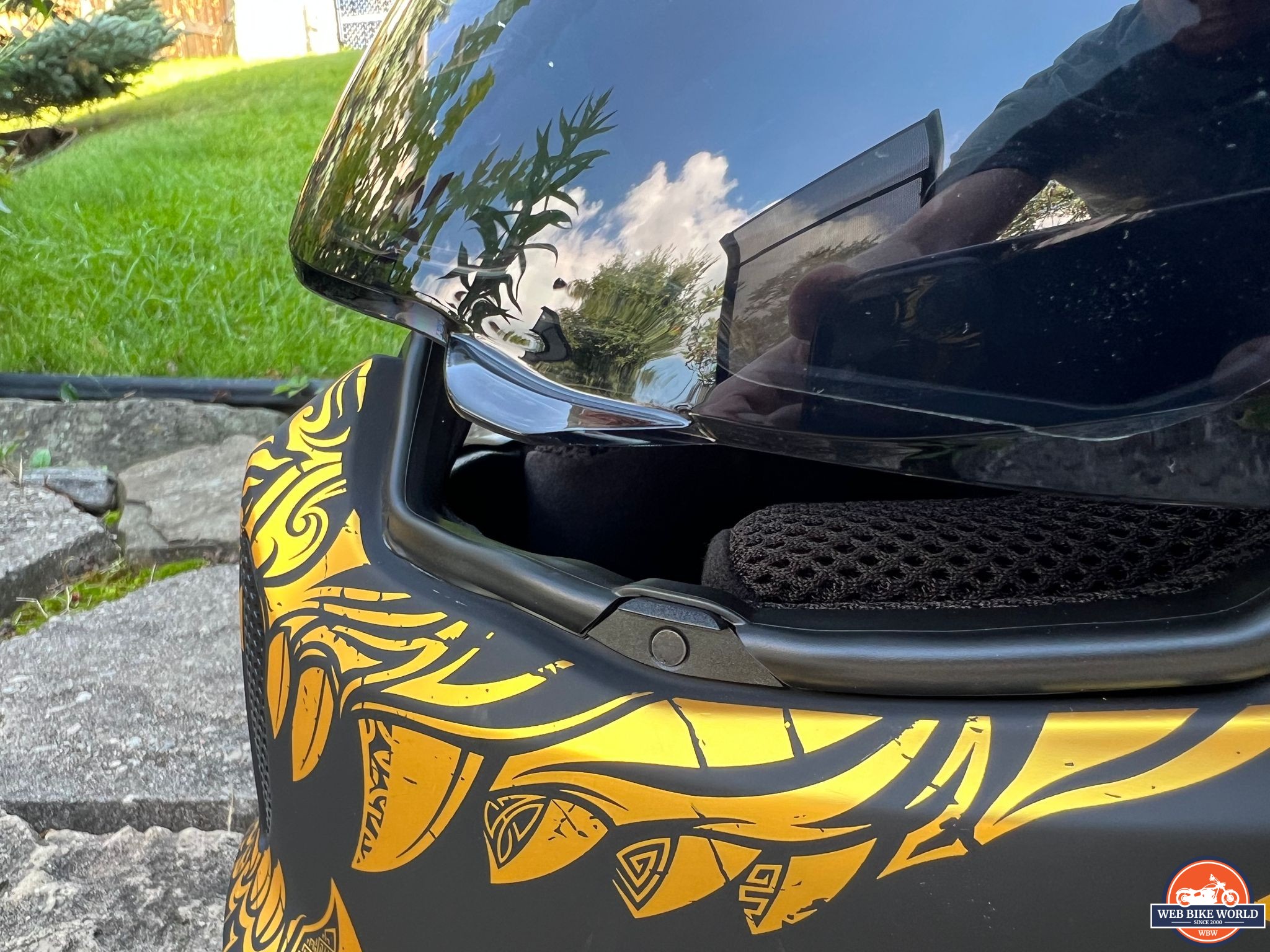

The face shield on the ATLAS 4.0 Carbon was constantly fogging up on me. If I had the visor down while not moving, I wouldn’t be able to see by the time I got my bike out of the garage. Ruroc’s answer to this is that all of their visors are compatible with Pinlock inserts.
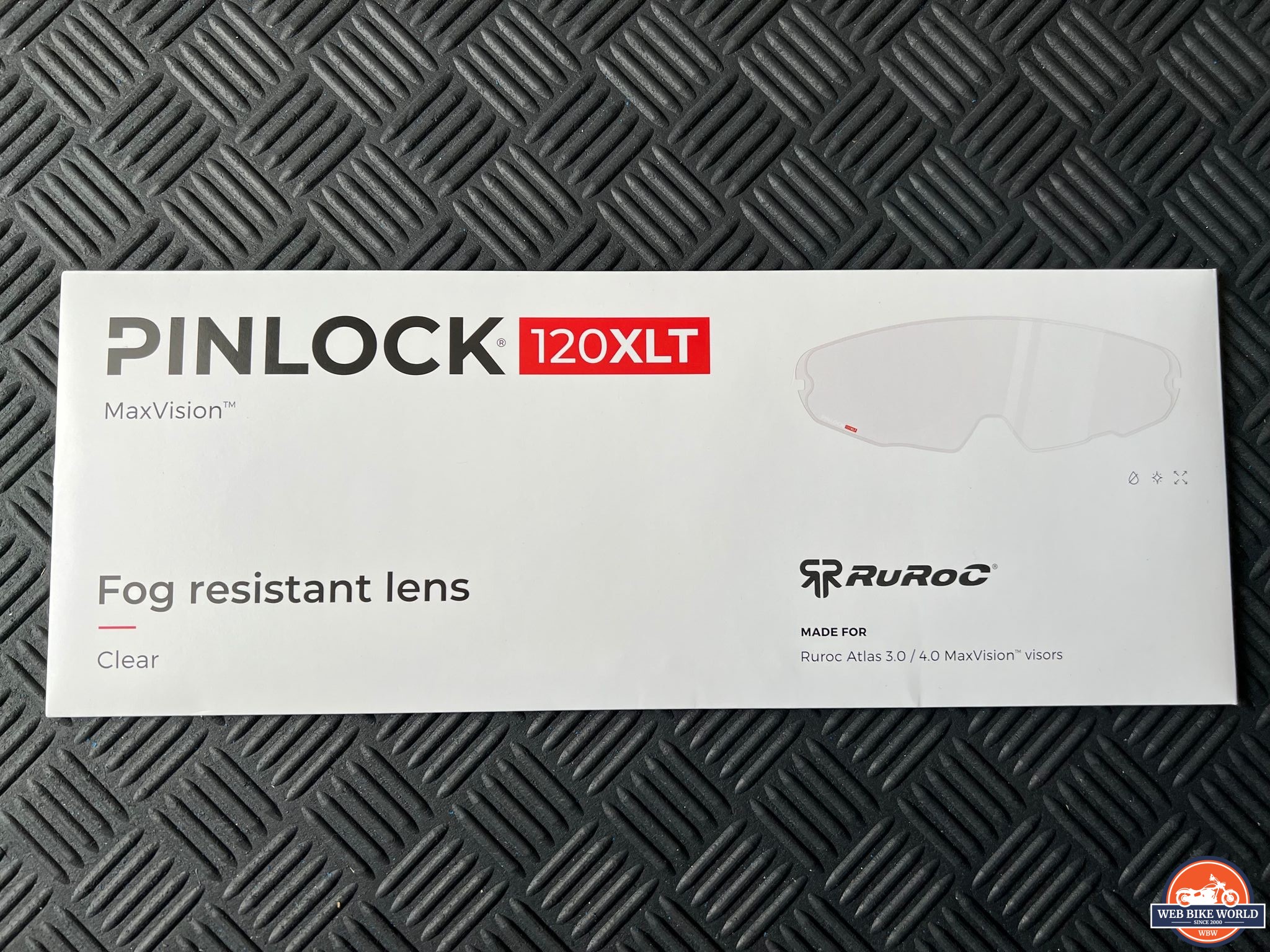

A Pinlock insert is a separate lens that is installed on the inside of the face shield for anti-fog performance. The system is installed easily with a pin positioning system that ensures a secure fit.
Once installed, the Pinlock did its job and did it well. My face shield was entirely free of fog with the exception of a few small areas. Around the edges of the Pinlock near my nose, I could see small amounts of fog as I breathed out, but only at lower speeds. It was a massive improvement and experienced nothing that obstructed my view while using the pinlock.
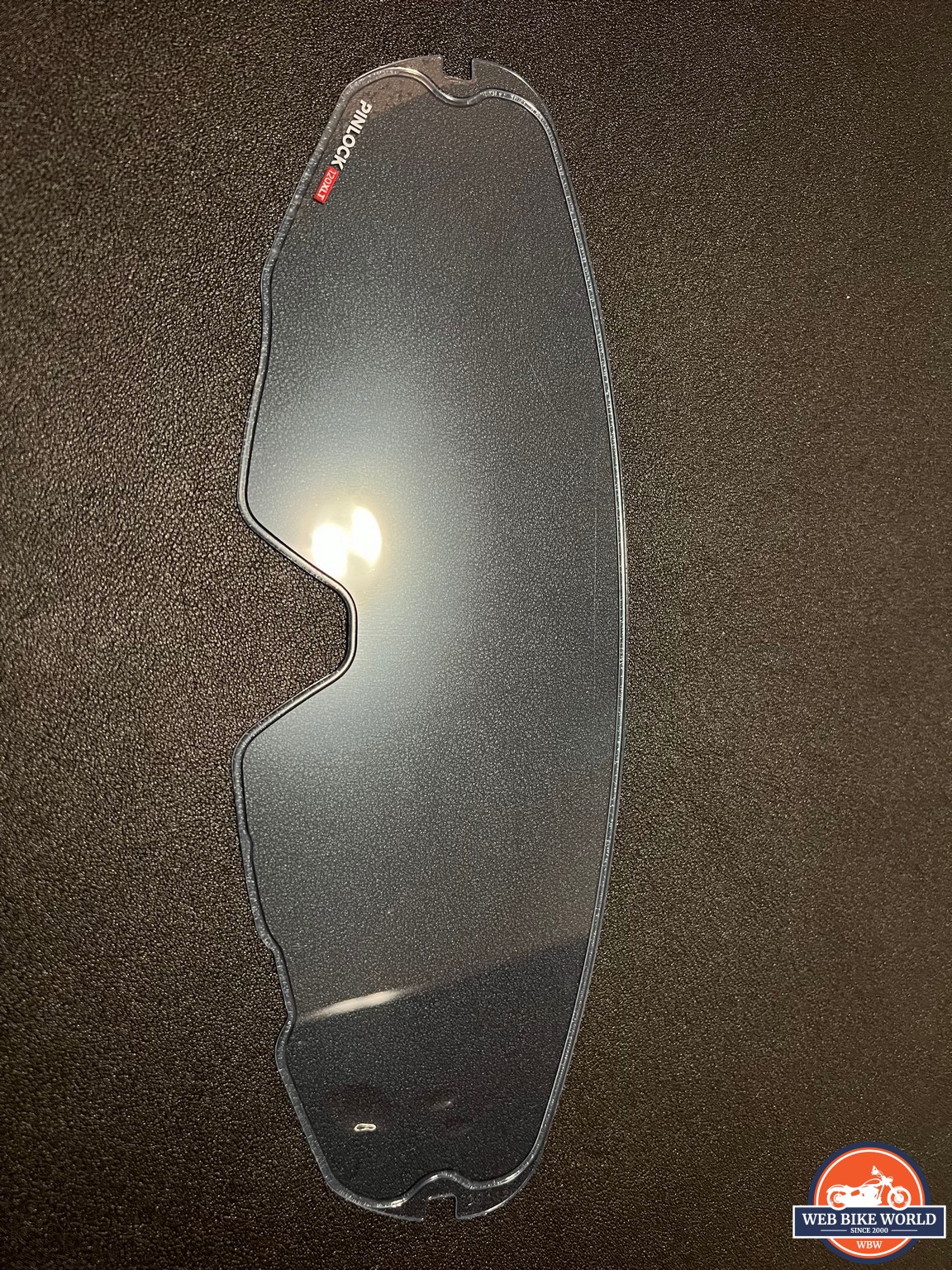

Ruroc does not include their Pinlocks in your purchase. They are sold separately with three available options:
The 120 XLT has a wider field of view and allows for a higher light transmittance throughout the visible light spectrum. In other words, color will appear brighter and more natural when compared to the Pinlock 70. ProtecTINT inserts will change from clear to light smoke in sunny conditions – almost like transition glasses.
I am happy to report that there was very little difference, visually, between wearing the Pinlock and not. I expected colors to have a tint to them, almost like wearing sunglasses. In reality, I only noticed the slightest bit of a blue tinge.
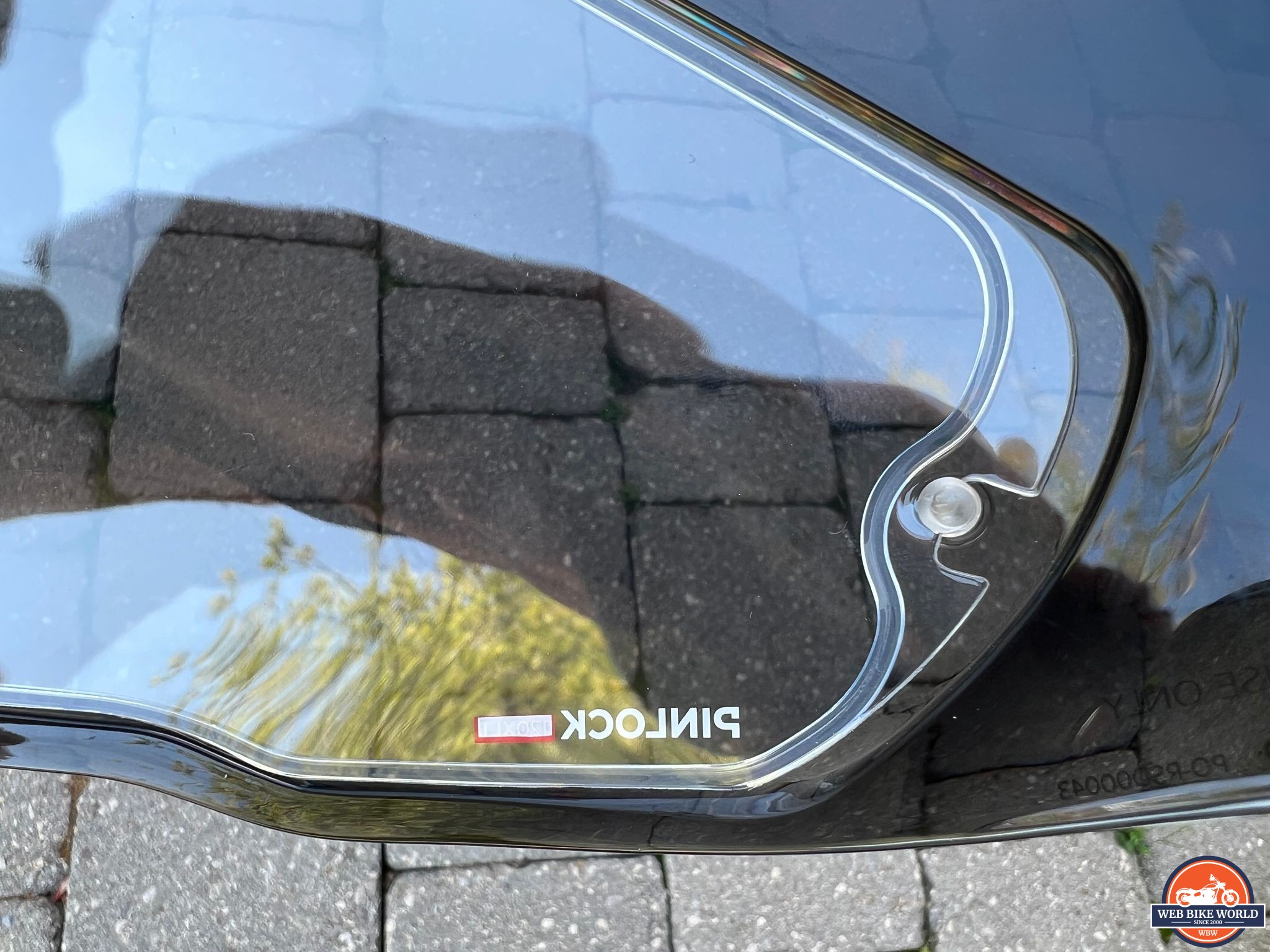

Giving the ATLAS 4.0 Carbon a score for visibility proved to be more difficult than I thought it would be. As far as the helmet design goes, the ATLAS 4.0 provides plenty of visibility with minimal restrictions because of the large eye port.
What’s really hurting the helmet’s score is the face shield and how badly it fogs. The performance of the face shield was severely underwhelming. This is a high-end helmet, not entry-level. As such, it should perform as one.
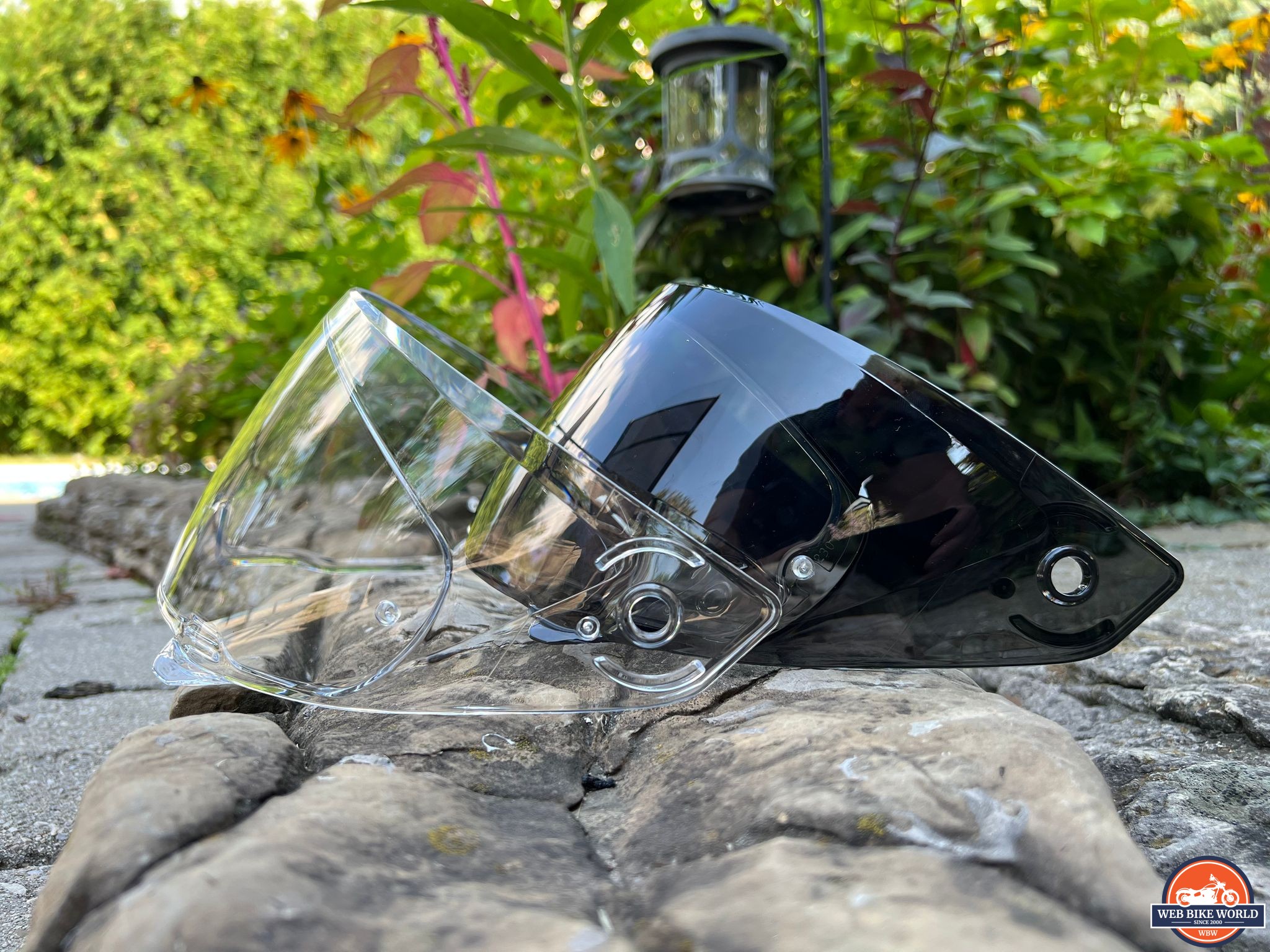

At the very least, I’d expect Ruroc to include the Pinlock in your purchase. The Raw Carbon retails for $595 USD. That’s a pretty penny. Compare that to Scorpion’s EXO-ST1400 which retails for $429.95 USD and includes a Pinlock-ready face shield with insert lens with your purchase.
If you know me you know I’m all about keeping cool while I ride. In my opinion, good ventilation can either make or break a helmet. All other features aside, if I’m hot and sweaty while riding, I’m not interested.
The good news is that the ATLAS 4.0 Carbon helmet has excellent ventilation. The bad news, however, is that some of those vents work against the helmet’s overall score. Allow me to explain.
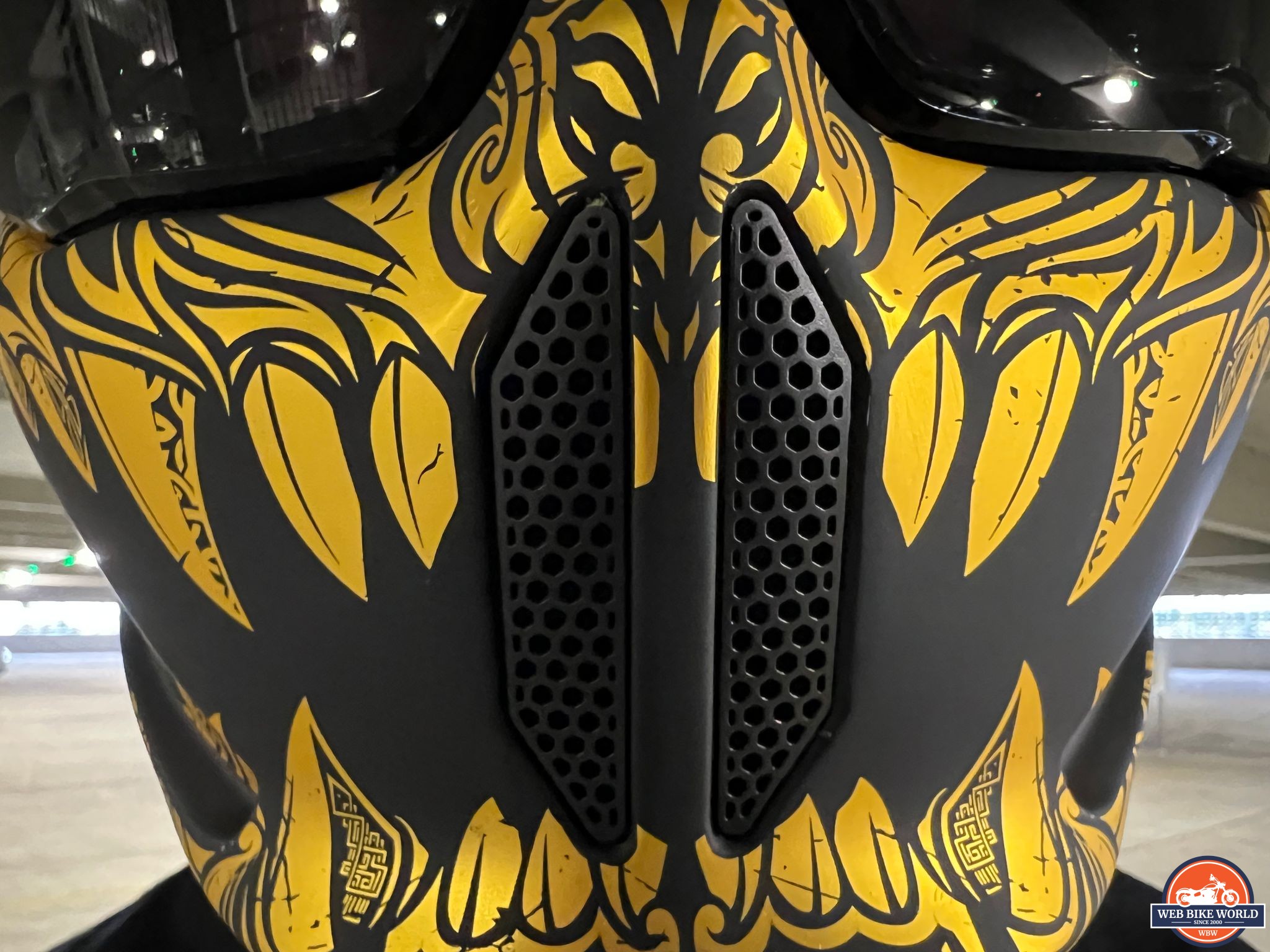

The primary source of airflow inside the ATLAS 4.0 comes from the vent on the face of the chin bar (pictured above). The symmetrical trapezoidal-shaped vents can be opened and closed by a slider on the inside of the mask. The slider is difficult to access while riding, but makes for a seamless look on the exterior. This vent works wonders with ample airflow.
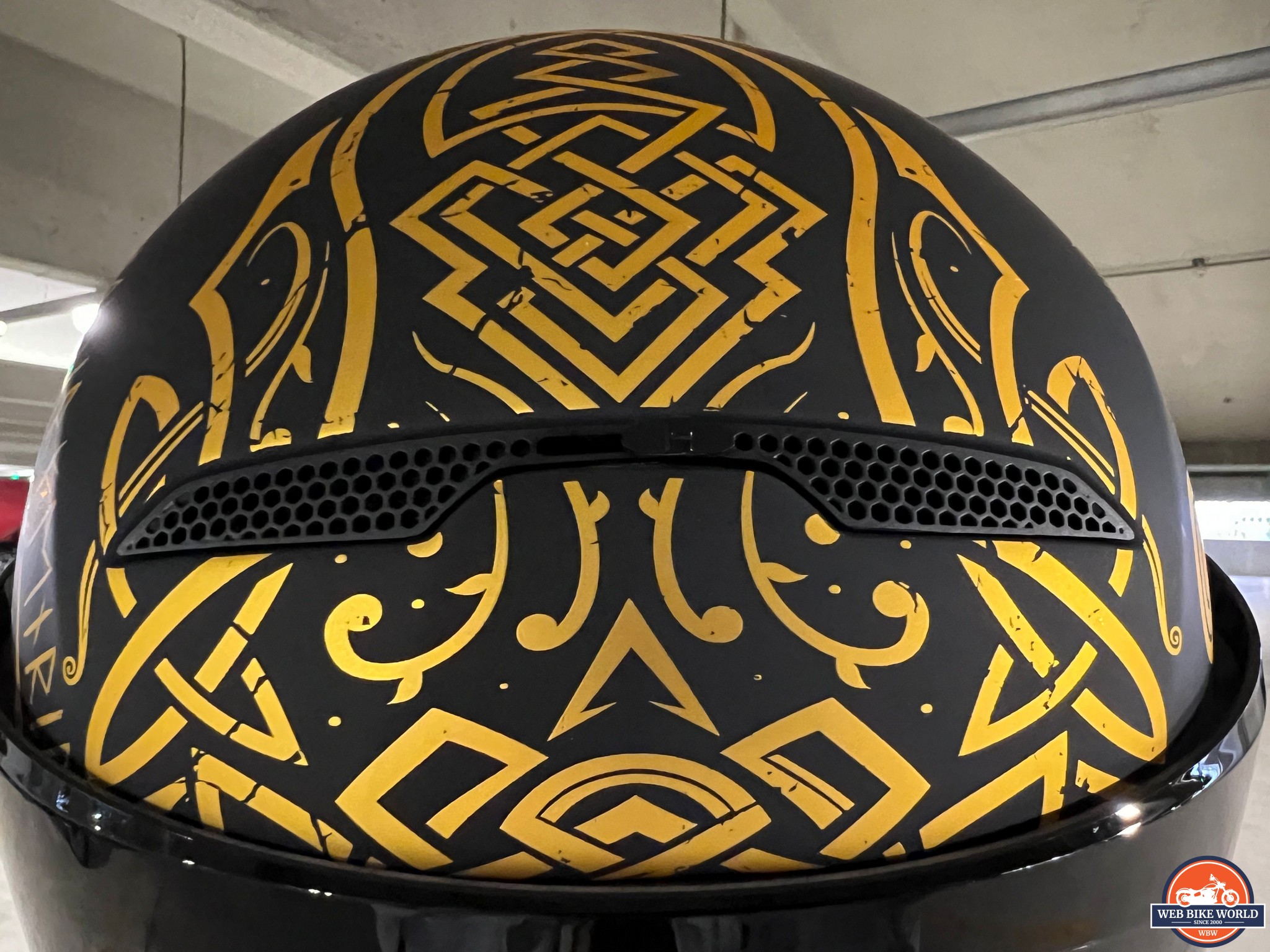

Moving up the helmet, Ruroc has incorporated a brow vent. New to the ATLAS 4.0 is the option to open and close this vent. The vent is fairly small but definitely makes a meaningful difference. In my experience, it did a fair job moving hot air trapped inside the helmet toward the back and out the rear dual exhaust.
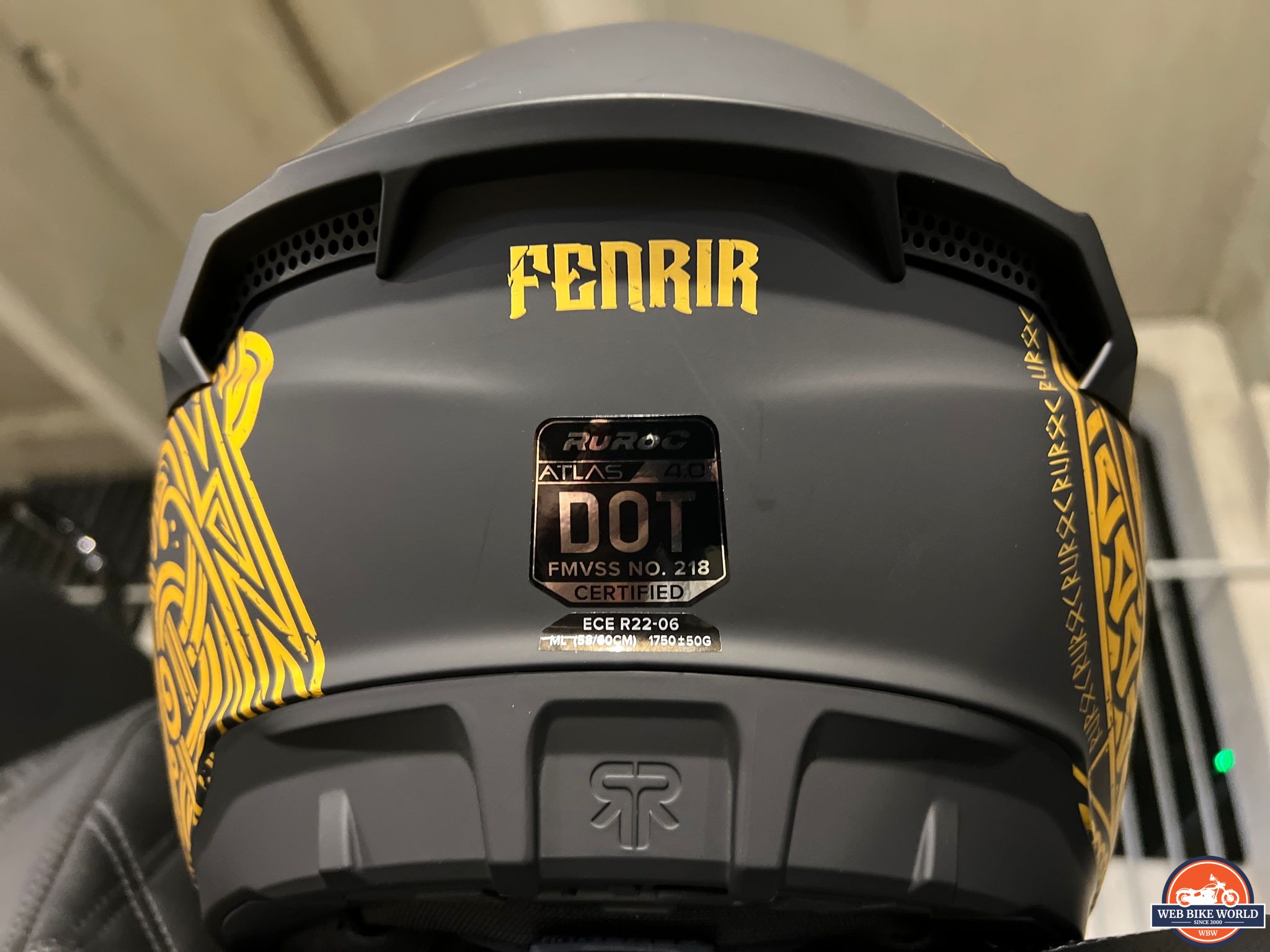

On the side of the helmet, located just below the rider’s ears, are side vents. Contours in the helmet lead to the slightly recessed intake vents which are partially covered by a hard plastic shell. My guess is that the purpose of the plastic cover is for greater aerodynamics and to eliminate wind noise/whistling.
Unlike the ATLAS 4.0 Street models, the Carbon & Track line of helmets receives additional vents inside the scoops of the chin bar. The vents are located on either side and look like small slits in the helmet’s shell. These vents, along with the aforementioned side vents, cannot be adjusted.
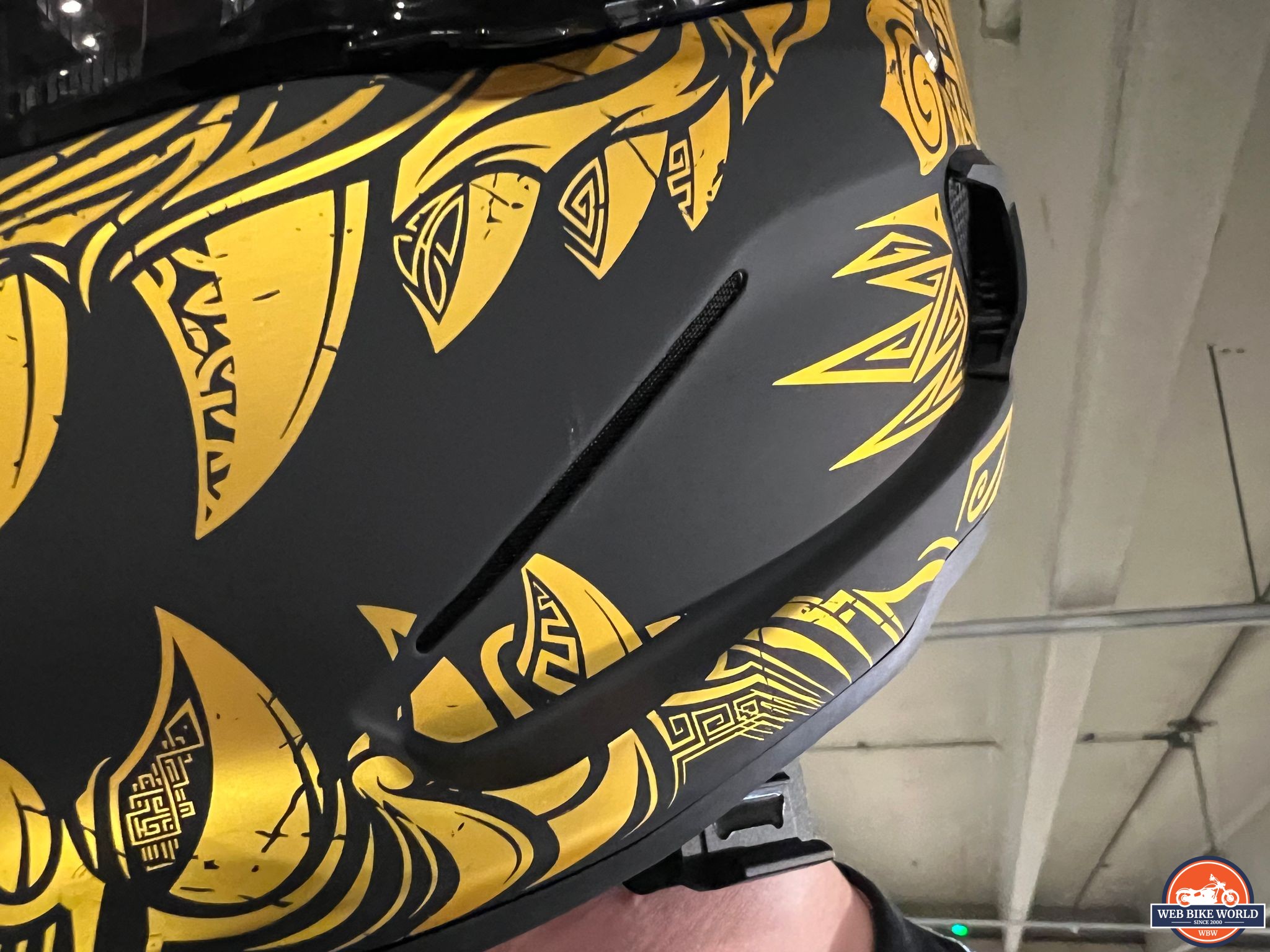

I’m not one to complain about a bit of road noise. I wouldn’t be riding a motorcycle if I were afraid of some wind.
With that being said, the ATLAS 4.0 doesn’t create a bit of road noise; it creates a lot.
The intake vents on the side of the helmet are located right below the rider’s ears. As you’d imagine, all the air flowing in from those vents is loud. This is the first helmet I’ve worn that I’m not able to drown out the wind with my music.
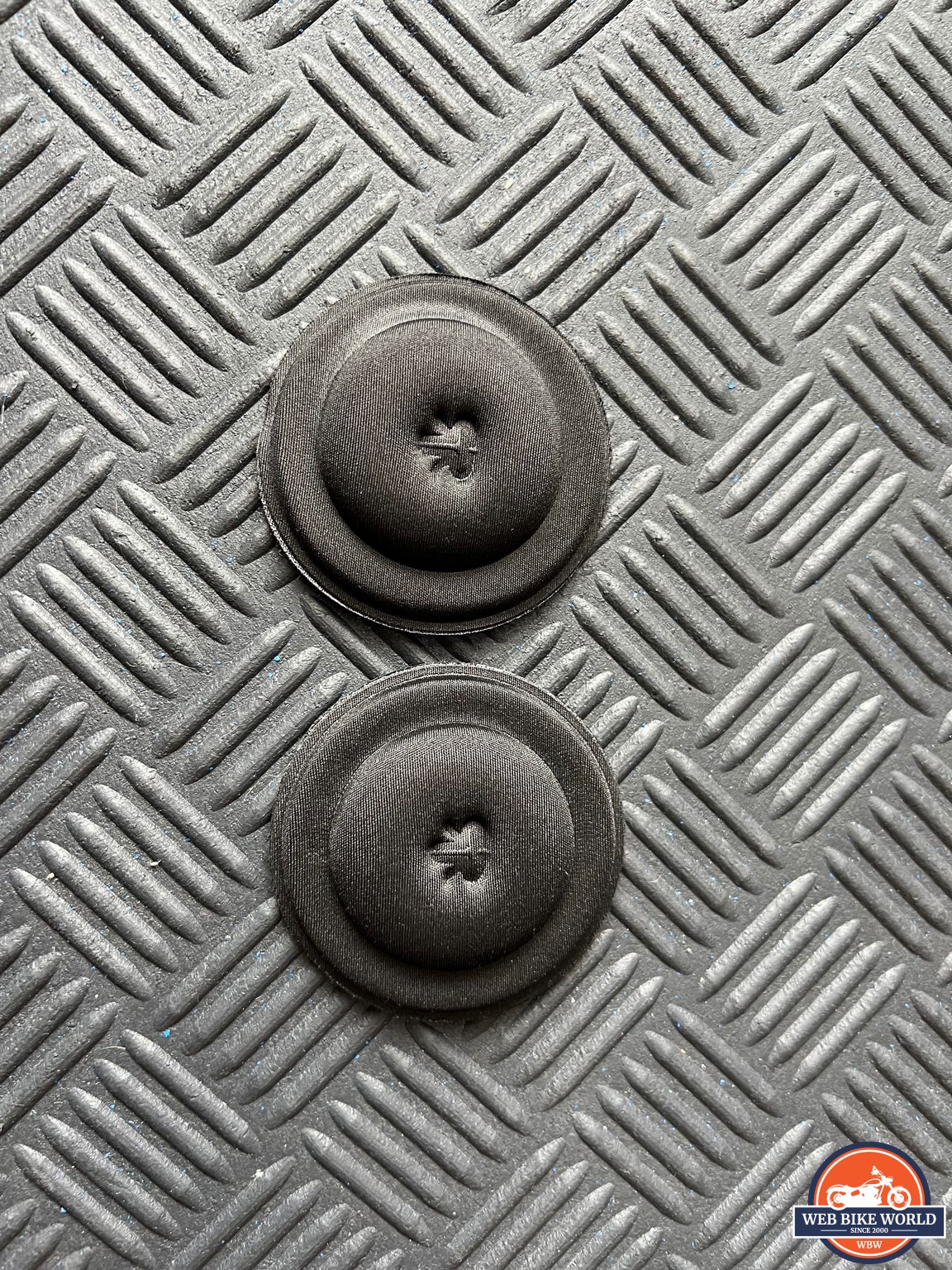

Included in the ATLAS 4.0 Carbon box were two foam cutouts that can be placed inside the helmet to help block out wind noise. They are installed underneath the cheek pads and aligned using factory-installed velcro strips.
I found that the foam cutouts made a marginal difference in blocking out wind noise. With or without them I could hear wind swirling around the helmet and other road noise. On a positive note, they brought the Shockwave speakers closer to my ears which enhanced the sound from them.
The ATLAS 4.0 worked hard to keep my head cool while riding! I was very happy with how well the intake vent on the face of the chin bar performed. I keep my vents open at all times but the option to open/close the brow vent is a nice addition for riders. All in all, this helmet has plenty of airflow.
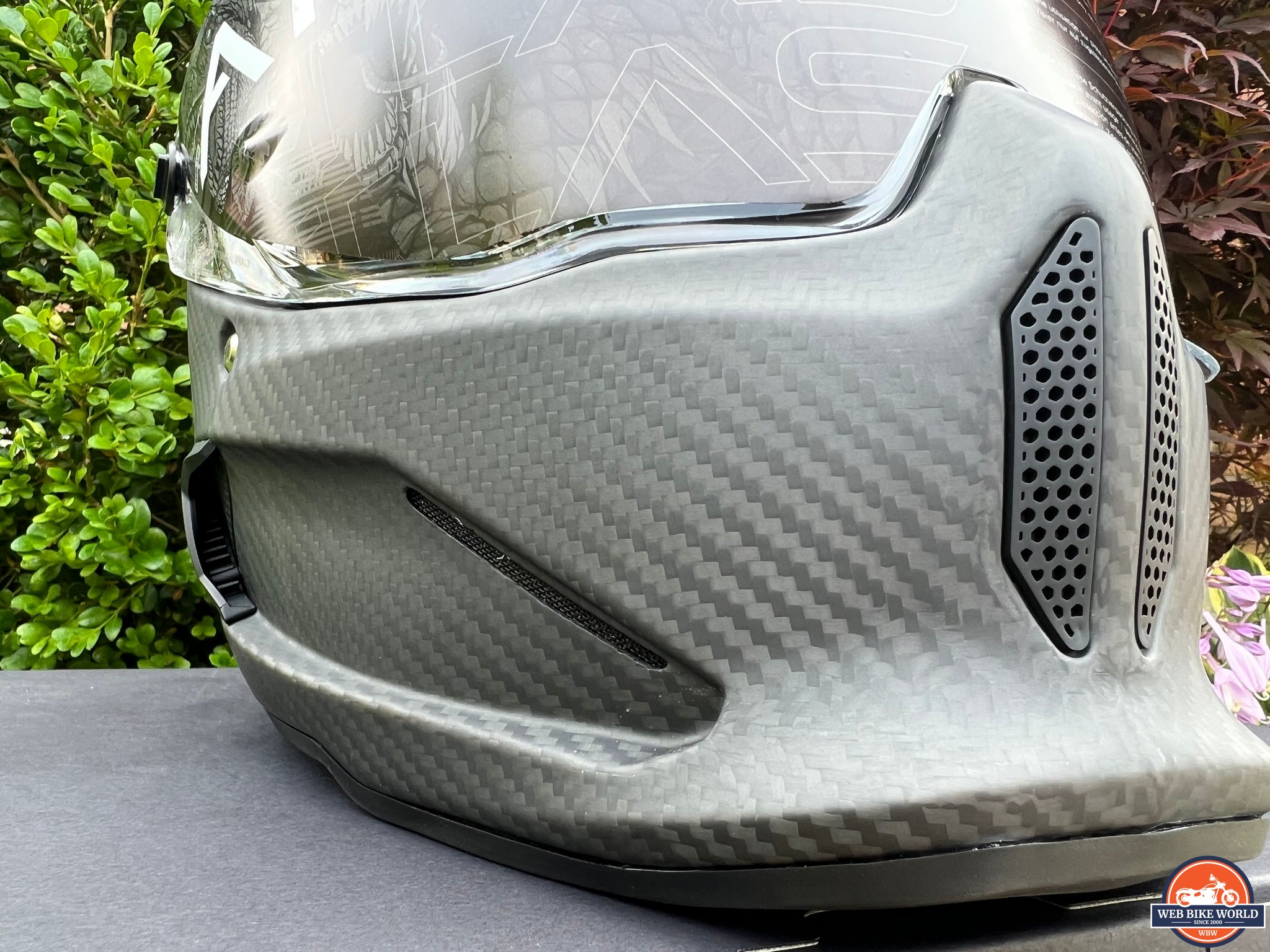

My biggest issue with the ATLAS 4.0’s ventilation is the side intake vents. While they perform their job well, the noise created by them is enough to wish they didn’t exist. At the very least, I’d love the option to be able to close them.
Ruroc claims that the ATLAS 4.0 helmet is their quietest helmet by 57%. Read the fine print and that number is based on the ATLAS 3.0 vs. our leading competitor. I’m not here to dispute that claim, especially considering I haven’t worn the 3.0. What I am saying is that I wouldn’t describe the ATLAS 4.0 as a quiet helmet.
One of my favorite features of the ATLAS 4.0 Carbon Helmet is its compatibility with Shockwave.
Shockwave is a Bluetooth audio system that seamlessly integrates with ATLAS 3.0 and 4.0 helmets. At the time of writing, a free Shockwave unit was included with every helmet purchase from the Carbon line.
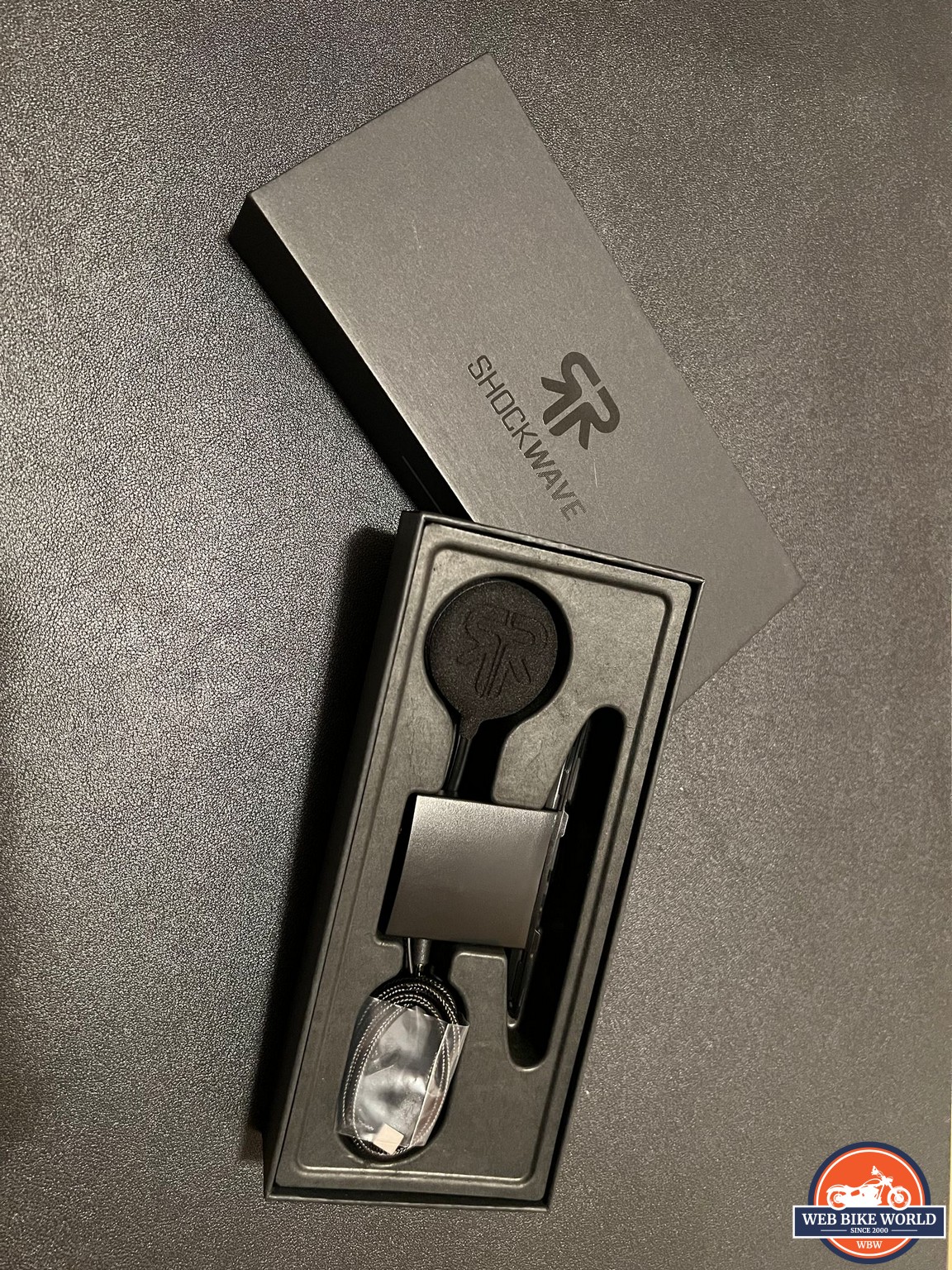

The unit took me no time at all to install. A small cover is popped off the back of the helmet to reveal two connecting wires, as well as the built-in pocket for the main device. The Shockwave is held in place by two small magnets and sits flush with the rim of the helmet.
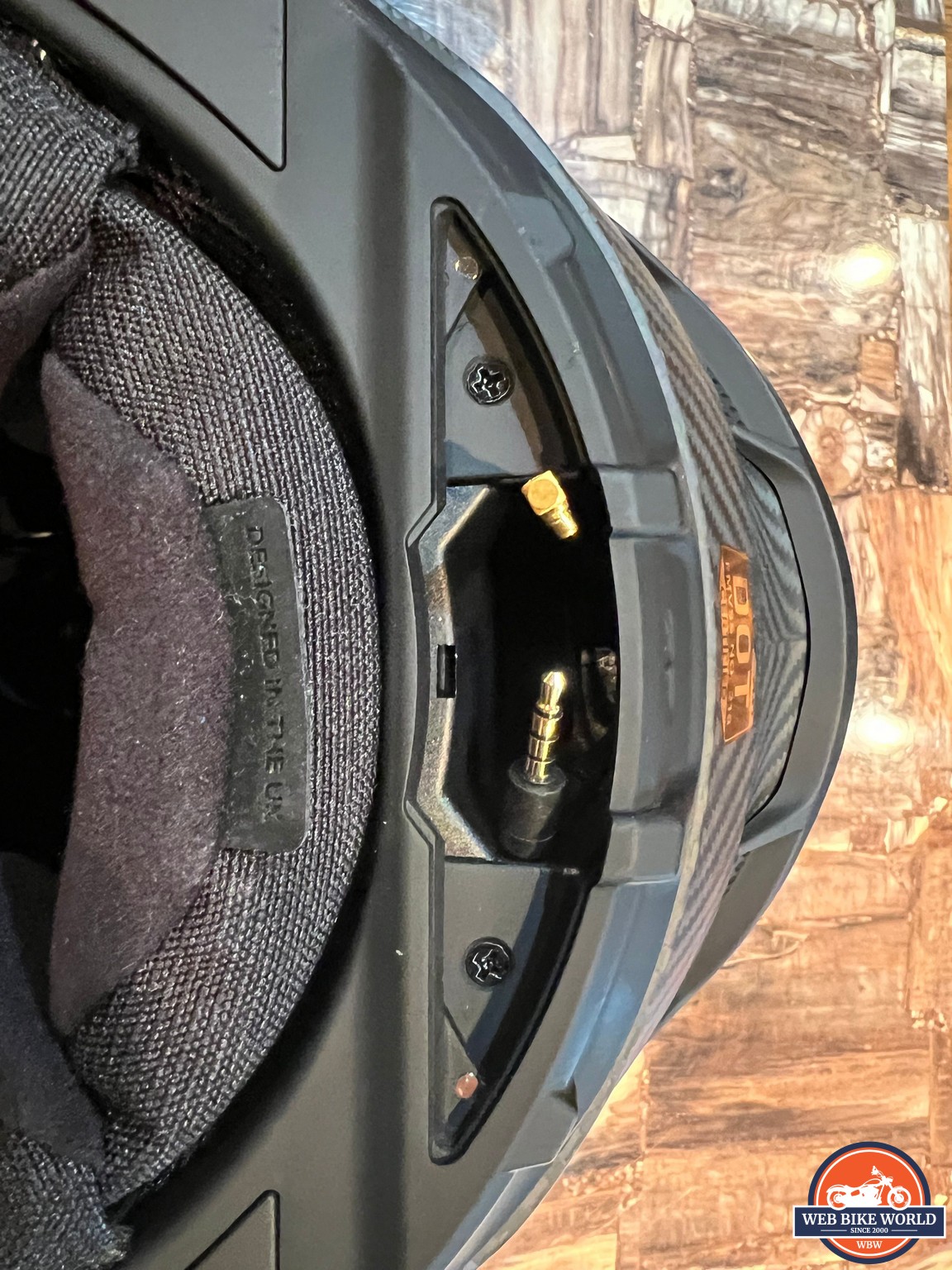

Inside the helmet, two built-in auxiliary ports are located behind the cheek pads on either side. The 40mm Harman Kardon Hi-fi speakers plug into these ports and then are held in place by velcro strips. The velcro strips are around the ear holes in the cheek pads, as well as on the chin bar near the front intake vent for the microphone.
The shockwave has 4 built-in buttons for various controls. The buttons are small and can be difficult to operate with a gloved hand. Because it’s located on the back of your helmet, it can be troublesome to operate while riding and quite distracting.
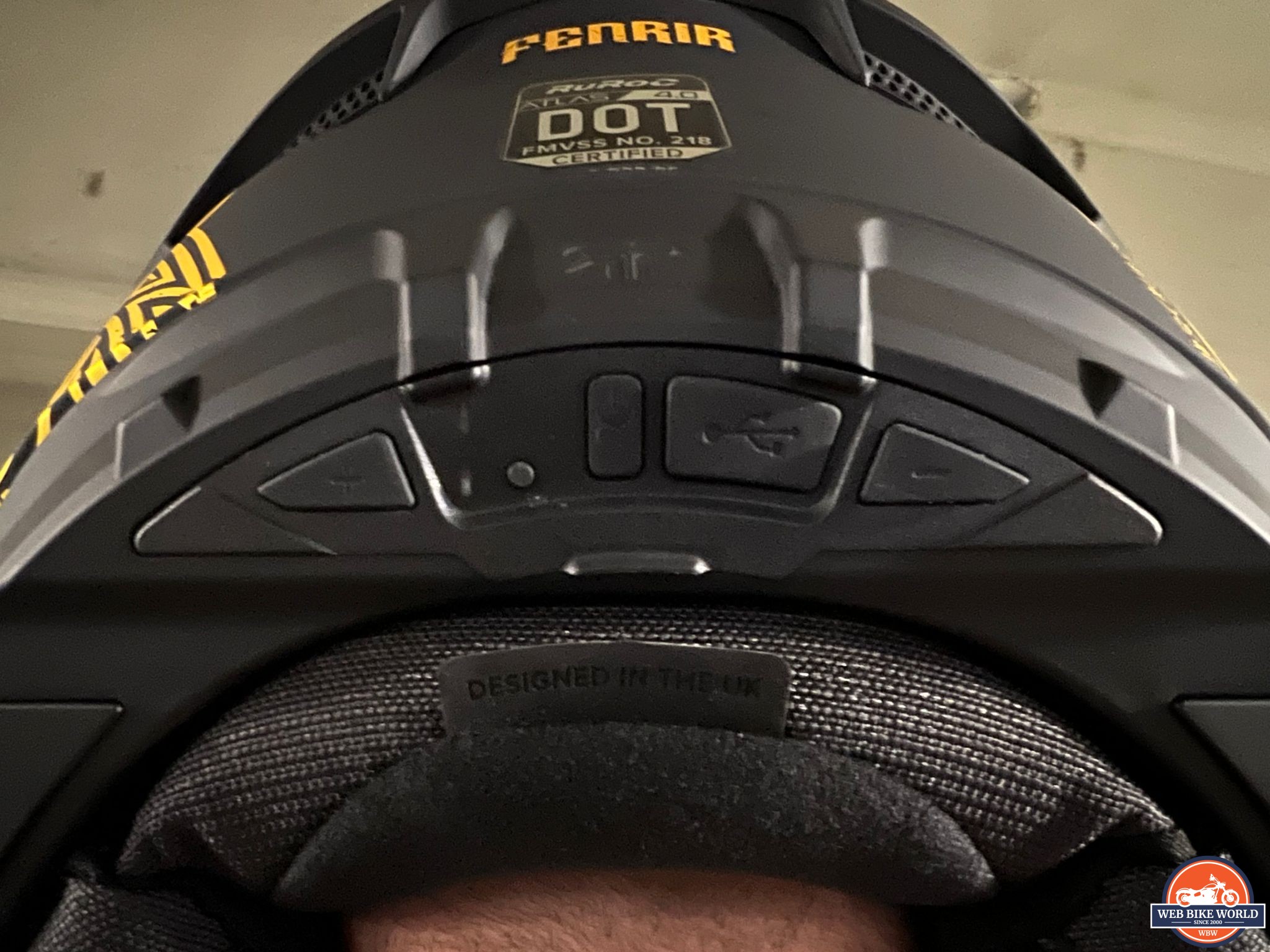

By holding a tiny button on the Shockwave unit you can enter Intercom mode. I was able to pair my helmet with Ashley’s and for the first time have a conversation with her while riding. At times the sound was muffled and hard to understand, but it was nice to have communication with my passenger. Even with the front intake vent open, road and wind noise was kept at a minimum through the microphone.
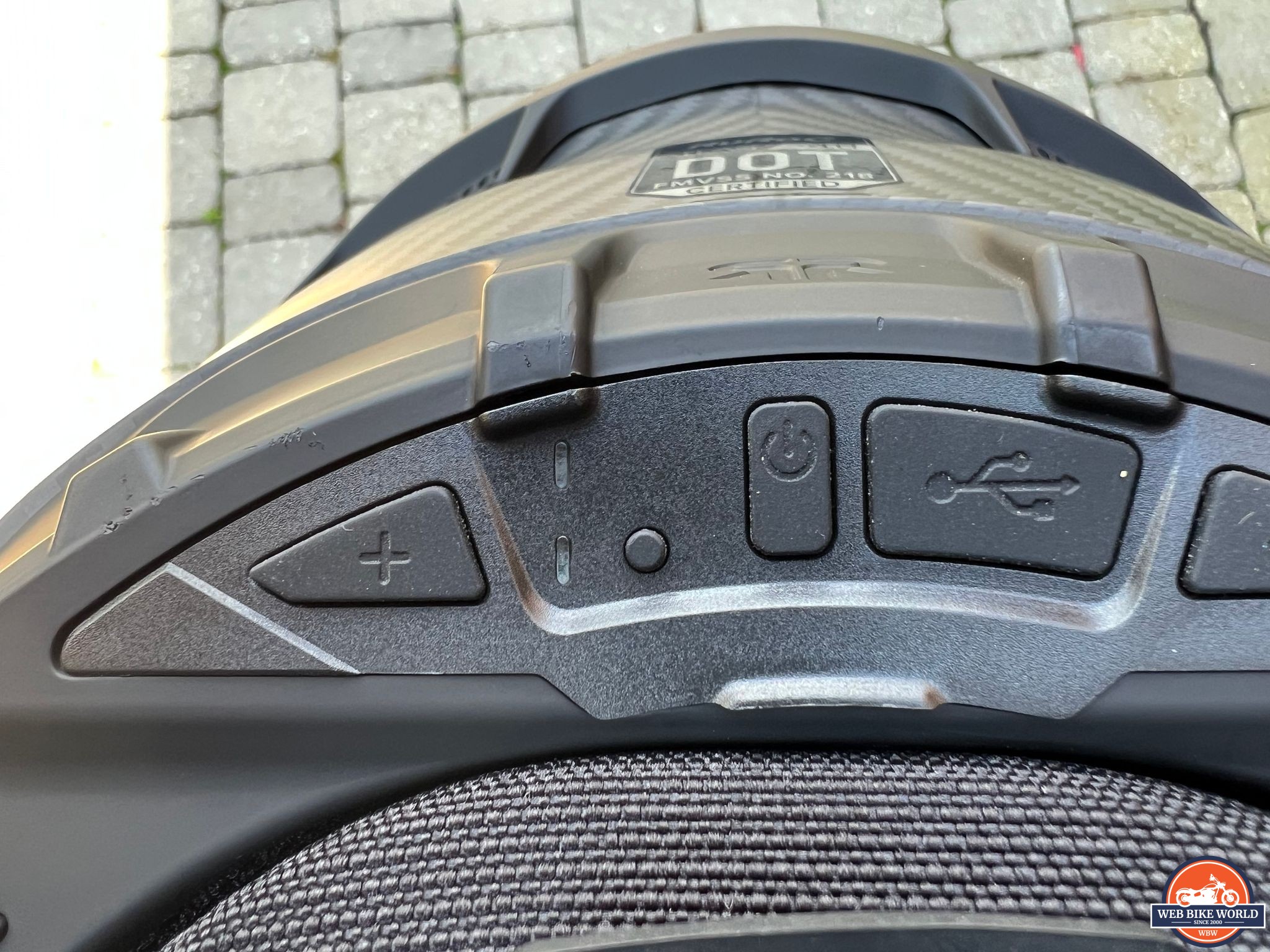

It is important to note that there was zero noticeable delay while using the intercom feature. I heard Ashley’s voice as she said it, not moments after. At times, the device glitched and repeatedly said “Intercom Connected” every 30-45 seconds. A quick reset of the device temporarily fixed this issue.
The music quality was leaps and bounds ahead of my Sena unit. The sound is crisp and clear with great bass. The system has a wide range of volume capabilities and was loud enough to be heard under all conditions I put it through.
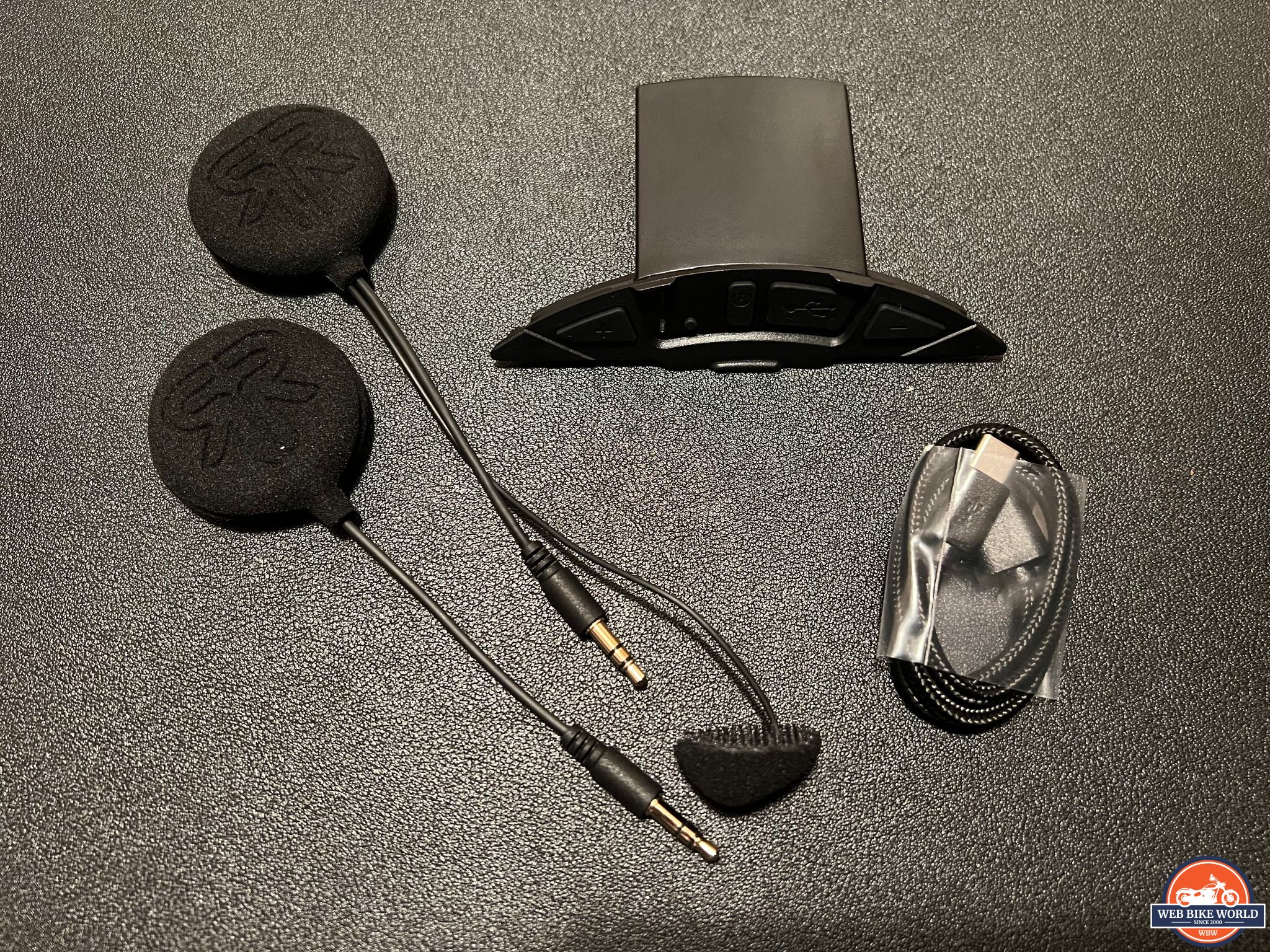

I didn’t think it was possible to have such good-sounding music while riding. I showed a few relatives and they agreed; the sound was fantastic. My previous Sena unit sounded like music echoing through a tin can. This was a massive improvement for me.
I made a few phone calls while riding to test out the sound quality. Oddly enough, the quality of audio output for phone calls was far less than that of music. The speaker’s voice was muffled and full of static making it a bit difficult to hear at higher speeds. On the other end of the line, my voice was crystal clear and free of any road/bike noise.
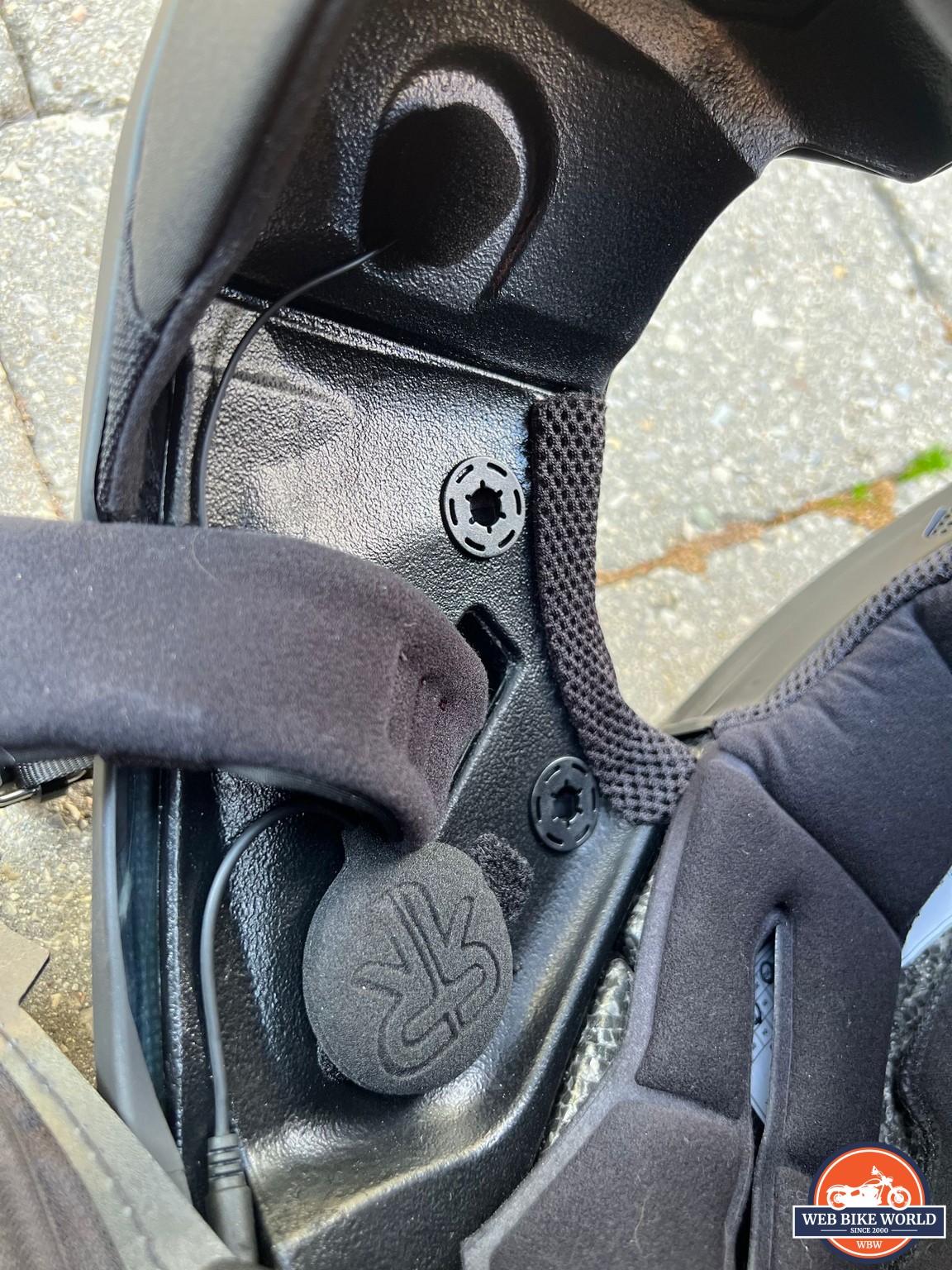

The intercom feature is only compatible with other Shockwave devices. If you wish to connect your Shockwave unit with another, like the Cardo Packtalk Edge, you’ll need to download Ruroc’s Chain App.
Chain is an app available on your phone that allows you to communicate with riders regardless of what device they’re using. The app is simple to use and requires riders to create an account.
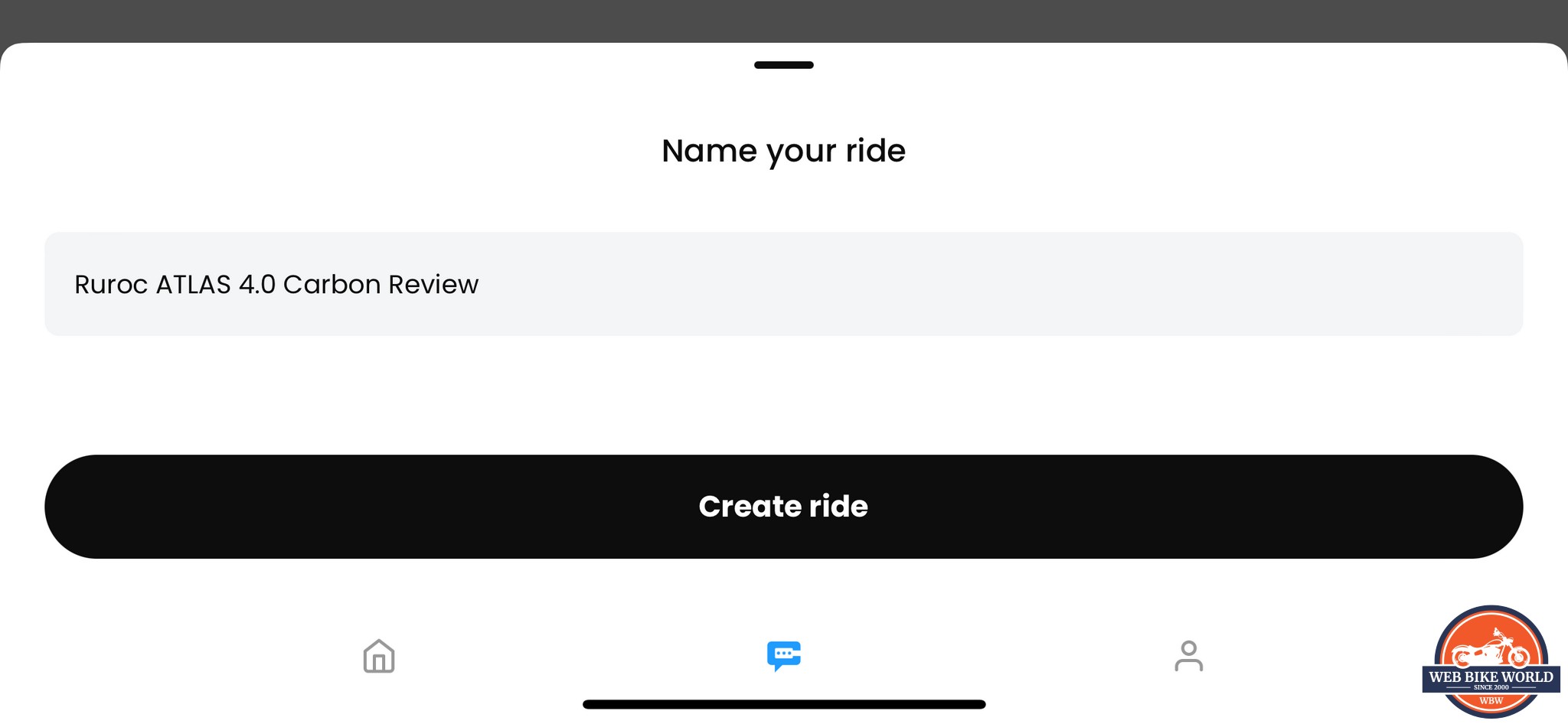

The entire process of registering an account, creating a group, and inviting Ashley took mere minutes. A simple invite code was sent to Ashley via text and she was able to join hassle-free.
Something to keep in mind; Chain works through your cellular data. If you have a small data plan, this may not be the best option for you. While short rides won’t consume much, longer trips with multiple riders could quickly burn through your data.
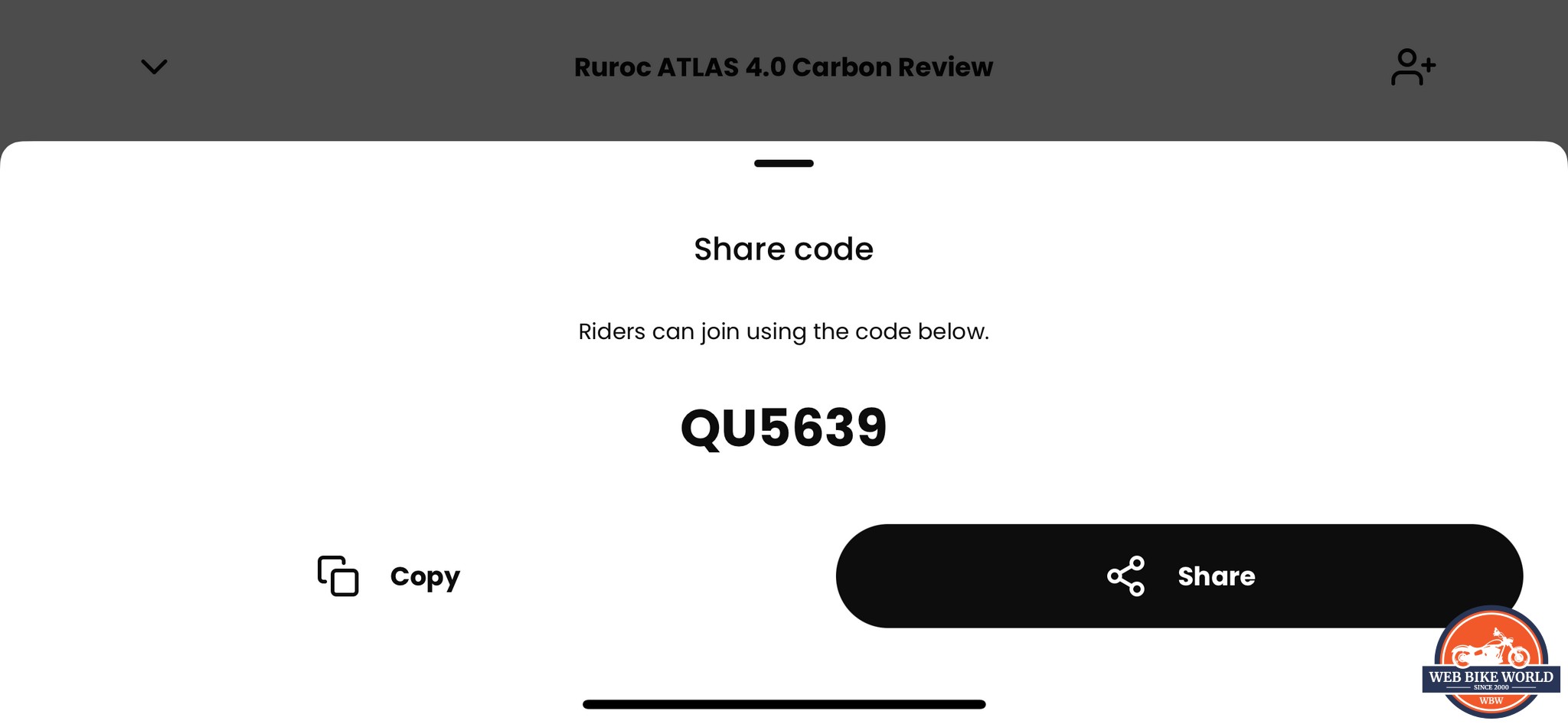

We are connected to each other now more than ever. If you’re the type of person whose phone never stops, the Shockwave is a must-have addition to the ATLAS 4.0. The sound quality for phone calls was poor, but my voice was crystal clear and without interference from background noise.
For music, the Shockwave was a massive improvement over my old Sena unit. The sound was crisp, almost as if I had earbuds in. Such a simple thing as quality-sounding music changed the entire dynamic of my ride.
I was let down by the Chain app. Even though it’s extremely easy to use, the app is unreliable and I was often left repeating “Can you hear me?”. Because the app uses your cell service, anything less than full bars will result in a spotty connection. We opted to use the built-in intercom for Shockwave to Shockwave communication and will find an alternative for connecting with other devices.
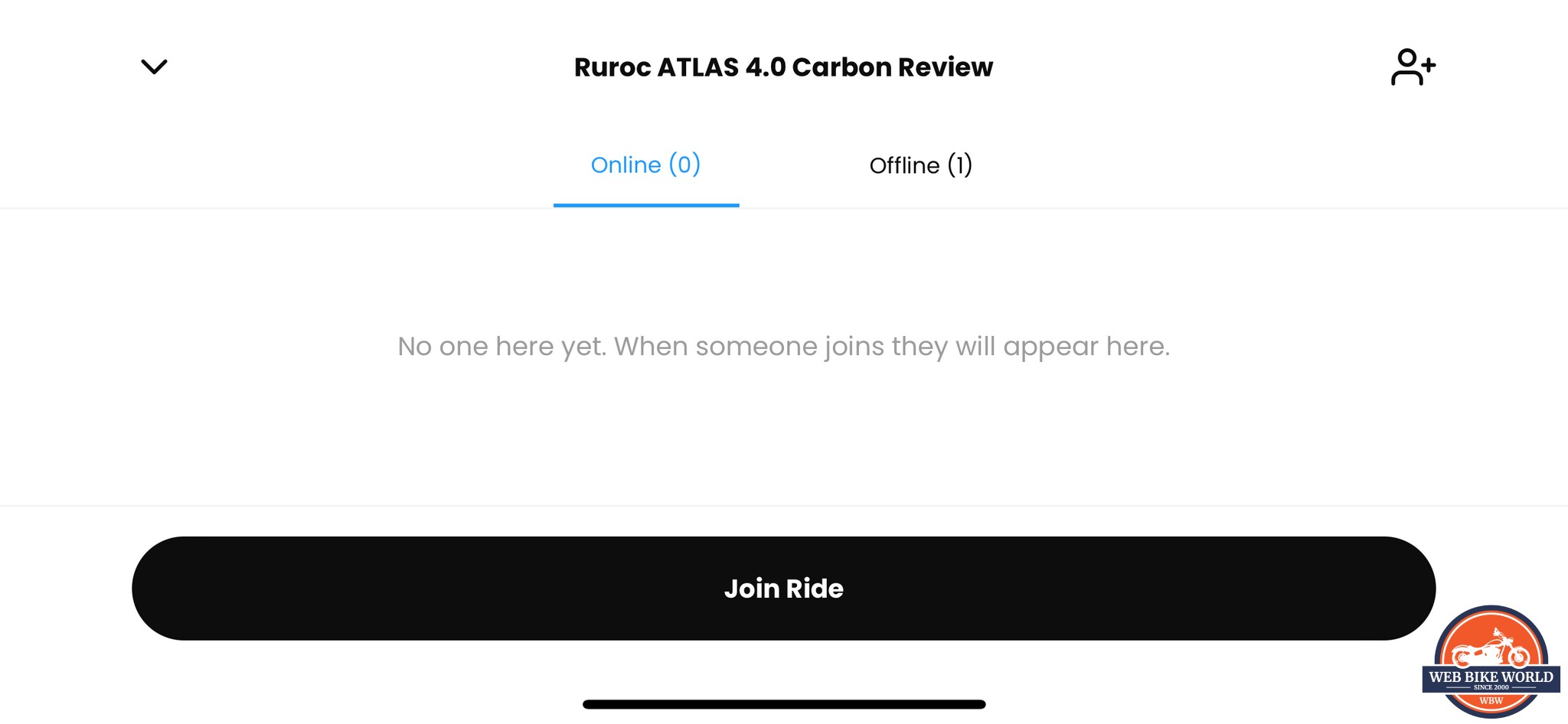

It may be hard to believe but this helmet still has a handful of features that deserve to be covered. While I won’t go in-depth, I will highlight each as I believe they’re important to justify the value of the ATLAS 4.0 Carbon.
Integrated into the helmet pads is an emergency quick-release system. In a life-or-death situation, the pull tabs allow first responders to remove your helmet faster and easier. It is distinctly marked in red for EMT’s to quickly identify.
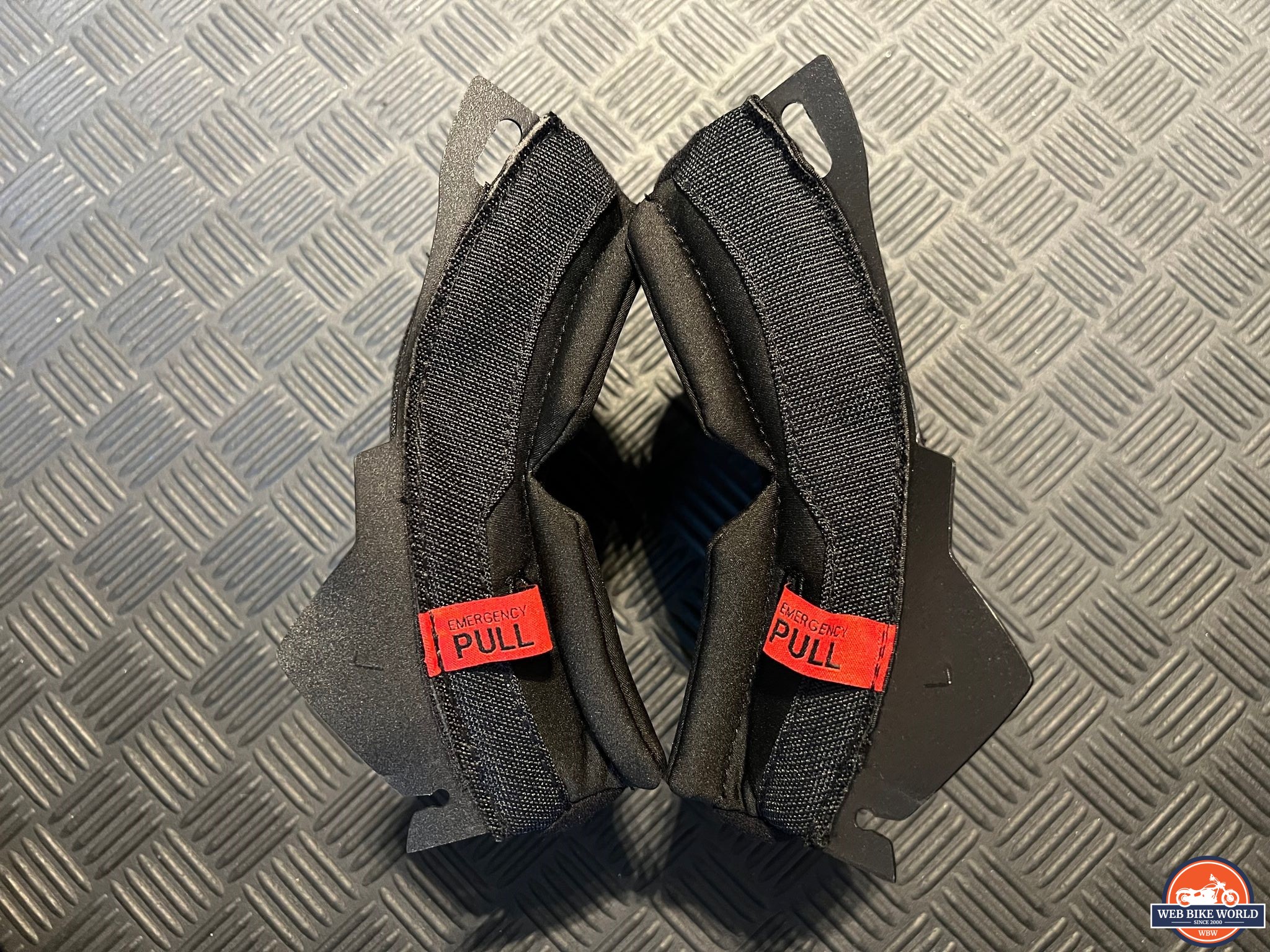

Unlike a fire alarm, feel free to give it a pull. It makes light work of removing the liner when installing a Bluetooth audio system or when time to wash.
The ATLAS 4.0 Carbon comes outfitted with a magnetic Fidlock closure. Simply adjust the strap to the necessary tightness and secure it in place. A strong magnet holds tight against any pulling or ripping forces. Yet, to remove you simply pull the red tab and it releases with ease.
This is perhaps one of my favorite features of the helmet.
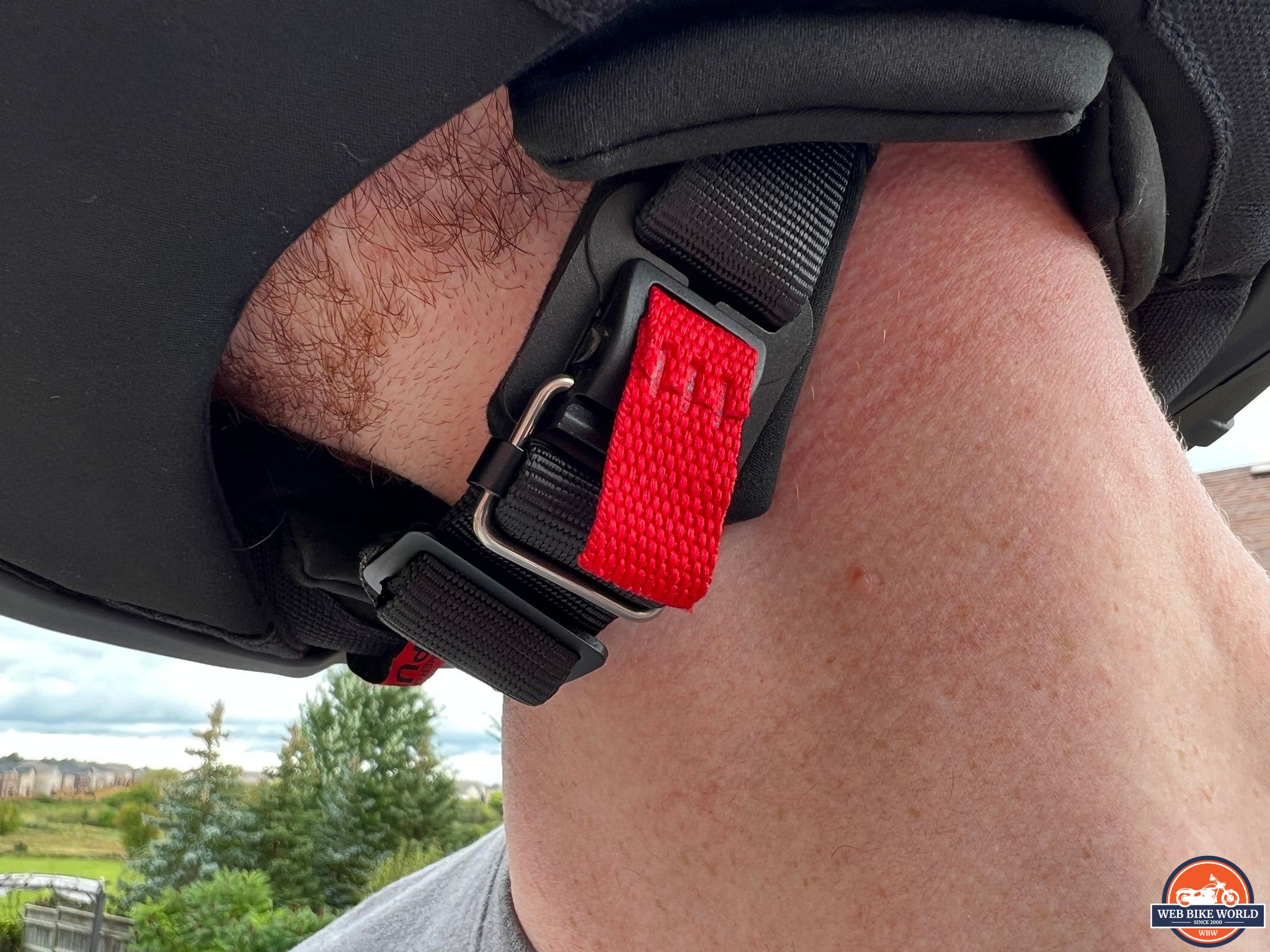

We’ve previously discussed the RHEON liner and how it works to protect your head. What we didn’t discuss is whether or not that liner is cleanable! By that, we are looking at whether or not the cheek pads and neckroll return to their original state after being soaked and scrubbed.
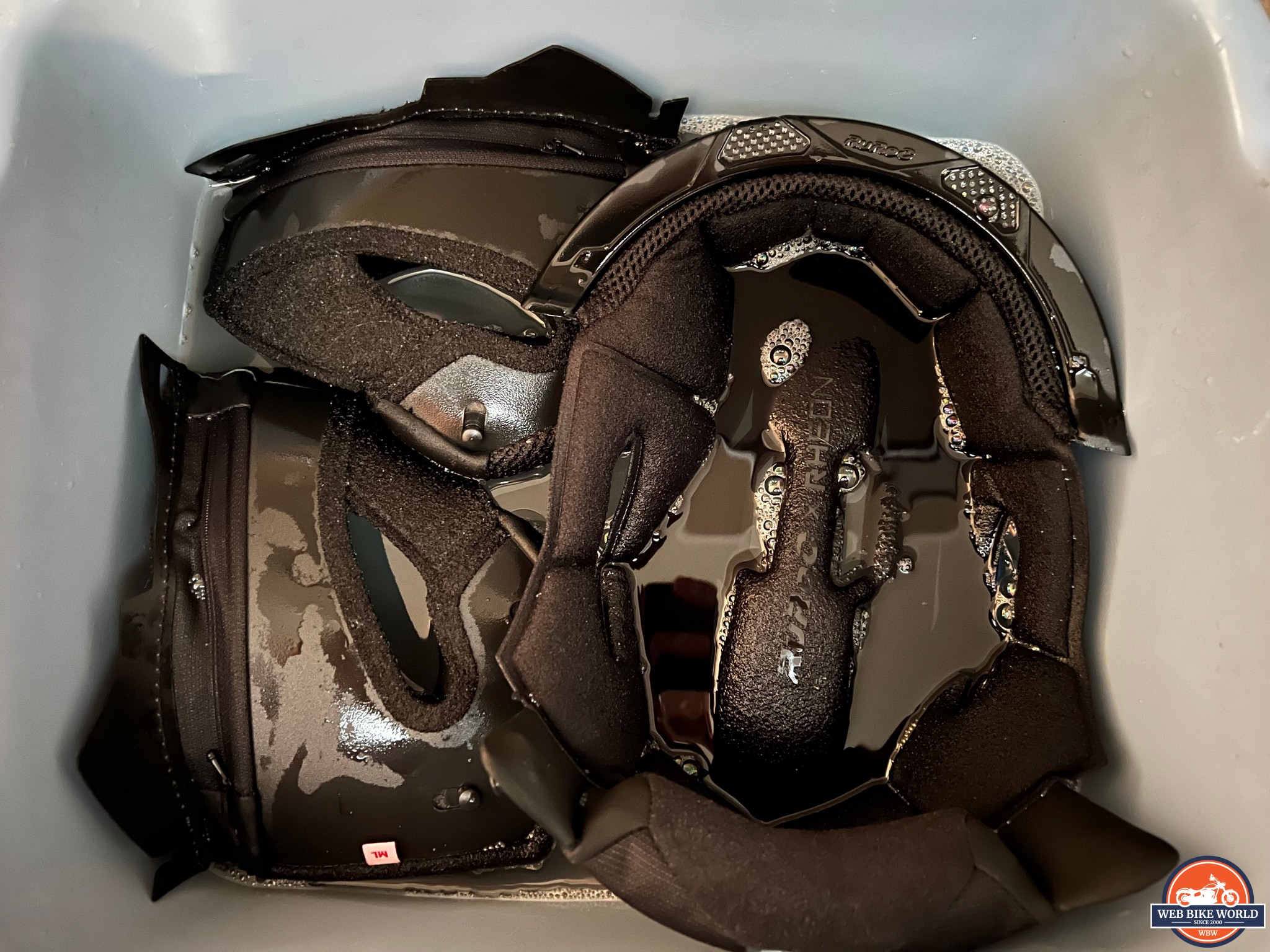

As I do with all my helmets, I put the headliner from the ATLAS 4.0 Carbon into a bucket of warm, soapy water and gave them a light scrub. Cleaning the liner didn’t take much effort at all, yet afterward, the water in the bucket was filthy. The cheek pads and neck roll dried to the same level of firmness that they were prior. Score +1 for the ATLAS 4.0 Carbon.
Included in my final rating are not only what’s listed above, but the features we covered previously, such as the Shockwave compatibility. Overall, the ATLAS 4.0 Carbon helmet has a handful of thoughtful features that improved my riding experience.
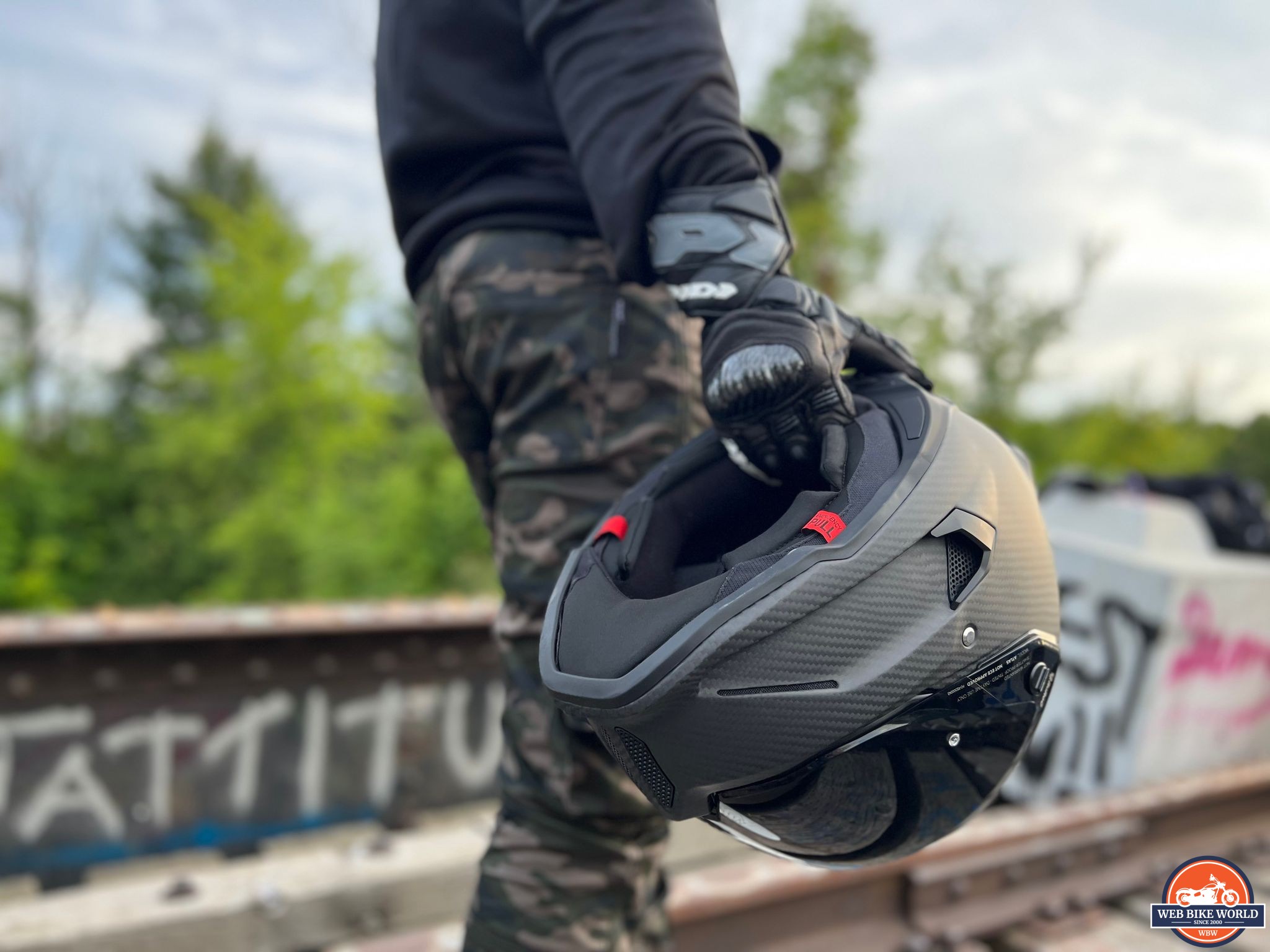

The Fidlock closure was a nice touch and made buckling up the helmet a breeze. It was comforting to know that the emergency quick-release system has me covered in the event of an accident.
Overall, the list of features for this helmet wasn’t extensive but the features it did include were meaningful and performed their intended job effectively.
It is my opinion that the ATLAS 4.0 Carbon is a good helmet, but a few improvements can be made to make it a great helmet.
First off, the helmet looks amazing. That much is abundantly clear to you and me. The subtle branding with skull-like features pairs well resulting in a fantastic-looking helmet. In my opinion, the breadth of color/wrap options is unmatched.
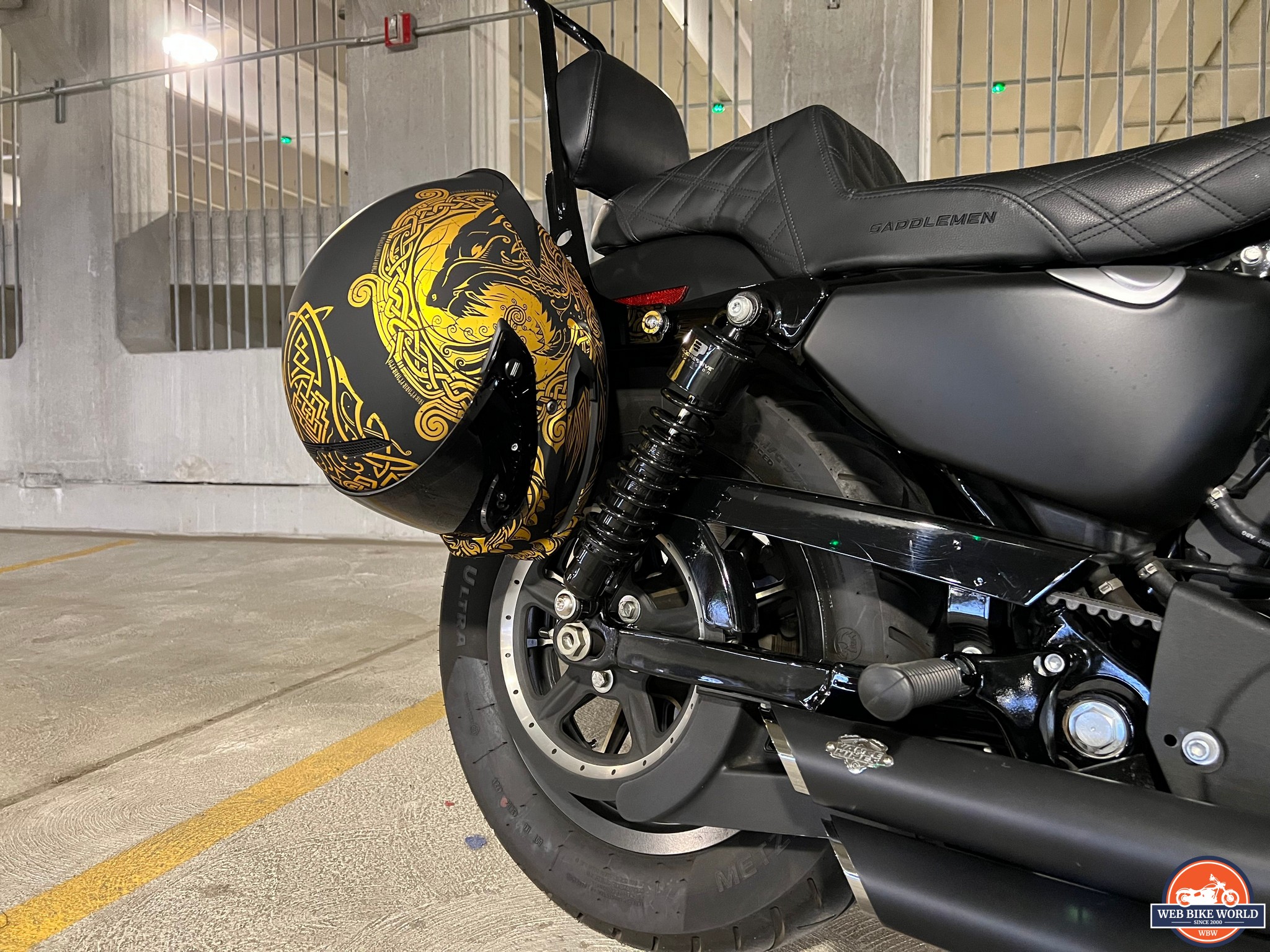

Underneath the flashy design schemes is an industry-first technology. As I mentioned, the science behind RHEON seems promising and I’m excited to see what the industry does with it. Meeting, and exceeding ECE 22.06 certification is a step in the right direction and scores big in my books for protection.
The helmet does a great job of managing hot air. While moving, my head quickly cooled down as the intake vents did what they were made to do. I especially enjoyed being able to crack the visor a smidge to allow additional air in.
Unfortunately, the helmet does have some drawbacks. Most notably, the noisy side vents and face shield. For the amount of airflow they provide, I’d rather Ruroc eliminate the side vents from their design altogether, or incorporate a means of closing them. They are located directly under my ear and as you’d imagine, are very loud.
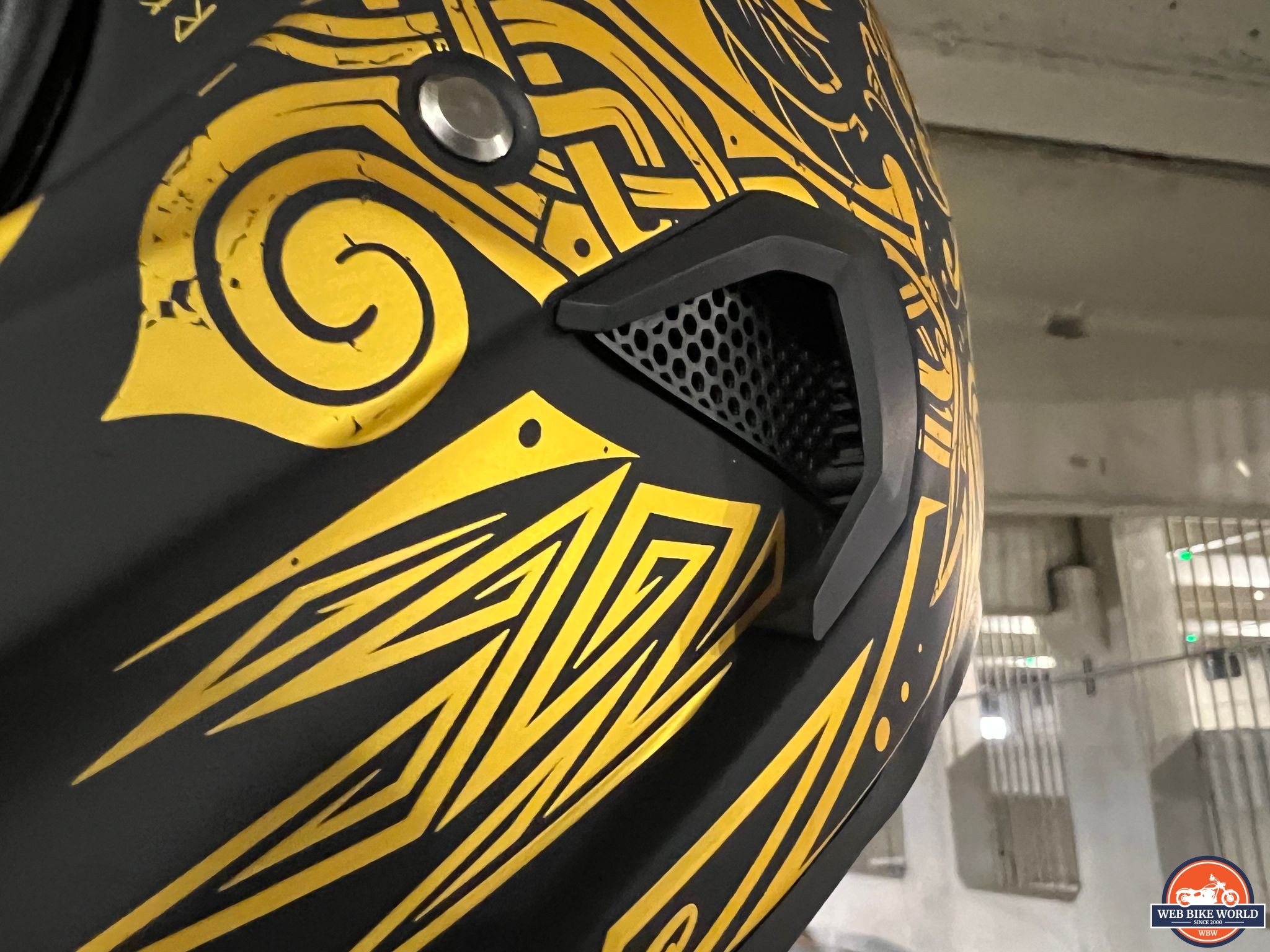

The face shield fogs up very easily. As a high-end helmet, I’d expect better performance out of the shield, or at the very least the Pinlock insert should be included. The fogging face shields are a huge annoyance without them.
The Shockwave Bluetooth audio system was simple to install and sounded great. My expectations for music quality were high and they were met. For communicating with one Shockwave to another, the intercom works great! If you’re riding in a group and connecting to other devices, best of luck.
The Chain app is unreliable and not a good option for connecting with communication devices from other manufacturers. I’d also love to know why the sound quality dropped when making phone calls.
With a few minor changes to the design and performance of the helmet, I think that Ruroc will be a top contender. As it stands, the ATLAS 4.0 Carbon is a good helmet but is trying to compete in a price range with plenty of steep competition that brings plenty of value to the table.
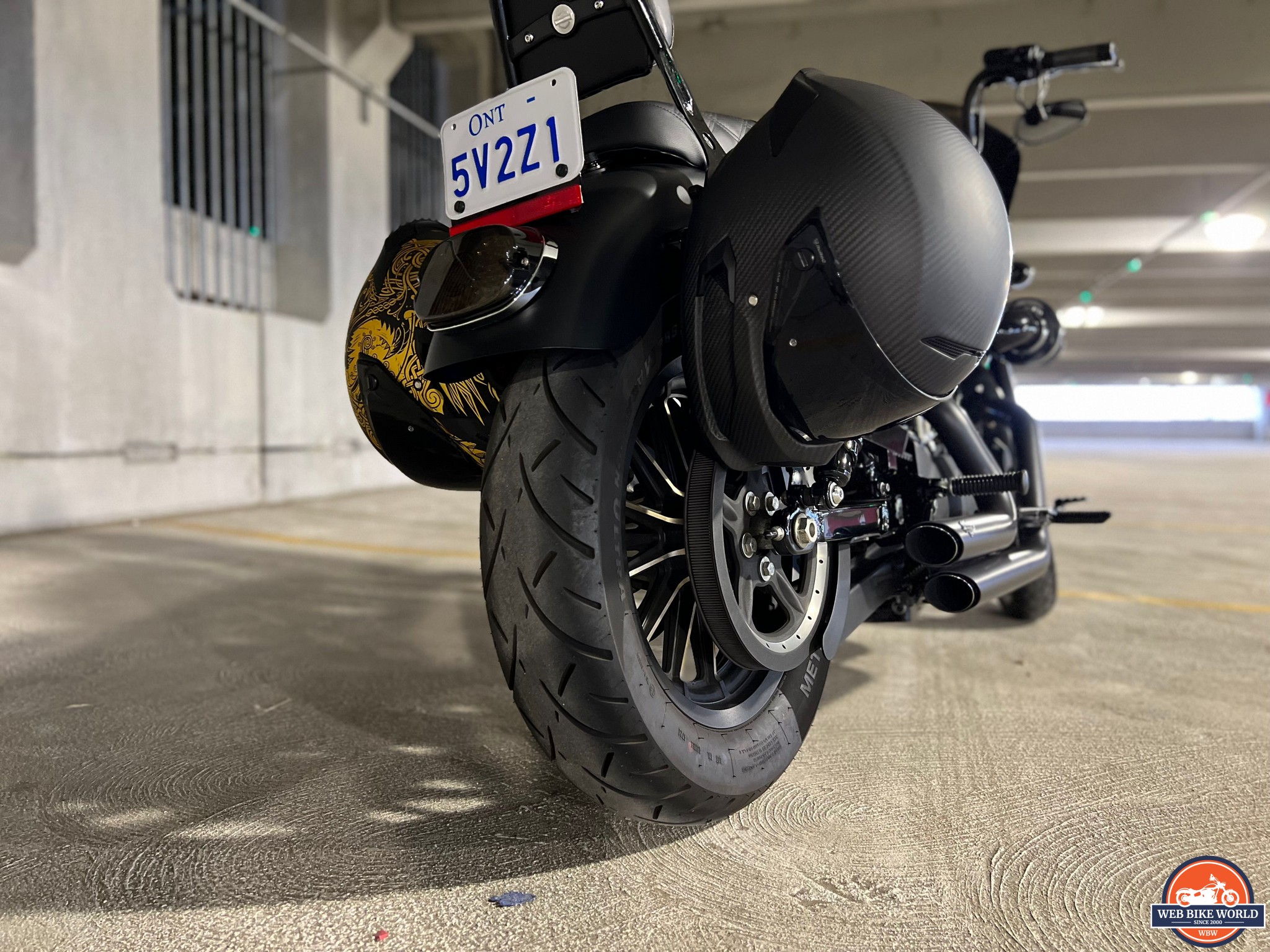

The post Ruroc ATLAS 4.0 Carbon Helmet Review appeared first on webBikeWorld.
Continue reading...
Review Summary
Ruroc’s latest makeover of their ATLAS line of helmets sports a tier list with unique features at each level. The ATLAS 4.0 Carbon line of helmets exceeds ECE 22.06 certification standards with the help of RHEON impact technology stitched into their headliner. The edge-to-edge 215-degree horizontal FOV visor offers an unrestricted view of the road ahead when it isn’t fogged up. Hot air is stripped from the helmet from 4 vents up front and a dual exhaust at the rear. Unfortunately, the notoriously loud side intake vents are back and as noisy as ever. The Shockwave compatibility is seamless and is a good value when included in your purchase.
Build Quality / Protection
Size, Fit & Comfort
Design
Visibility
Ventilation / Noise Management
Features / Value for Money
Pros
DOT FMVSS 218 & ECE 22.06
Industry-first RHEON technology integrated into the headliner
Badass design with loads of color/helmet wrap options
215 Degree horizontal FOV
Great airflow with vents on the face and sides of the chin bar, brow, and dual rear exhaust
Seamless integration of Shockwave Bluetooth Audio System
Cons
Shell feels oversized with poorly designed aerodynamics
The face shield fogs up easily without a Pinlock insert (not included)
Side intake vents make for a noisy ride
Value for Money is low when not on sale/part of a promotion
The helmet wrap scratches easily
3.9
Ruroc ATLAS 4.0 Carbon Helmet Image Gallery
















































































































Buy Now
Ruroc
Review Summary
If you’re looking for the main takeaways from this review, here is my summary on the ATLAS 4.0 Carbon helmet:
- The ATLAS 4.0 Carbon retails for $474 USD to $595 USD.
- The helmet has a carbon fiber shell with integrated RHEON technology in the headline and a multi-density EPS foam.
- DOT FMVSS 218 & ECE 22.06 Certified
- ATLAS 4.0 Carbon helmets are an intermediate oval head shape with 6 different sizes across 3 shells (XXS-3XL). At the time of writing, it is available in 24 different colors/designs.
- Ruroc’s size guide may be inaccurate so it’s best to contact their team for support.
- Badass, rounded design with very subtle branding elements throughout sacrifices aerodynamics for looks
- The helmet fits snug yet comfortably thanks to a dominant neckroll and cheek pads
- Pinlocks are a must as the face shield fogs up very easily
- Ventilation is plentiful but the side intake vents make a lot of noise
- Shockwave Bluetooth Audio System seamlessly integrates with the helmet for crisp, high-quality music and intercom system
- Emergency quick-release system and Fidlock closure are amongst other features
- Overall good helmet but the price point may be high for what you’re getting.


In-Depth Review of Ruroc’s ATLAS 4.0 Carbon Helmet
I was scrolling through Instagram on one particularly uneventful Sunday evening when I came across an advertisement for Ruroc. For the first time that I can recall, I fell prey to the ad and clicked the link. The next thing I knew I was browsing Ruroc’s website looking at everything from helmets to hoodies and all the accessories in between.
Damn you targeted advertising!
On second thought, maybe it was a good thing that the ad had reached me. If you’ve been with us for some time now, you’ll know that we are no strangers to Ruroc. Jim Pruner, an author/reviewer for webBikeWorld, completed a review on the Ruroc ATLAS 3.0 back in 2021.
Since then, Ruroc has released the ATLAS 4.0 back in February 2022. It was promised to come with a heap of exciting new changes over the previous generation.
With a positive score from Jim, I was eager to try it out for myself. Read on as I take you through the last 6 weeks of testing this lid to find out if the ATLAS 4.0 is all that it’s made out to be, or if it’s the product of well-thought-out marketing hype.
What’s New on The ATLAS 4.0 Carbon
The ATLAS 3.0 received a good score from Jim with his biggest complaint being how noisy the helmet was in turbulent air. Even though the troublesome side vents are still incorporated into the helmet’s design, Ruroc claims that the ATLAS 4.0 helmet is 57% quieter than the 3.0.
Another concern with the 3.0 was the helmet’s ability to vent hot air. Claims have been made that the 4.0 has better ventilation than its predecessor. This may be one of the changes I was most excited to test as it can easily be the deciding factor for many on whether or not they like the helmet.
Last, but certainly not least, Ruroc has stepped up their game big time in terms of safety. The ATLAS 4.0 is now ECE 22.06 certified and sports a first-of-its-kind RHEON interior lining. More on that later!


First Impressions
My first impressions of the ATLAS 4.0 Carbon are a mixed bag. On the one hand, the helmet is absolutely stunning. Everything from the helmet design, the helmet bag, and even the box it ships in, screams premium. Visually, Ruroc has knocked the ball out of the park.


On the other hand, the helmet did not meet my expectations on my first ride. I immediately noticed a lack of aerodynamics as my head bobbed in a light headwind. What was apparent to me a little while after was how noisy the helmet was.
Was I just used to riding in my Scorpion Covert FX? Possibly, but I wasn’t going to write off the ATLAS 4.0 just yet. I’ve been far too eager to test this helmet to let one ride sway my opinion and as such I remained optimistic.


Street vs. Carbon vs. Track
Ruroc has restructured their helmet offering into a tier-based system. They currently have 3 tiers of helmets:
The Street being their “entry level” line, and Track being their “premium” level of helmets, and the Carbon nestled right in the middle.
Each helmet tier comes with its own unique set of features and specifications, as well as a jump in price.
Throughout this review, I have been wearing the ATLAS 4.0 Carbon. You’ll notice I periodically mention Raw Carbon. Please note that this is a design/color scheme that Ruroc offers for its Carbon tier of helmets. The design name Raw Carbon is not to be confused with the helmet tier.


Shell Construction, RHEON Impact Tech & Multi-Layer EPS
Behind the badass looks and eye-catching marketing techniques is a piece of equipment that you’re trusting your life with. In the event of a crash, it won’t be the flashy box and integrated sound system that keeps your head in one piece.
The build of the helmet, and the quality of said build, should be above all else on your list. Bear in mind that I can only comment on the information provided by Ruroc, as well as what I can feel with my own two hands. As such, I cannot disprove any testing or claims made by the manufacturer or other third parties online.


Carbon Fiber Shell
The ATLAS 4.0 Carbon shell is made out of… Well, you guessed it.. carbon fiber. Carbon fiber is strong and light which makes it a great material for helmets. It is capable of absorbing a lot of shock and equally distributing force across the surface instead of localizing it to the impact area.
In terms of safety, the carbon fiber shell is seen as an improvement over the Street line of helmets that are made out of fiberglass. However, the ATLAS 4.0 Carbon helmets are +/- 50 grams heavier than the ATLAS 4.0 Street helmets. This was very unexpected to me as carbon fiber is known for being light in comparison to other composite materials.
Aside from protective properties, Carbon fiber helmets are generally more expensive than those that are made out of other materials, such as fiberglass, and can be combined with other fibers such as Kevlar for additional strength.
For other great carbon fiber helmets, be sure to read our best of list here.
RHEON Protection
If you’re wondering what the blue rubbery material shown underneath the ATLAS 4.0 Carbon’s liner is, you’ve come to the right place.
That blue, sponge-like material is called RHEON Impact Technology. It is unique to Ruroc in the world of motorcycle helmets. The brand-new liner is said to keep you safer than ever before by absorbing linear and rotational energy from impact.


It is made up of individual structures strung together that act like a layer of memory foam between your head and the multi-layered EPS foam. It remains soft and flexible until it’s subjected to force. Upon impact, the material stiffens and absorbs more impact than conventional static materials.
This technology brings significant change and improvement to protective gear as we know it. To date, it is being used in a variety of applications such as Harley Davidson’s armored gear, football helmets, and more!


For safety purposes, I don’t doubt the effectiveness of the RHEON-incorporated headliner. It is important to note, though, that the ATLAS 4.0 with RHEON will perform slightly differently than your typical helmet.
For example, while fairly low profile, the gap between your head and the EPS foam is slightly larger than your average helmet. The gap needs to incorporate the RHEON strips, and as such contribute to a bobblehead-like feel.
It’s not necessarily a bad feeling, just one that may take some time to get used to. When turning your head rapidly, you may feel the helmet continue turning for a brief moment. Moving your head up and down quickly can create a similar effect.
Multi-Layer EPS Foam
While operating the Shockwave system, I could hear what I thought was the EPS foam shifting each time I pressed the buttons. It was a very distinctive crinkle that instantly reminded me of riffling through a package filled with packing peanuts.
After a bit of poking about, I found that the EPS foam was in fact moving! As you can imagine I was pretty freaked out that I had been wearing a helmet that was possibly compromised. I immediately reached out to Ruroc and they confirmed my suspicion to be true.


While movement in the EPS foam within the helmet shell is normal, what I was experiencing was outside of their level of tolerance. Immediately Ruroc had a replacement helmet lined up for me and shipped out. The foam in the new helmet still has some movement to it, but certainly less than the previous helmet did.
The team at Ruroc attributed the movement of the foam to shipping-related damages. I wasn’t able to find any sign of damage on the box, or the helmet itself, but that doesn’t mean it’s not possible.
If you are experiencing a level of movement similar to mine, or beyond that, I would recommend contacting Ruroc right away. In this situation, it is better to be safe than sorry.
DOT & ECE Certified
Ruroc claims that the ATLAS 4.0 is their safest helmet yet. New to the 4.0 model is a new standard for safety; ECE 22.06. The previous model, ATLAS 3.0, was certified to ECE 22.05. While ECE 22.05 is still the most commonly used standard to date, many manufacturers are working hard to meet ECE 22.06 standards.


ECE 22.06 regulations were introduced in June 2020. The new approval standard brings about three additional test procedures that mainly concern themselves with tests for impact, rotational crash, and accessories.
As per Ruroc, the ATLAS 4.0 helmet exceeds all testing standards by a minimum of 20%. This is partly thanks to the RHEON liner detailed above. I love to see manufacturers exceeding these standards as it shows that they’re focusing on what’s important; rider safety.
In addition to meeting the ECE 22.06 standard, the ATLAS 4.0 Carbon is DOT FMVSS 218 certified. We’ve got a list of full face helmets with similar safety certifications, so be sure to check that out.


The ATLAS 4.0 Carbon helmet by Ruroc exceeds ECE 22.06 standards by at least 20%. Image provided courtesy of Ruroc.
Build Quality & Protection: 80%
Helmets off to Ruroc.
It’s apparent that they’ve put a primary focus on safety with the new ATLAS 4.0 helmets. The science behind the RHEON technology looks promising. Ruroc has done a great job of effectively incorporating it into the helmet liner to meet the new requirements for ECE 22.06 certification, thus placing the ATLAS 4.0 amongst some of the safest helmets in the market.
When I contacted them with my concern regarding the EPS foam, the issue was resolved and a replacement was dispatched within the same business day. Regardless of whether or not the helmet was damaged in transit, or a defect from the manufacturing process, Ruroc did the right thing and replaced it no questions asked.


If you frequent webBikeWorld, you’ll know that we hold SNELL certification above all. In the future, I would love to see Ruroc strive for this standard. Comparable helmets with the SNELL M2020 certification are available at a cheaper price point, such as the Arai Regent-X Full Face Helmet.
Sizing an Atlas 4.0 Carbon
The ATLAS 4.0 Carbon is available in sizes XXS-XXL across 3 shell sizes. The helmet shape is an intermediate oval. If you don’t already know, the best practice would be to consult our helmet buyers guide to determine your head shape.
Sizing
I was torn between asking Ruroc directly for a size recommendation, or following their size guide and ordering based on its output. I’m glad I decided to go with the latter as I found out that the guide is not accurate.


After repeated measurements from numerous people, one of them being Cameron Martel, I was getting a consistent head measurement of 56.5cm. We followed the exact instructions as outlined by Ruroc in their sizing guide.
This measurement put me dead center of the acceptable range for a small helmet. I found this a bit odd as I’ve always worn a medium, but based on the guides for each respective helmet, other manufacturers’ medium was smaller than Ruroc’s.


Needless to say, I went with the small and had issues with it. I found the helmet to be far too small for my head. I felt pressure all across my forehead, and even made contact with the face mask with my nose!
I had a serious case of chipmunk cheeks to the point that I would accidentally bite them when I spoke. The helmet was so tight it added 15 years of age to my face and gave me bags as if I hadn’t slept in weeks. Not my most flattering angle, but I’ve included it anyway for your benefit.


Thankfully, the team at Ruroc was quick to respond and immediately dispatched the correct size. I was provided with return shipping labels at no expense. I was pleased with how easy it was to exchange sizes.
The mediums arrived and fit perfectly.
The moral of my story – the size guide may be inaccurate. If possible, consult the Ruroc team or try on a friend’s helmet before ordering.
Size Rating: 75%
It’s unfortunate really that the size guide is inaccurate because once I had the correct size, the helmet fit very nicely. It is comfortable to wear without any pain points across my head. I’ll address neck roll and cheek pads separately, but they provided me with a very secure feeling.
I was fortunate to be in direct contact with representatives from Ruroc. This made the exchange process quick and painless. As for others, you may not be so lucky. After a quick glance at their Exchange/Return policy, customers are responsible for the cost of returning. That is certainly something to keep in mind before purchasing.


How The Atlas 4.0 Carbon Fits & Feels
Now that we’ve covered the sizing fiasco, let’s go into depth on how the helmet fits.
As I was sliding the helmet onto my head I immediately noticed a dominant neck roll. The neck roll was very thick and led me to believe that the helmet wouldn’t fit on my head. Once on, it provided a comforting and reassuring feeling on the back of the neck. Almost like a gentle reminder that you’re in good hands.


The cheek pads are made out of multi-density foam that reminded me of a memory foam mattress in the way they felt. At first, they were tight and uncomfortable, but as I put in more ride time they began to conform to my facial profile and felt better.
Through use, I began to notice that my jaw would hurt after long rides. I narrowed the pain down to the cheek pads putting pressure on my TMJ. As a chronic clencher and teeth grinder, it doesn’t take much for my jaw to start hurting. I would suspect that most riders would not have any issue with the included cheek pads, but there is always an option to purchase thicker pads if needed.


The shell felt a bit oversized for the helmet. With the ATLAS 4.0’s very rounded design, my initial thought was that I felt like a bobblehead. The Carbon’s are Ruroc’s heaviest motorcycle helmets and that became very apparent at speed. Between the weight and off-feeling aerodynamics, I would often find myself in a battle with wind battering.


The headliner and cheek pads incorporate a moisture-wicking fabric which is always a welcomed feature. The ventilation of the helmet felt plentiful and didn’t run overly hot, but I will cover that in depth below.
Fit & Comfort Rating: 75%
The ATLAS 4.0 Carbon helmet felt comfortable to wear. The cheek pads and headliner were comfortable and the ventilation did a great job of keeping my head cool while riding. The vent on the face mask was definitely the star of the show and provided me with much-needed relief.
The aerodynamics of this helmet need to be reworked. As I mentioned, the design is very round with a shell that feels a bit too oversized. Combine that with a slight headwind and your neck is in for a rough ride. When you’re tucked on a sportbike this may not be as apparent but as a cruiser rider, I’d love to see Ruroc take another crack at it.


Another feature I’d love to see is the use of cooling fabric in the headliner and cheek pads. It’s becoming increasingly popular to incorporate cooling fabrics into full-face helmets; even in models half the price. As a high-end helmet, it’s something that I would’ve thought is guaranteed.
Design of the ATLAS 4.0
There is one thing we can all agree on; Ruroc makes a damn good-looking helmet.
The 4.0 Carbon line is available in solid colors, such as white, matte black, and grey. It’s also available in a wide variety of stunning wraps. The offering ranges from Marvel Super Hero’s, such as Iron Man, to a jaw-dropping tribute to Fenrir – a wolf in Norse mythology that represents the forces of evil and chaos. I was lucky enough to receive a Fenrir lid as part of my review and somehow it’s better looking in person than online!


Throughout this review, I have photographed both the Raw Carbon and Fenrir models. Raw Carbon is a beautiful wrap by Ruroc that is meant to replicate the process in which they weave carbon fiber in order to construct the shell. The Raw Carbon matches my style as the darker tones compliment my Iron 883 perfectly. It also adds a nice textured look that you wouldn’t get from a matte black finish.


Aside from the wrap options, the helmet itself is quite round. The front of the helmet has two large vents on the face mask that look similar to Voldemort’s nose. On the sides, the helmet tapers into intake vents that are located just below the rider’s ear. On top, we have a brow vent that contours to the two exhausts on the rear.
Design Rating: 90%
In my eyes, the ATLAS 4.0 line of helmets is one of the best-looking helmets on the market. Branding is very subtle, with nothing more than a Ruroc logo on the face shield, and on the certification sticker on the rear.


Almost full marks were given for the diversity and quality of the helmet wraps. The wrap for the Raw Carbon I received was laid perfectly and free of defects. The Fenrir wrap had minor creasing in it that was only noticeable to me after thoroughly inspecting it.
If I could have one wish in terms of the ATLAS 4.0’s design it would be relating to the durability of the helmet wraps and clear coat. I was unfortunate enough to scratch the Raw Carbon wrap after having the helmet gently rub against a bit of rough concrete. By no means is the damage extensive, but I’d love to see the use of a clear coat that’s more forgiving to its users.


Visibility
Full-face helmets sometimes get a bad rep for impairing your vision. When compared to a ½ or ¾ helmet, I can understand why some would think that. In today’s market, that argument can still hold true if you’re not careful with what you’re buying.
The ATLAS 4.0 Raw Carbon has a 215 degree horizontal field of view. For reference, if you were to fixate on a singular point with both eyes, your eye’s horizontal field of view would be approximately 200-220 degrees.


To put this into context, I cannot see the sides of the helmet’s eye port while looking straight ahead. If I were to turn my eye, I would be able to see the sides in my peripherals, but not enough to restrict my visibility.
The eye port is just over 4” high at its largest point. The nose guard is quite large, extending approximately 1” high into the eye port. While troublesome at first, my brain quickly learned to ignore it.
Face Shield
Included in the box were two face shields; one clear and one tinted. Ruroc has the option to purchase 7 additional colored visors on their website. The visors are easily changeable thanks to Ruroc’s quick-release system.
On each side is a black thumbscrew. To swap the visors, I simply had to twist and remove the thumbscrews, pop the installed visor out, swap it for the new visor, and then re-tighten.


The entire process took me a matter of minutes to complete. Be sure to line up the small pin on the inside of the shield with the visor track otherwise, it will not fall into place. In my experience, I’ve only had 1 helmet with a better quick-release system and that was my Bell Qualifier DLX Blackout.
The visor track has several dented positions that are strong enough to hold the face shield in place at speed. For example, I was able to crack the face shield by just a hair to produce further ventilation without exposing any of my skin. I commonly found myself riding like this at slower speeds for a bit of added airflow.


A small indent on the bottom lip of the eye port locks the shield in place and creates a tight seal. On the left-hand side, you’ll find a small tab that makes opening and closing the visor effortless.


Pinlocks Are a Must
The face shield on the ATLAS 4.0 Carbon was constantly fogging up on me. If I had the visor down while not moving, I wouldn’t be able to see by the time I got my bike out of the garage. Ruroc’s answer to this is that all of their visors are compatible with Pinlock inserts.


A Pinlock insert is a separate lens that is installed on the inside of the face shield for anti-fog performance. The system is installed easily with a pin positioning system that ensures a secure fit.
Once installed, the Pinlock did its job and did it well. My face shield was entirely free of fog with the exception of a few small areas. Around the edges of the Pinlock near my nose, I could see small amounts of fog as I breathed out, but only at lower speeds. It was a massive improvement and experienced nothing that obstructed my view while using the pinlock.


Ruroc does not include their Pinlocks in your purchase. They are sold separately with three available options:
- Atlas Pinlock 70
- Atlas Pinlock 70 ProtecTINT
- Atlas Pinlock 120 XLT.
The 120 XLT has a wider field of view and allows for a higher light transmittance throughout the visible light spectrum. In other words, color will appear brighter and more natural when compared to the Pinlock 70. ProtecTINT inserts will change from clear to light smoke in sunny conditions – almost like transition glasses.
I am happy to report that there was very little difference, visually, between wearing the Pinlock and not. I expected colors to have a tint to them, almost like wearing sunglasses. In reality, I only noticed the slightest bit of a blue tinge.


Visibility Rating: 75%
Giving the ATLAS 4.0 Carbon a score for visibility proved to be more difficult than I thought it would be. As far as the helmet design goes, the ATLAS 4.0 provides plenty of visibility with minimal restrictions because of the large eye port.
What’s really hurting the helmet’s score is the face shield and how badly it fogs. The performance of the face shield was severely underwhelming. This is a high-end helmet, not entry-level. As such, it should perform as one.


At the very least, I’d expect Ruroc to include the Pinlock in your purchase. The Raw Carbon retails for $595 USD. That’s a pretty penny. Compare that to Scorpion’s EXO-ST1400 which retails for $429.95 USD and includes a Pinlock-ready face shield with insert lens with your purchase.
Ventilation / Quietness
If you know me you know I’m all about keeping cool while I ride. In my opinion, good ventilation can either make or break a helmet. All other features aside, if I’m hot and sweaty while riding, I’m not interested.
The good news is that the ATLAS 4.0 Carbon helmet has excellent ventilation. The bad news, however, is that some of those vents work against the helmet’s overall score. Allow me to explain.


Chin, Side, & Top Ventilation
The primary source of airflow inside the ATLAS 4.0 comes from the vent on the face of the chin bar (pictured above). The symmetrical trapezoidal-shaped vents can be opened and closed by a slider on the inside of the mask. The slider is difficult to access while riding, but makes for a seamless look on the exterior. This vent works wonders with ample airflow.


Moving up the helmet, Ruroc has incorporated a brow vent. New to the ATLAS 4.0 is the option to open and close this vent. The vent is fairly small but definitely makes a meaningful difference. In my experience, it did a fair job moving hot air trapped inside the helmet toward the back and out the rear dual exhaust.


On the side of the helmet, located just below the rider’s ears, are side vents. Contours in the helmet lead to the slightly recessed intake vents which are partially covered by a hard plastic shell. My guess is that the purpose of the plastic cover is for greater aerodynamics and to eliminate wind noise/whistling.
Unlike the ATLAS 4.0 Street models, the Carbon & Track line of helmets receives additional vents inside the scoops of the chin bar. The vents are located on either side and look like small slits in the helmet’s shell. These vents, along with the aforementioned side vents, cannot be adjusted.


Noise That’s Hard to Ignore
I’m not one to complain about a bit of road noise. I wouldn’t be riding a motorcycle if I were afraid of some wind.
With that being said, the ATLAS 4.0 doesn’t create a bit of road noise; it creates a lot.
The intake vents on the side of the helmet are located right below the rider’s ears. As you’d imagine, all the air flowing in from those vents is loud. This is the first helmet I’ve worn that I’m not able to drown out the wind with my music.


Included in the ATLAS 4.0 Carbon box were two foam cutouts that can be placed inside the helmet to help block out wind noise. They are installed underneath the cheek pads and aligned using factory-installed velcro strips.
I found that the foam cutouts made a marginal difference in blocking out wind noise. With or without them I could hear wind swirling around the helmet and other road noise. On a positive note, they brought the Shockwave speakers closer to my ears which enhanced the sound from them.
Ventilation & Noise Management Rating: 70%
The ATLAS 4.0 worked hard to keep my head cool while riding! I was very happy with how well the intake vent on the face of the chin bar performed. I keep my vents open at all times but the option to open/close the brow vent is a nice addition for riders. All in all, this helmet has plenty of airflow.


My biggest issue with the ATLAS 4.0’s ventilation is the side intake vents. While they perform their job well, the noise created by them is enough to wish they didn’t exist. At the very least, I’d love the option to be able to close them.
Ruroc claims that the ATLAS 4.0 helmet is their quietest helmet by 57%. Read the fine print and that number is based on the ATLAS 3.0 vs. our leading competitor. I’m not here to dispute that claim, especially considering I haven’t worn the 3.0. What I am saying is that I wouldn’t describe the ATLAS 4.0 as a quiet helmet.
Shockwave Compatible
One of my favorite features of the ATLAS 4.0 Carbon Helmet is its compatibility with Shockwave.
Shockwave is a Bluetooth audio system that seamlessly integrates with ATLAS 3.0 and 4.0 helmets. At the time of writing, a free Shockwave unit was included with every helmet purchase from the Carbon line.


Install and Operation
The unit took me no time at all to install. A small cover is popped off the back of the helmet to reveal two connecting wires, as well as the built-in pocket for the main device. The Shockwave is held in place by two small magnets and sits flush with the rim of the helmet.


Inside the helmet, two built-in auxiliary ports are located behind the cheek pads on either side. The 40mm Harman Kardon Hi-fi speakers plug into these ports and then are held in place by velcro strips. The velcro strips are around the ear holes in the cheek pads, as well as on the chin bar near the front intake vent for the microphone.
The shockwave has 4 built-in buttons for various controls. The buttons are small and can be difficult to operate with a gloved hand. Because it’s located on the back of your helmet, it can be troublesome to operate while riding and quite distracting.


Intercom
By holding a tiny button on the Shockwave unit you can enter Intercom mode. I was able to pair my helmet with Ashley’s and for the first time have a conversation with her while riding. At times the sound was muffled and hard to understand, but it was nice to have communication with my passenger. Even with the front intake vent open, road and wind noise was kept at a minimum through the microphone.


It is important to note that there was zero noticeable delay while using the intercom feature. I heard Ashley’s voice as she said it, not moments after. At times, the device glitched and repeatedly said “Intercom Connected” every 30-45 seconds. A quick reset of the device temporarily fixed this issue.
Music, Phone Calls, GPS, & More
The music quality was leaps and bounds ahead of my Sena unit. The sound is crisp and clear with great bass. The system has a wide range of volume capabilities and was loud enough to be heard under all conditions I put it through.


I didn’t think it was possible to have such good-sounding music while riding. I showed a few relatives and they agreed; the sound was fantastic. My previous Sena unit sounded like music echoing through a tin can. This was a massive improvement for me.
I made a few phone calls while riding to test out the sound quality. Oddly enough, the quality of audio output for phone calls was far less than that of music. The speaker’s voice was muffled and full of static making it a bit difficult to hear at higher speeds. On the other end of the line, my voice was crystal clear and free of any road/bike noise.


Chain App
The intercom feature is only compatible with other Shockwave devices. If you wish to connect your Shockwave unit with another, like the Cardo Packtalk Edge, you’ll need to download Ruroc’s Chain App.
Chain is an app available on your phone that allows you to communicate with riders regardless of what device they’re using. The app is simple to use and requires riders to create an account.


The entire process of registering an account, creating a group, and inviting Ashley took mere minutes. A simple invite code was sent to Ashley via text and she was able to join hassle-free.
Something to keep in mind; Chain works through your cellular data. If you have a small data plan, this may not be the best option for you. While short rides won’t consume much, longer trips with multiple riders could quickly burn through your data.


Shockwave Rating: 75%
We are connected to each other now more than ever. If you’re the type of person whose phone never stops, the Shockwave is a must-have addition to the ATLAS 4.0. The sound quality for phone calls was poor, but my voice was crystal clear and without interference from background noise.
For music, the Shockwave was a massive improvement over my old Sena unit. The sound was crisp, almost as if I had earbuds in. Such a simple thing as quality-sounding music changed the entire dynamic of my ride.
I was let down by the Chain app. Even though it’s extremely easy to use, the app is unreliable and I was often left repeating “Can you hear me?”. Because the app uses your cell service, anything less than full bars will result in a spotty connection. We opted to use the built-in intercom for Shockwave to Shockwave communication and will find an alternative for connecting with other devices.


Features
It may be hard to believe but this helmet still has a handful of features that deserve to be covered. While I won’t go in-depth, I will highlight each as I believe they’re important to justify the value of the ATLAS 4.0 Carbon.
Emergency Quick Release System
Integrated into the helmet pads is an emergency quick-release system. In a life-or-death situation, the pull tabs allow first responders to remove your helmet faster and easier. It is distinctly marked in red for EMT’s to quickly identify.


Unlike a fire alarm, feel free to give it a pull. It makes light work of removing the liner when installing a Bluetooth audio system or when time to wash.
Fidlock Closure
The ATLAS 4.0 Carbon comes outfitted with a magnetic Fidlock closure. Simply adjust the strap to the necessary tightness and secure it in place. A strong magnet holds tight against any pulling or ripping forces. Yet, to remove you simply pull the red tab and it releases with ease.
This is perhaps one of my favorite features of the helmet.


RHEON Integrated & Washable Liner
We’ve previously discussed the RHEON liner and how it works to protect your head. What we didn’t discuss is whether or not that liner is cleanable! By that, we are looking at whether or not the cheek pads and neckroll return to their original state after being soaked and scrubbed.


As I do with all my helmets, I put the headliner from the ATLAS 4.0 Carbon into a bucket of warm, soapy water and gave them a light scrub. Cleaning the liner didn’t take much effort at all, yet afterward, the water in the bucket was filthy. The cheek pads and neck roll dried to the same level of firmness that they were prior. Score +1 for the ATLAS 4.0 Carbon.
Features / Value for Money Rating: 80%
Included in my final rating are not only what’s listed above, but the features we covered previously, such as the Shockwave compatibility. Overall, the ATLAS 4.0 Carbon helmet has a handful of thoughtful features that improved my riding experience.


The Fidlock closure was a nice touch and made buckling up the helmet a breeze. It was comforting to know that the emergency quick-release system has me covered in the event of an accident.
Overall, the list of features for this helmet wasn’t extensive but the features it did include were meaningful and performed their intended job effectively.
Final Verdict
It is my opinion that the ATLAS 4.0 Carbon is a good helmet, but a few improvements can be made to make it a great helmet.
First off, the helmet looks amazing. That much is abundantly clear to you and me. The subtle branding with skull-like features pairs well resulting in a fantastic-looking helmet. In my opinion, the breadth of color/wrap options is unmatched.


Underneath the flashy design schemes is an industry-first technology. As I mentioned, the science behind RHEON seems promising and I’m excited to see what the industry does with it. Meeting, and exceeding ECE 22.06 certification is a step in the right direction and scores big in my books for protection.
The helmet does a great job of managing hot air. While moving, my head quickly cooled down as the intake vents did what they were made to do. I especially enjoyed being able to crack the visor a smidge to allow additional air in.
Unfortunately, the helmet does have some drawbacks. Most notably, the noisy side vents and face shield. For the amount of airflow they provide, I’d rather Ruroc eliminate the side vents from their design altogether, or incorporate a means of closing them. They are located directly under my ear and as you’d imagine, are very loud.


The face shield fogs up very easily. As a high-end helmet, I’d expect better performance out of the shield, or at the very least the Pinlock insert should be included. The fogging face shields are a huge annoyance without them.
The Shockwave Bluetooth audio system was simple to install and sounded great. My expectations for music quality were high and they were met. For communicating with one Shockwave to another, the intercom works great! If you’re riding in a group and connecting to other devices, best of luck.
The Chain app is unreliable and not a good option for connecting with communication devices from other manufacturers. I’d also love to know why the sound quality dropped when making phone calls.
With a few minor changes to the design and performance of the helmet, I think that Ruroc will be a top contender. As it stands, the ATLAS 4.0 Carbon is a good helmet but is trying to compete in a price range with plenty of steep competition that brings plenty of value to the table.


Pros
- DOT FMVSS 218 & ECE 22.06
- Industry-first RHEON technology integrated into the headliner
- Badass design with loads of color/helmet wrap options
- 215 Degree horizontal FOV
- Great airflow with vents on the face and sides of the chin bar, brow, and dual rear exhaust
- Seamless integration of Shockwave Bluetooth Audio System
Cons
- Shell feels oversized with poorly designed aerodynamics
- The face shield fogs up easily without a Pinlock insert (not included)
- Side intake vents make for a noisy ride
- Value for Money is low when not on sale/part of a promotion
- The helmet wrap scratches easily
Specifications
- Manufacturer: Ruroc
- Price: $475 USD to $595 USD
- Colors: Ghost (White), Carbon (Matte Black), Raw Carbon, Liquid Carbon, Titanium, Crimson, Emerald Carbon, Ruby Carbon, Various Designs
- Sizes Available: XXS-XXL
- Review Period: July 2023 – Sept. 2023
Where to Buy
The post Ruroc ATLAS 4.0 Carbon Helmet Review appeared first on webBikeWorld.
Continue reading...


